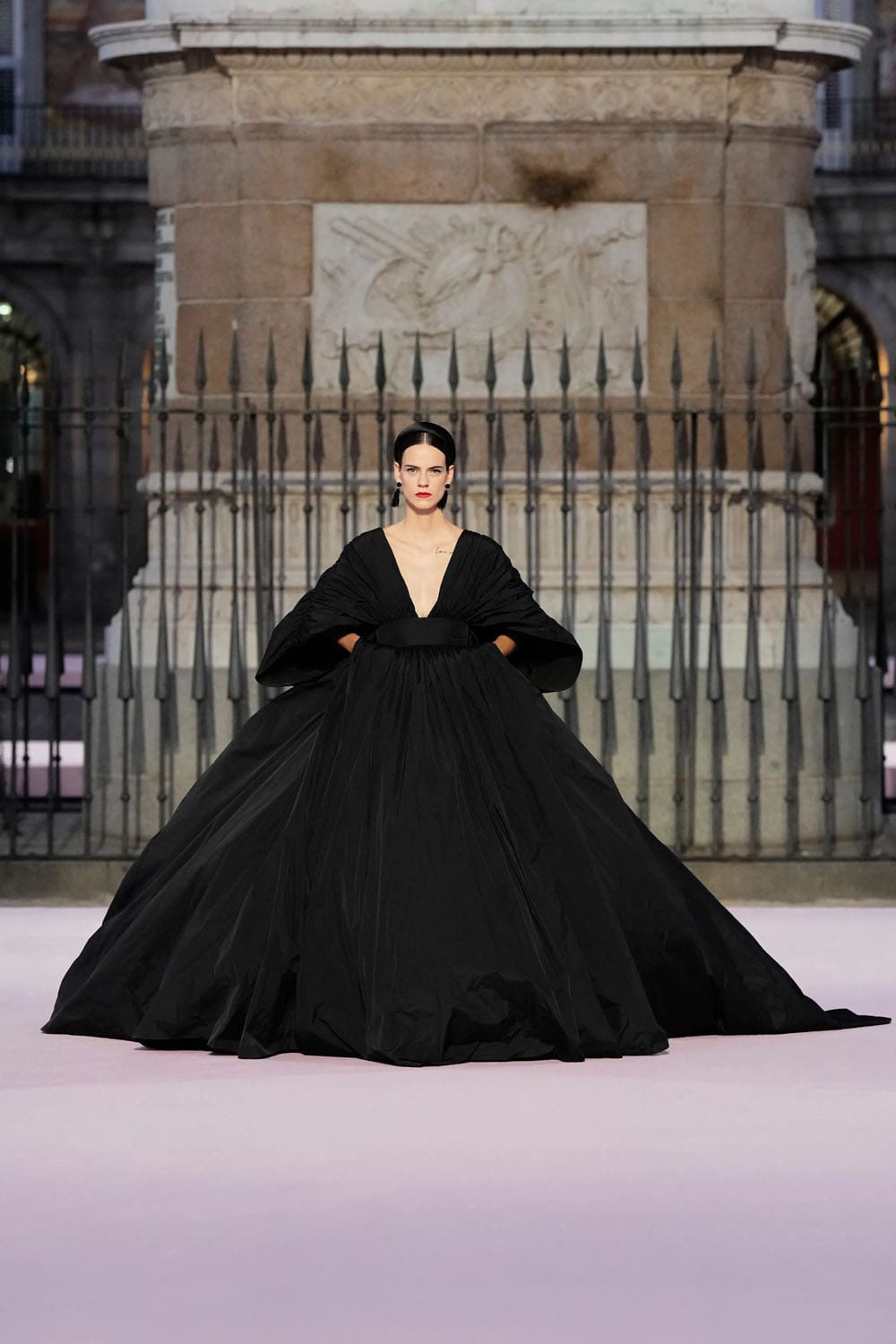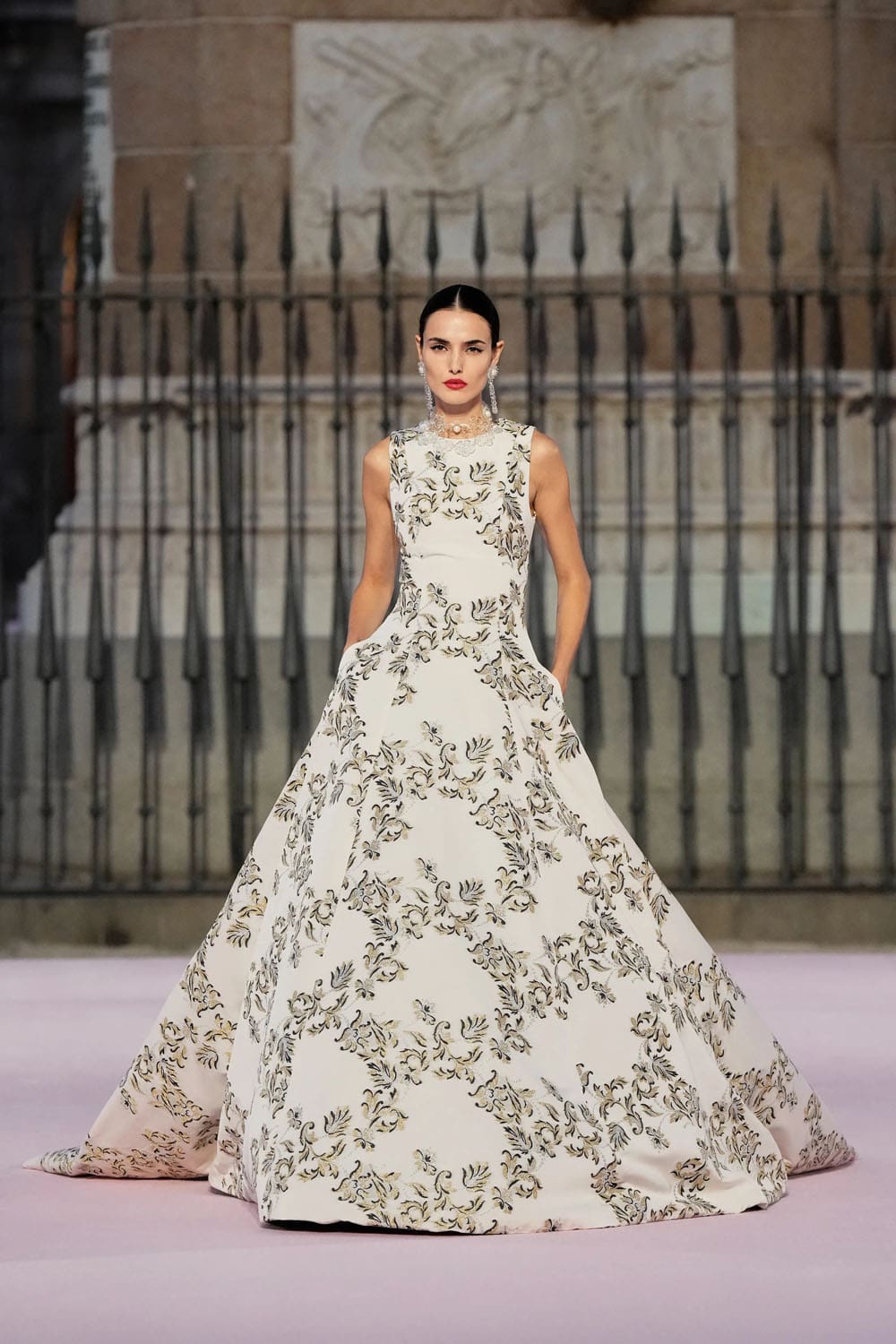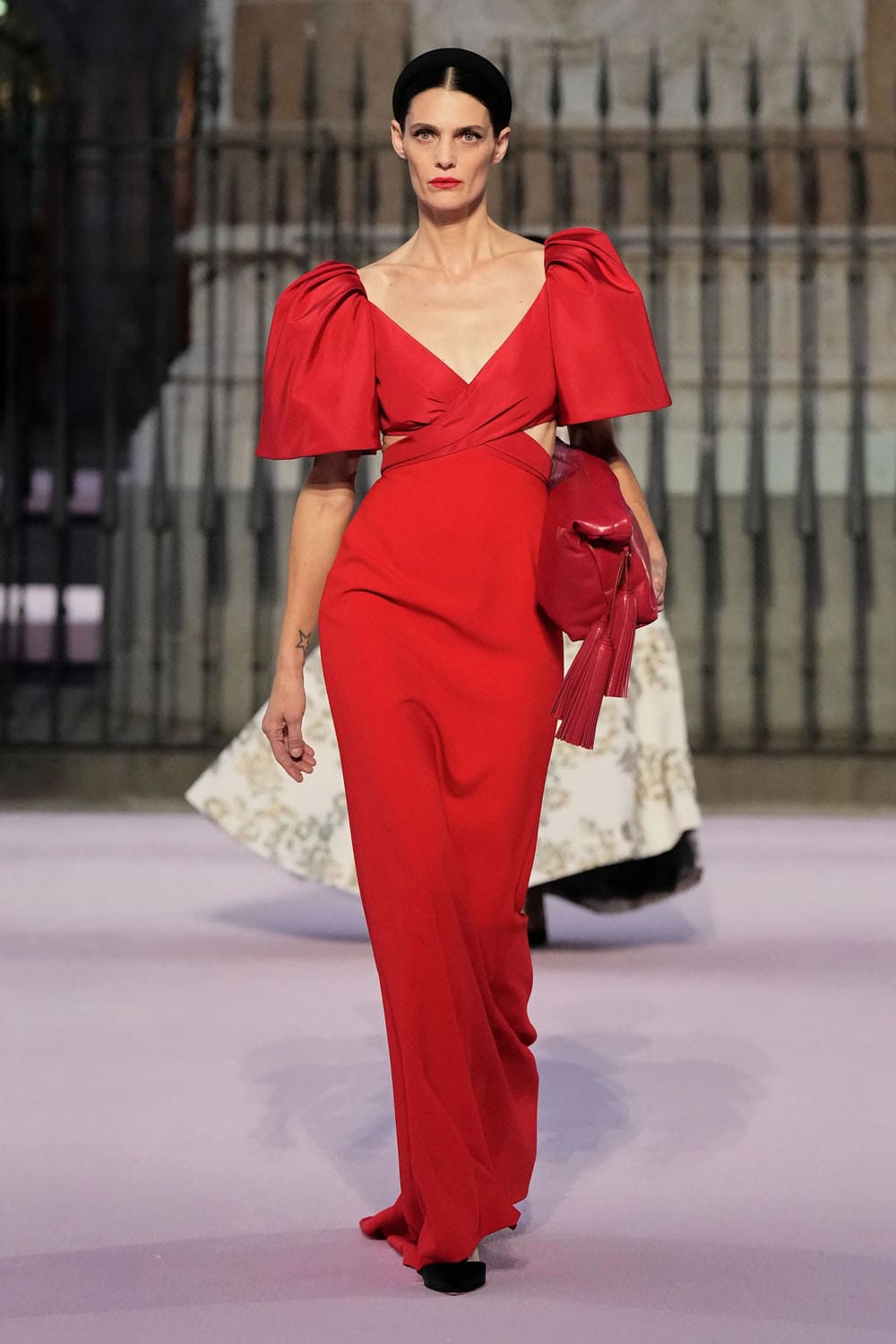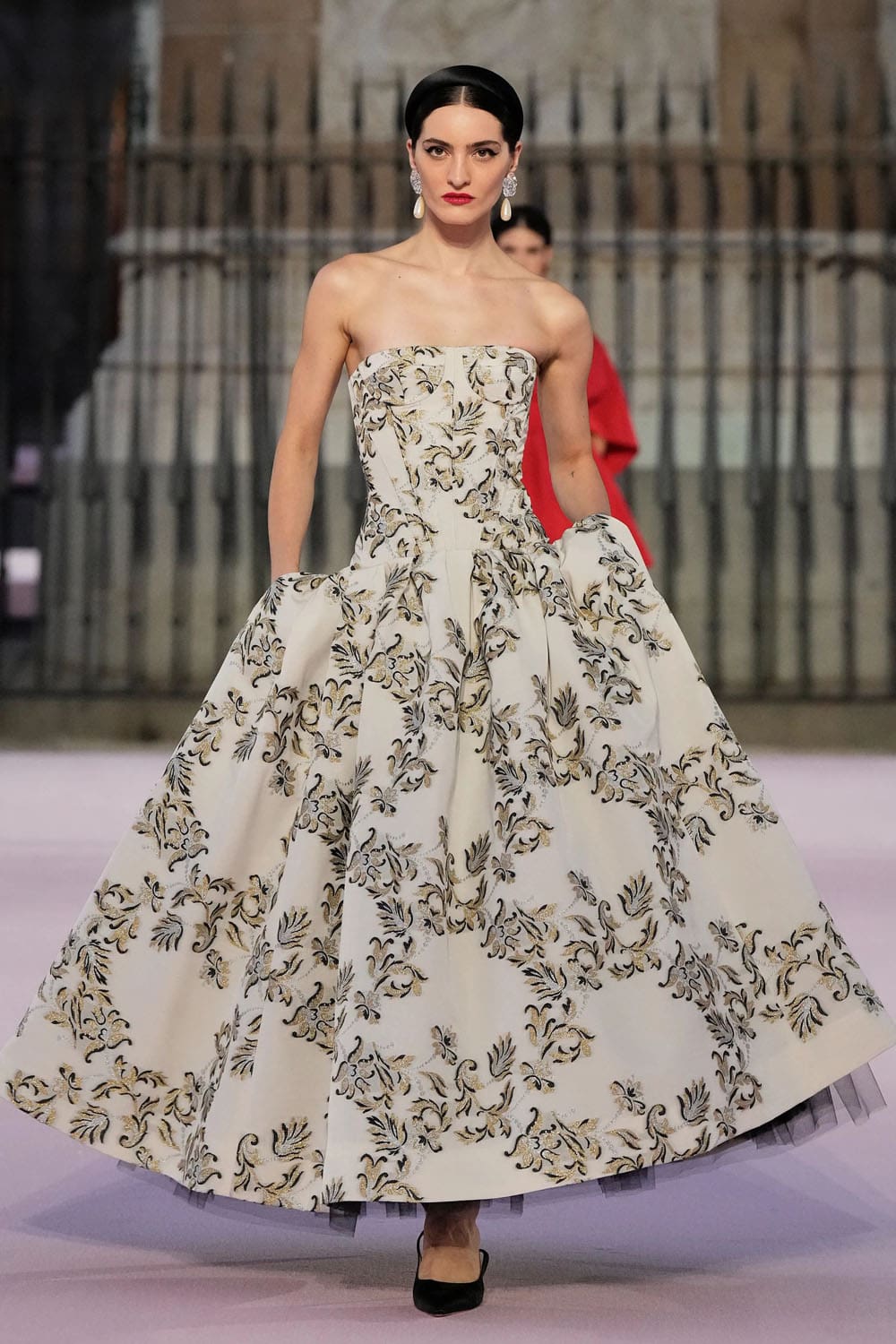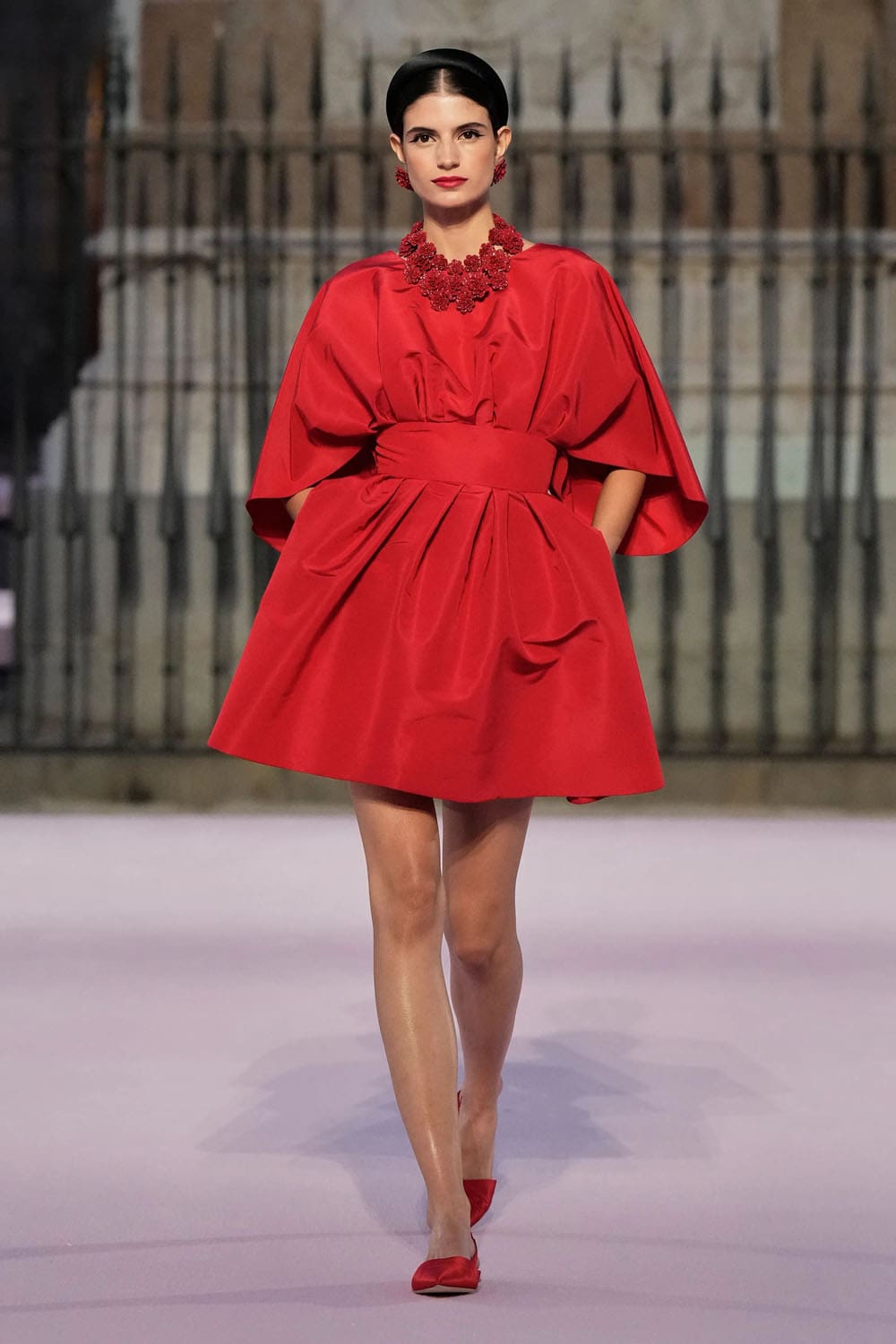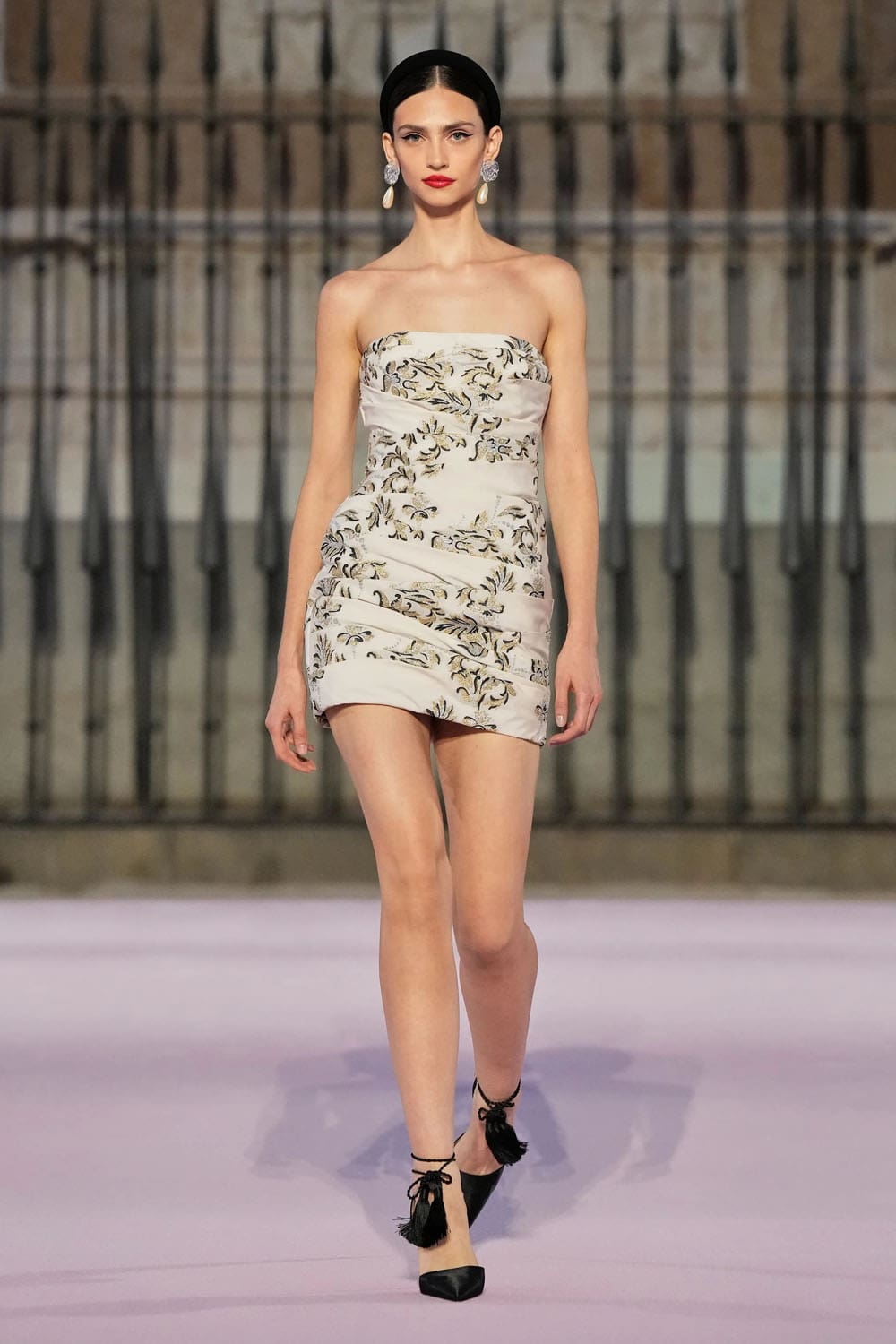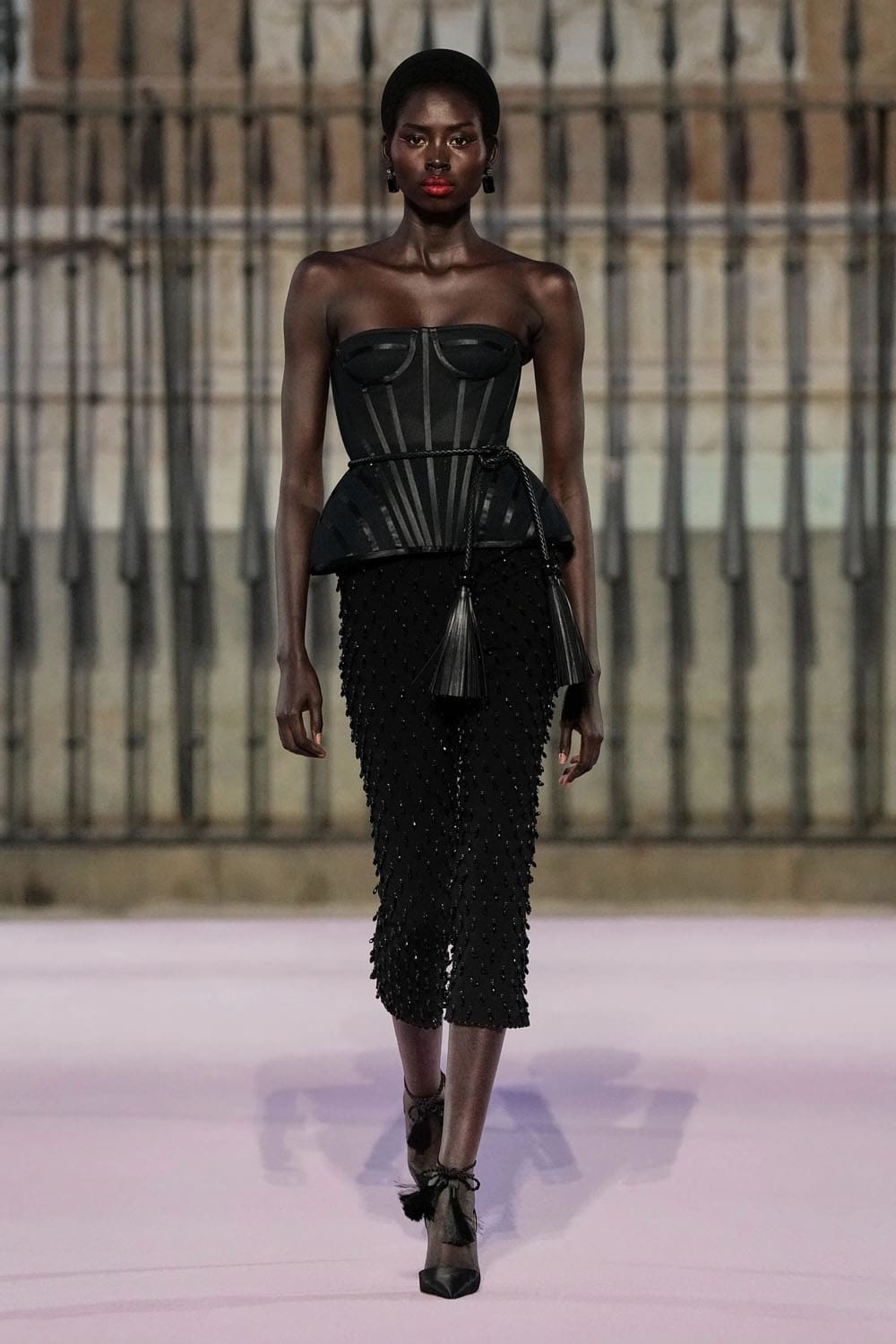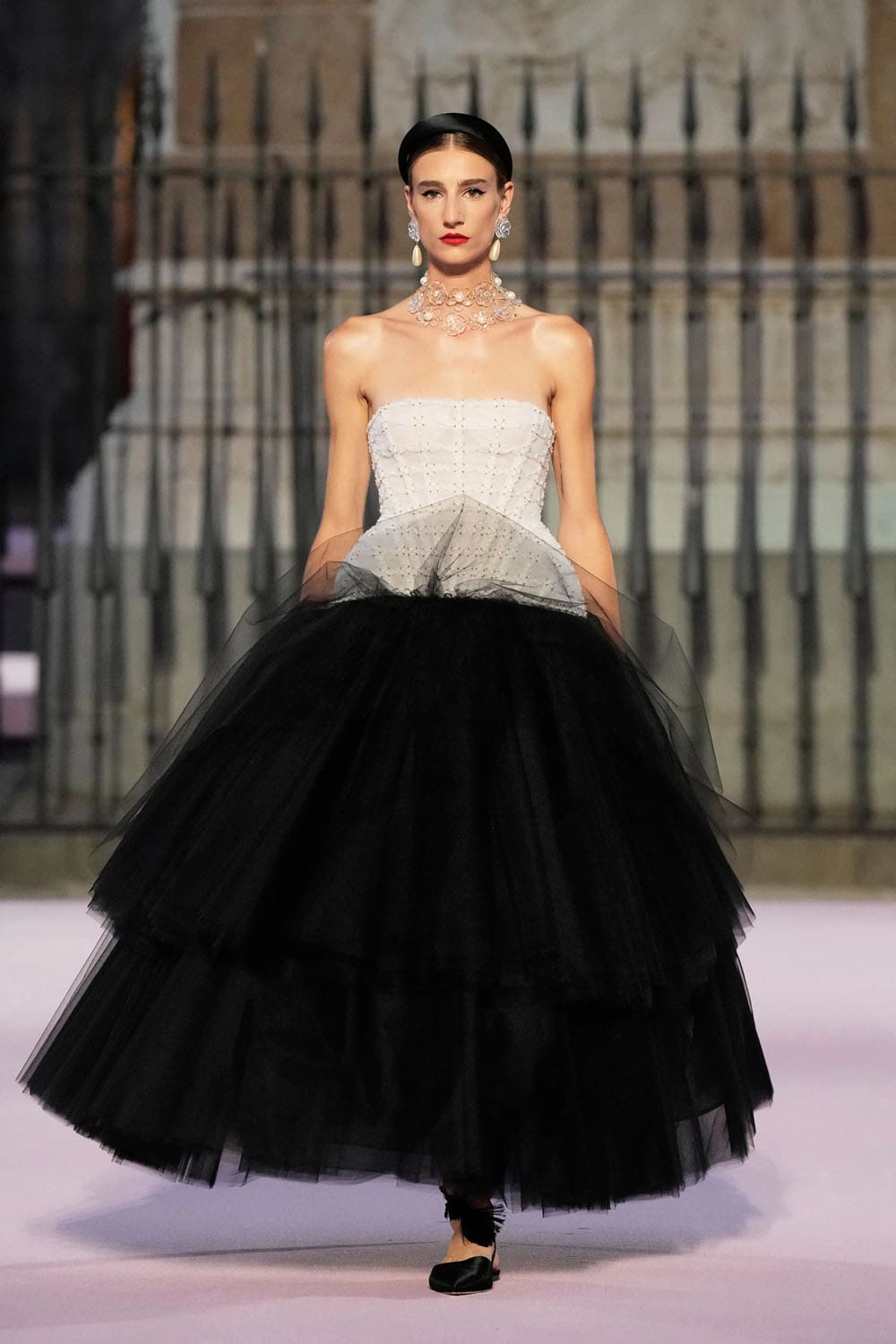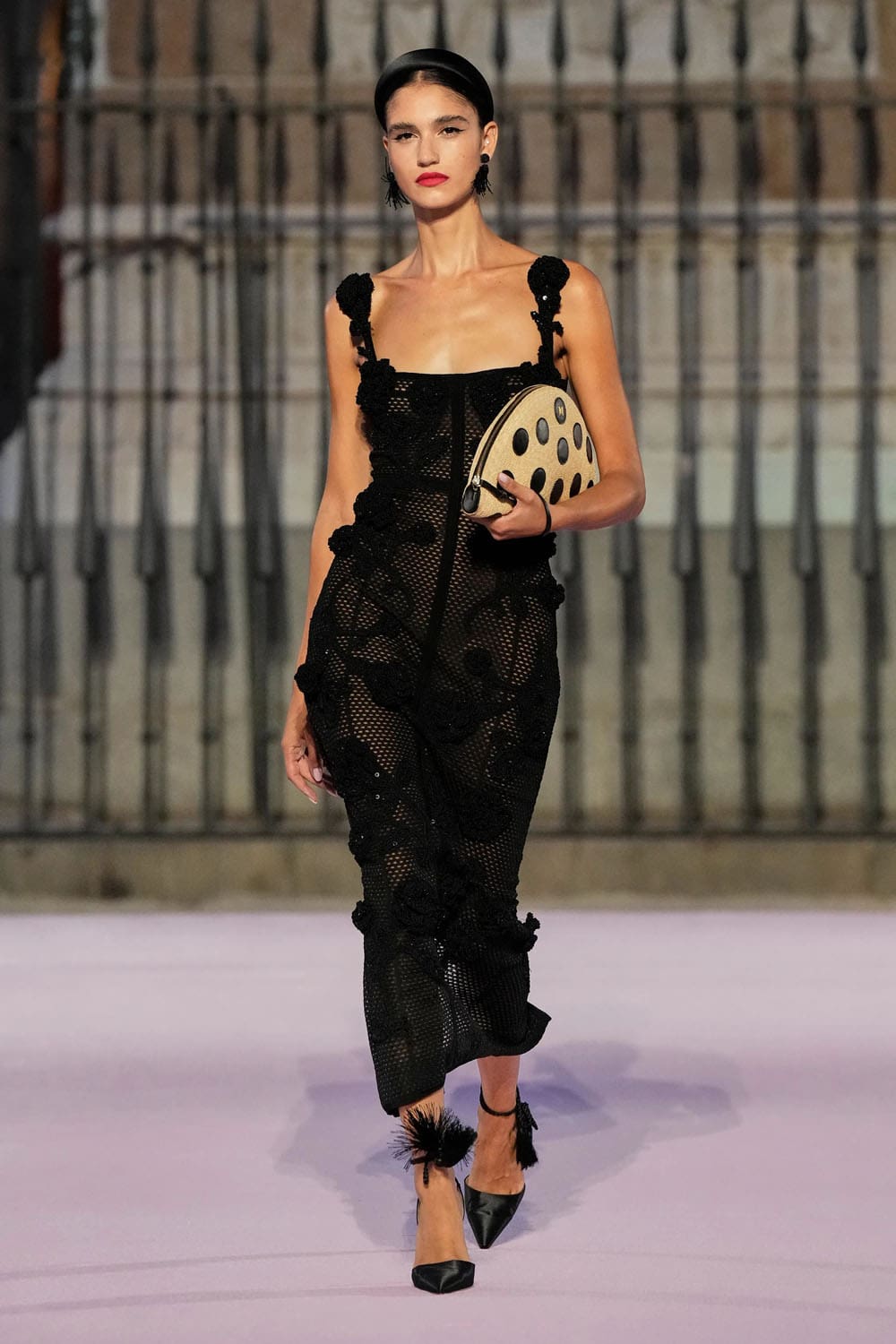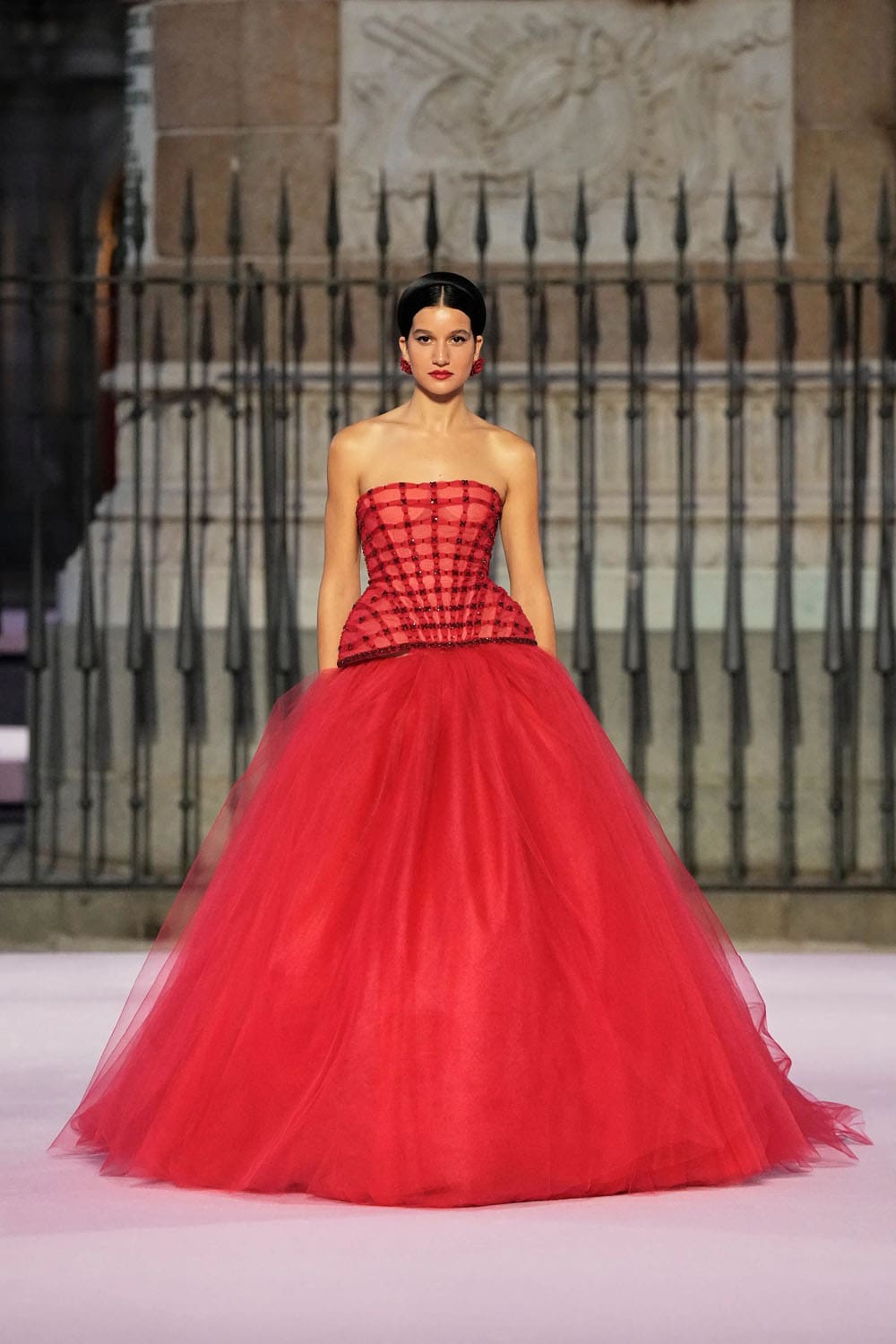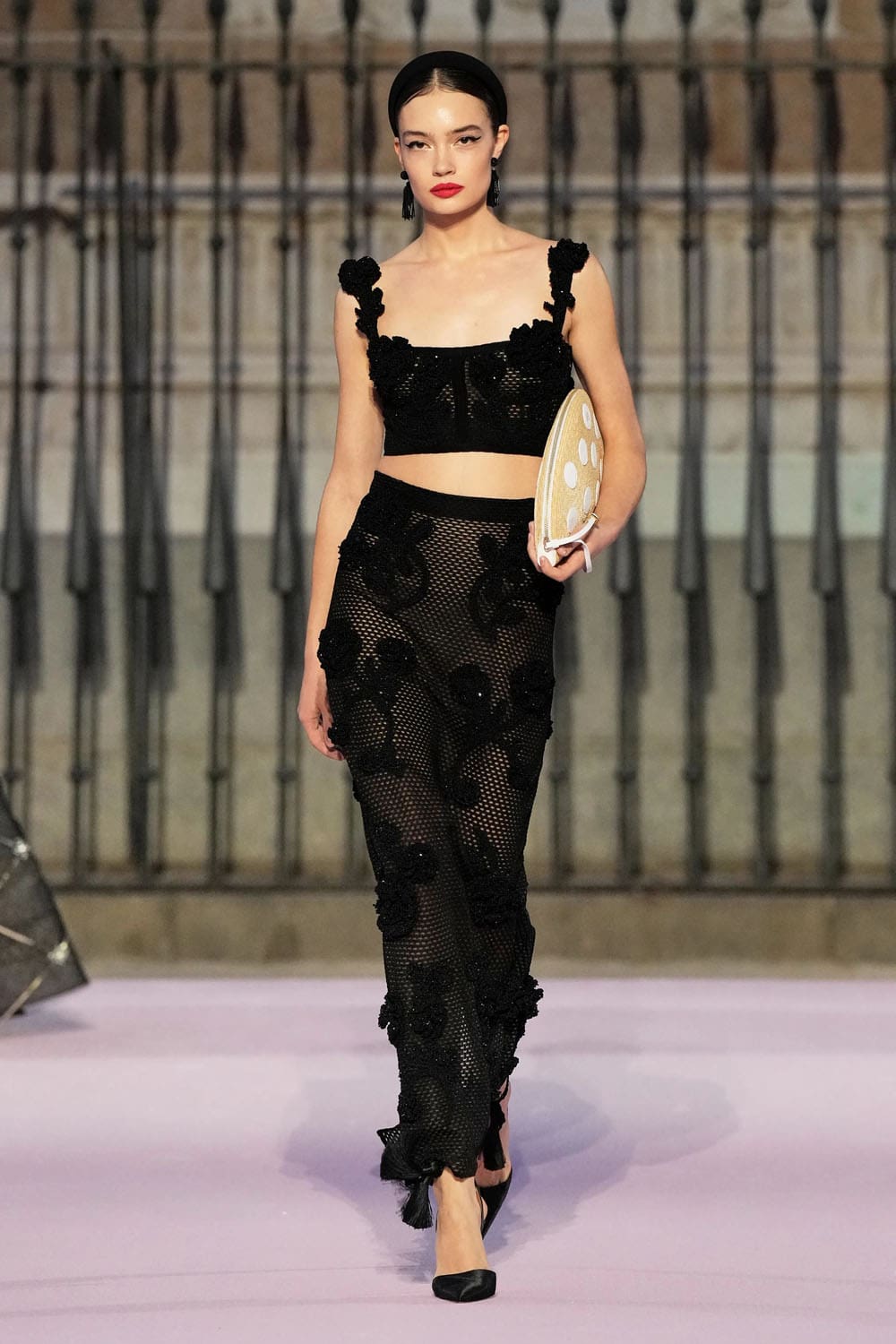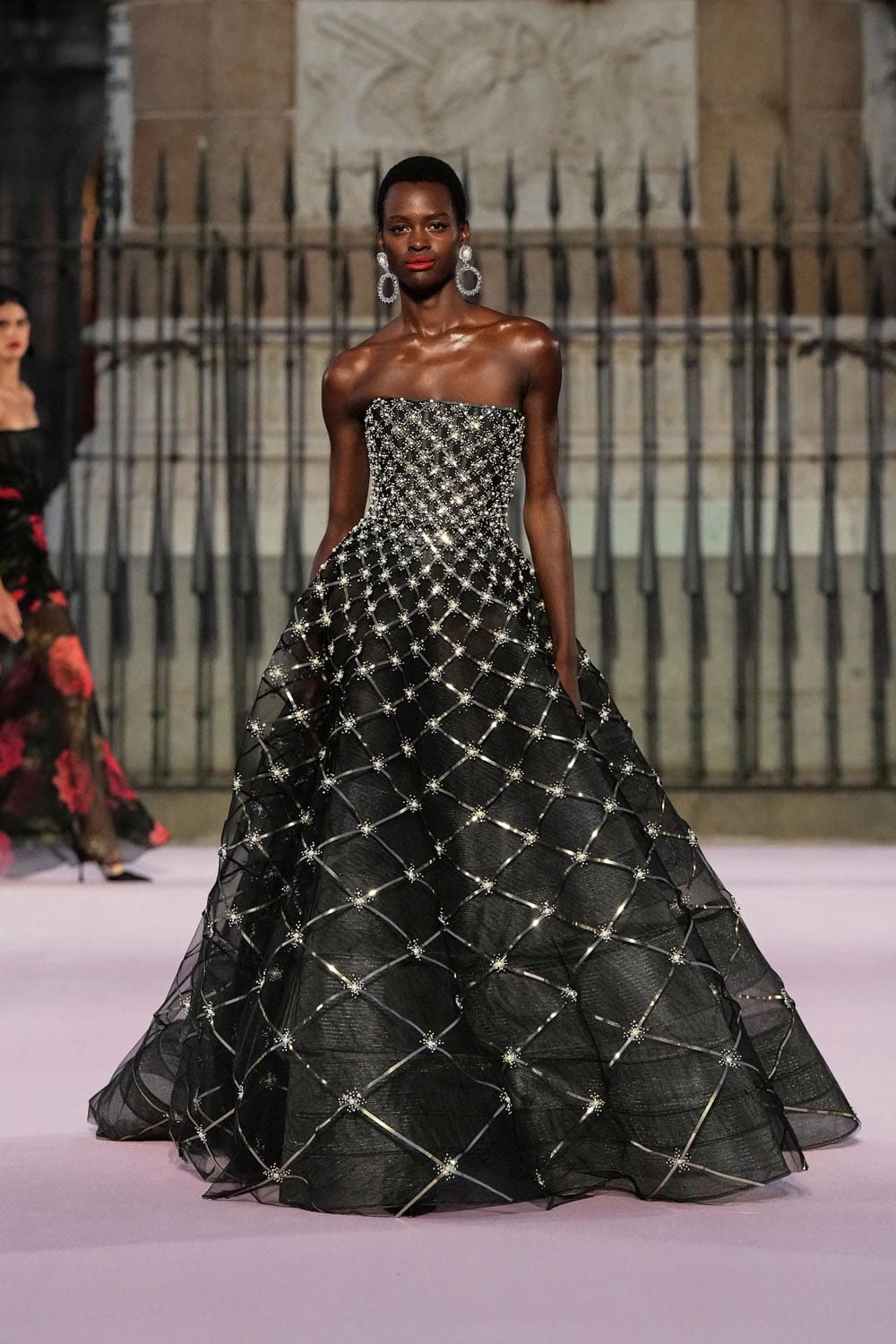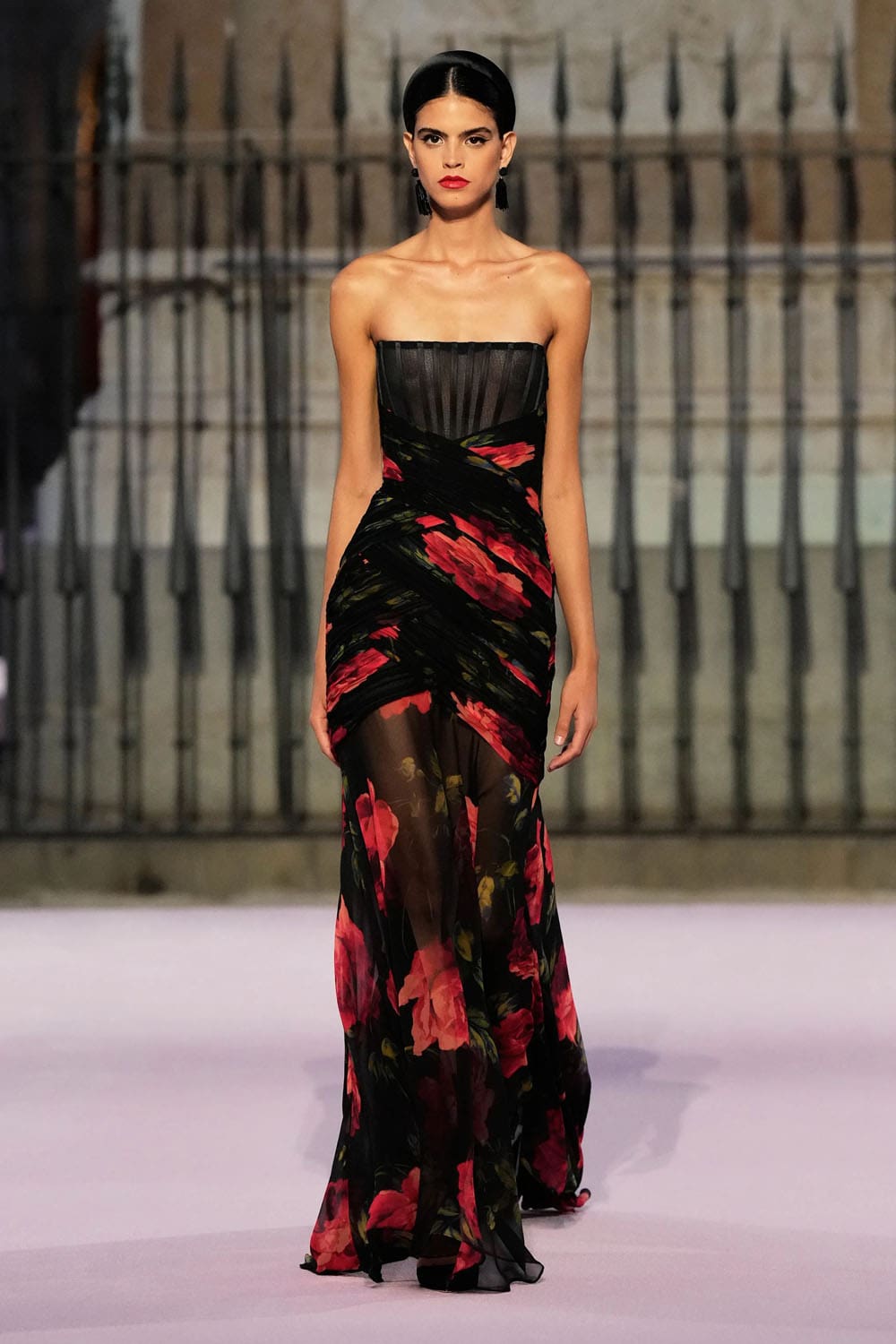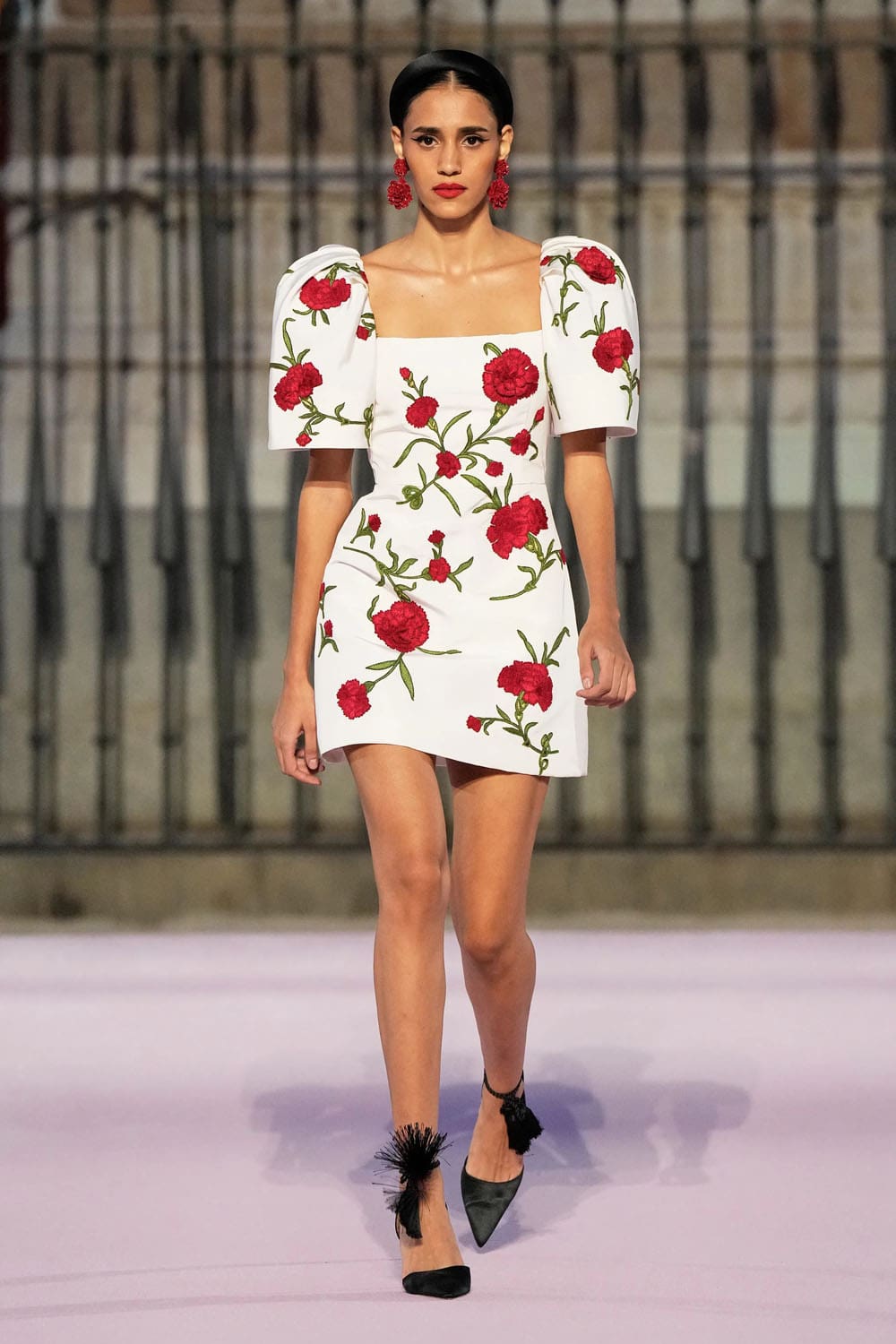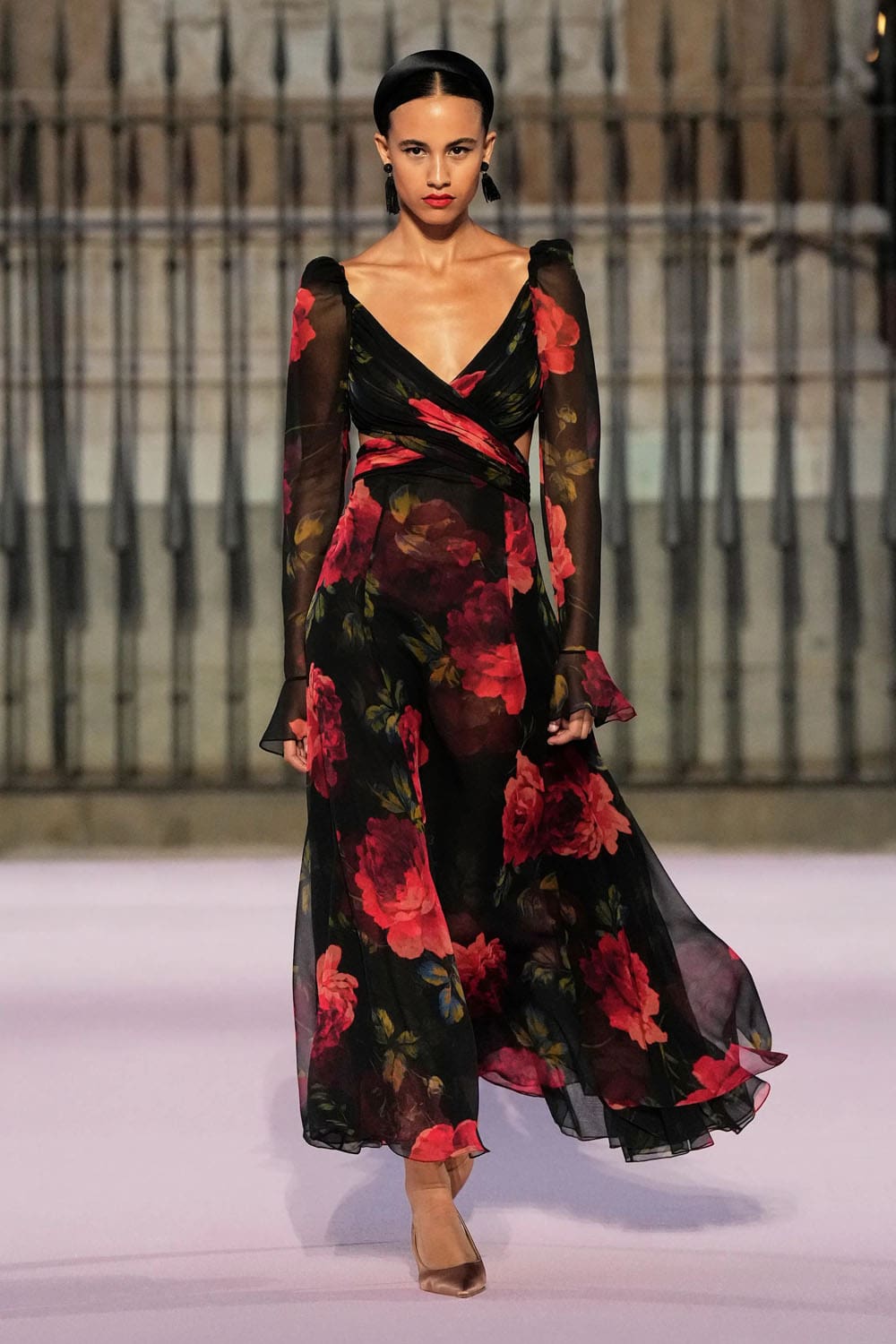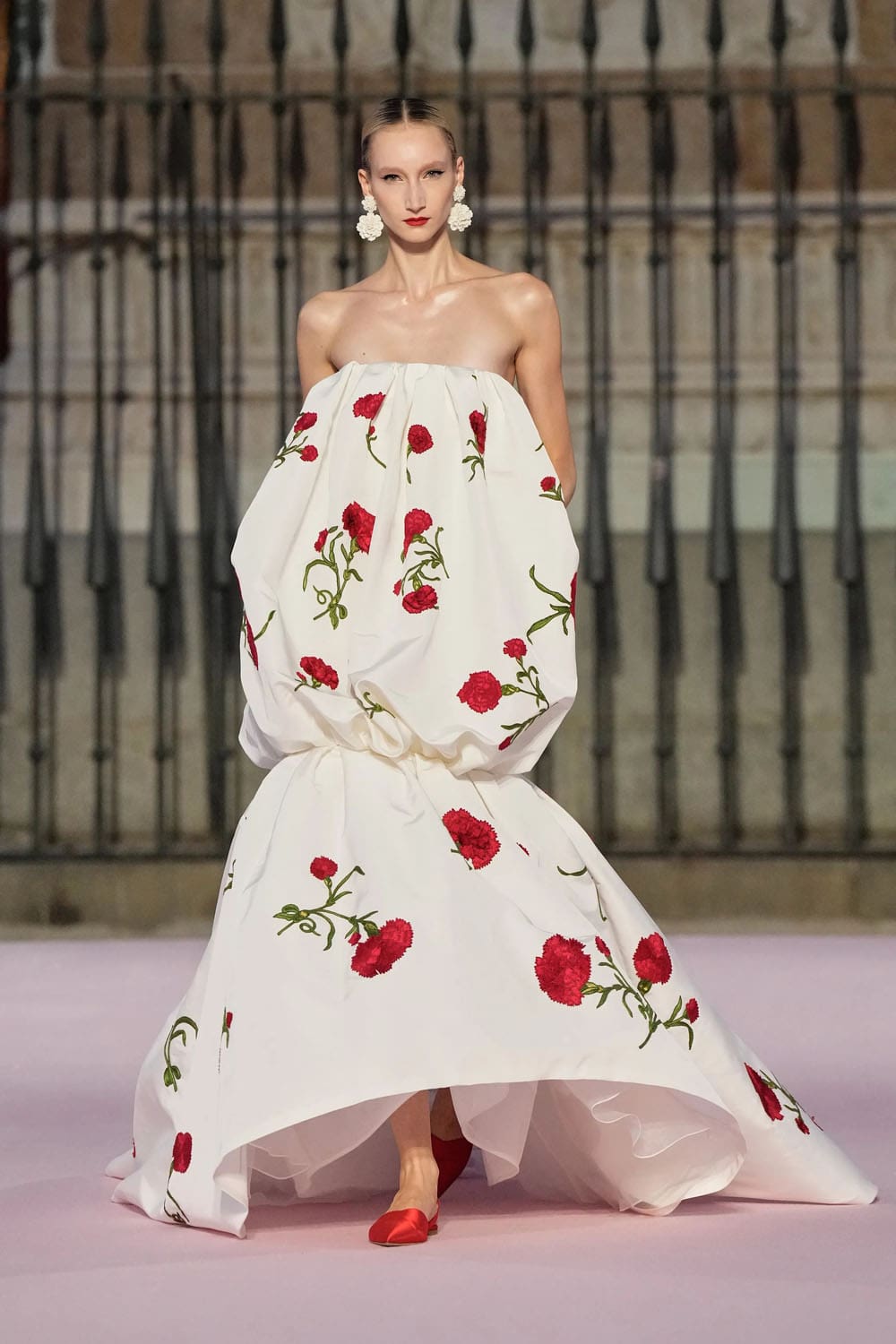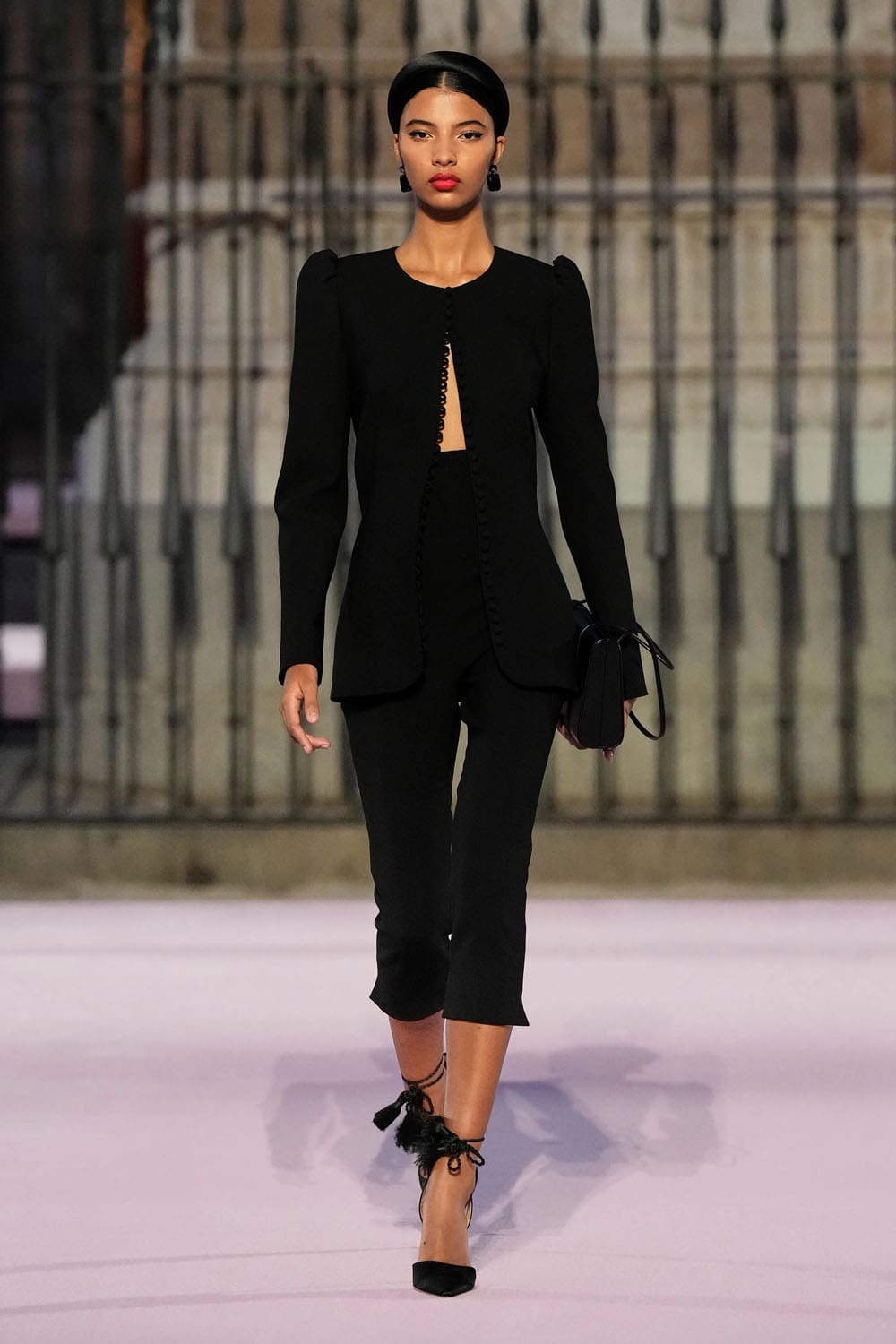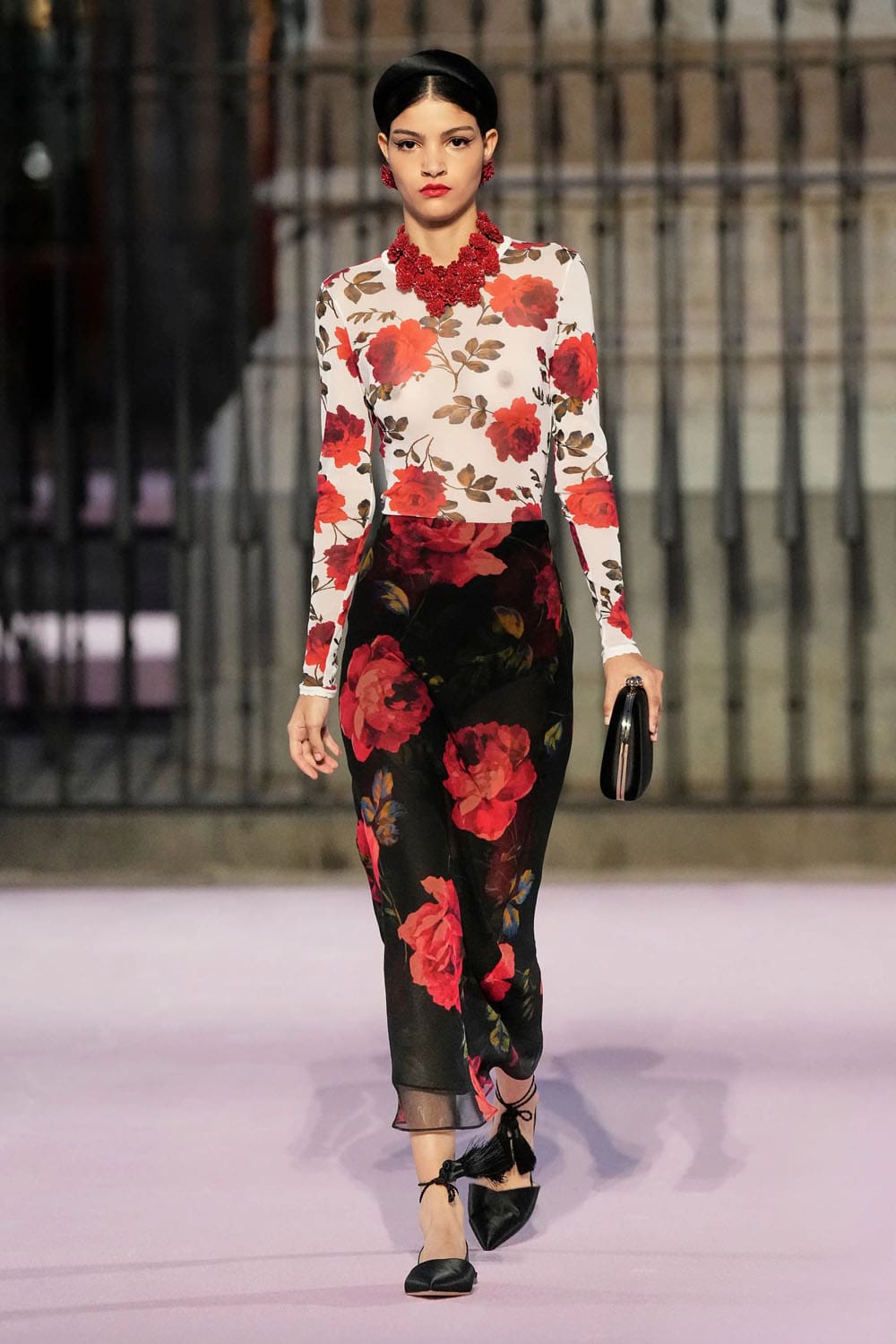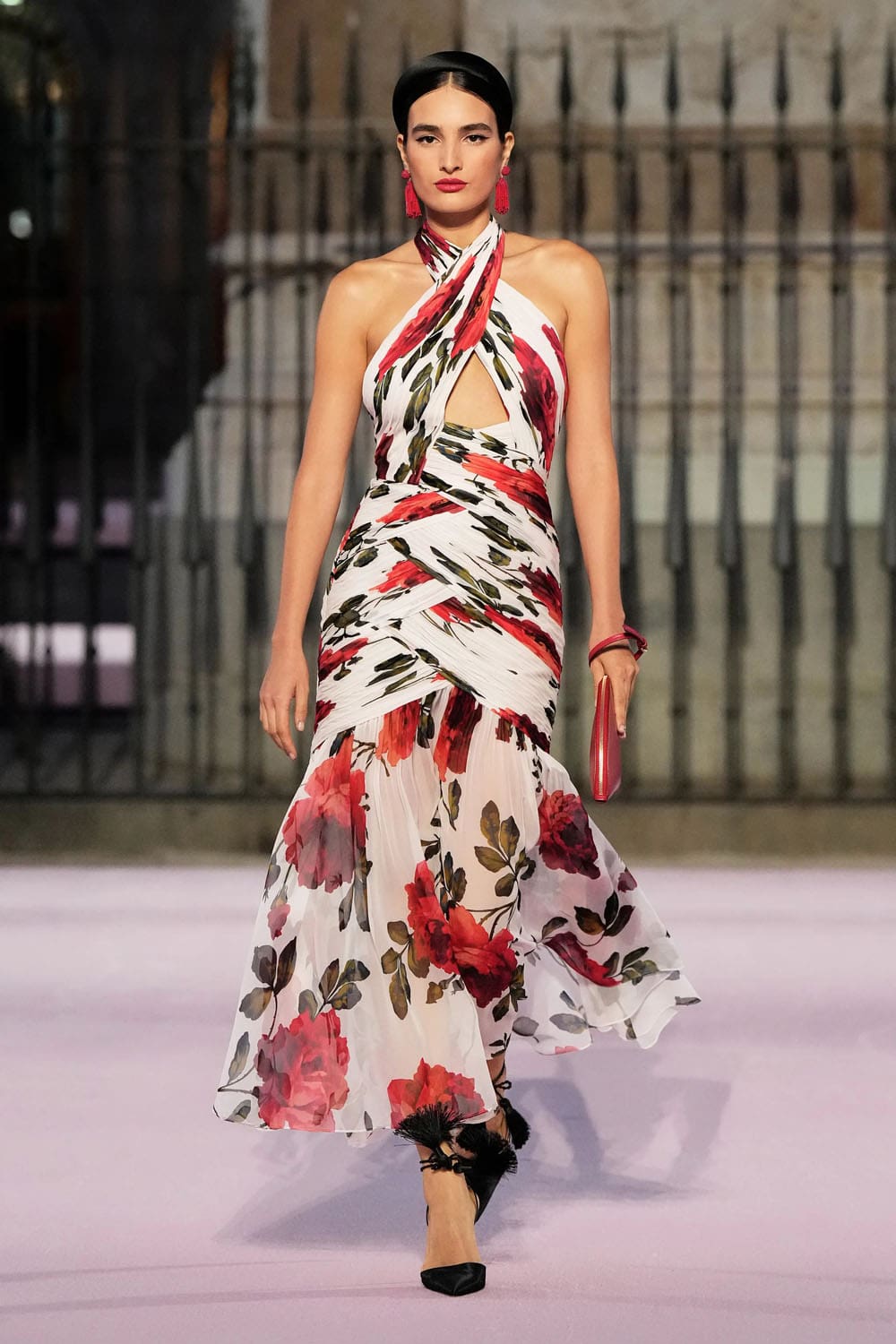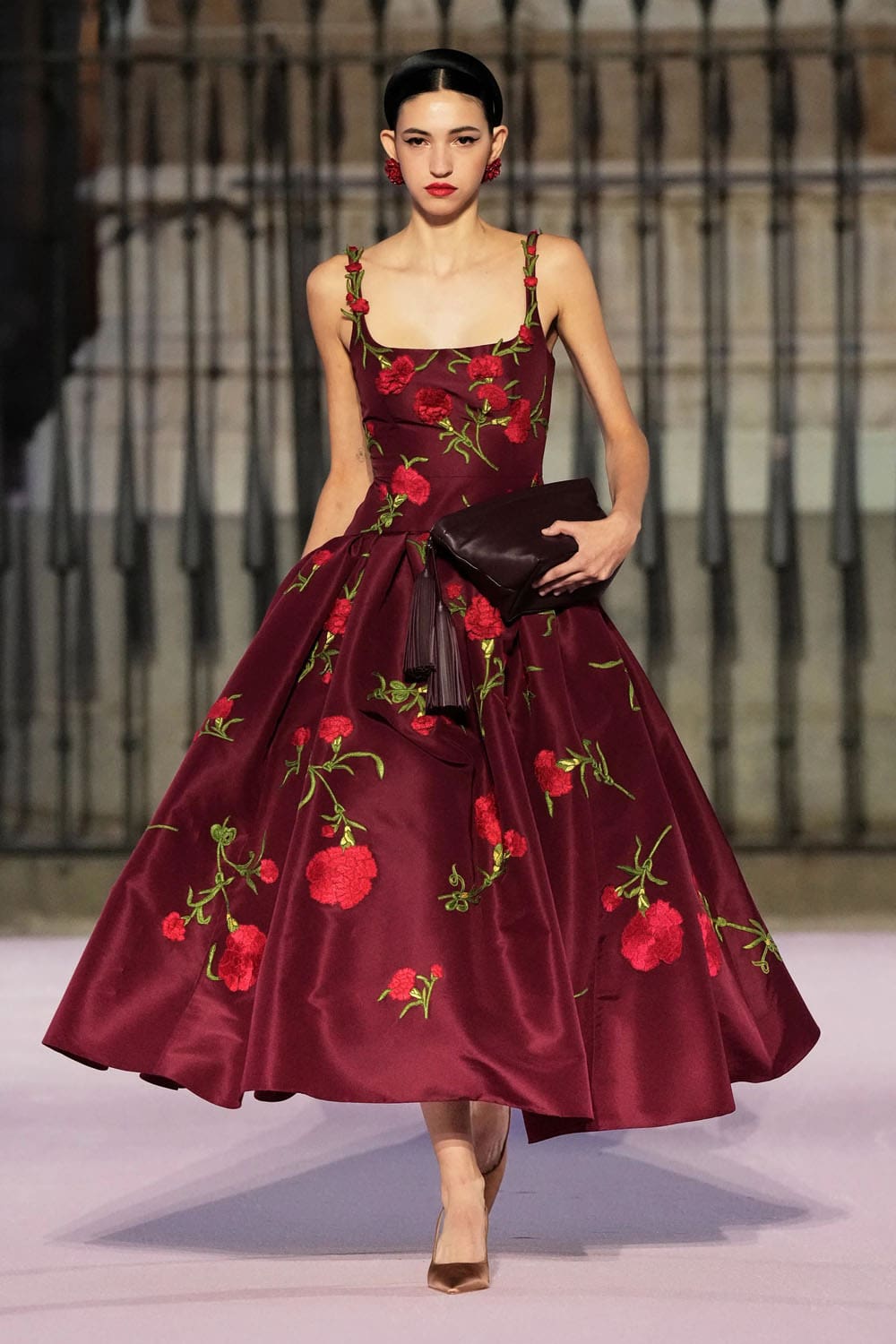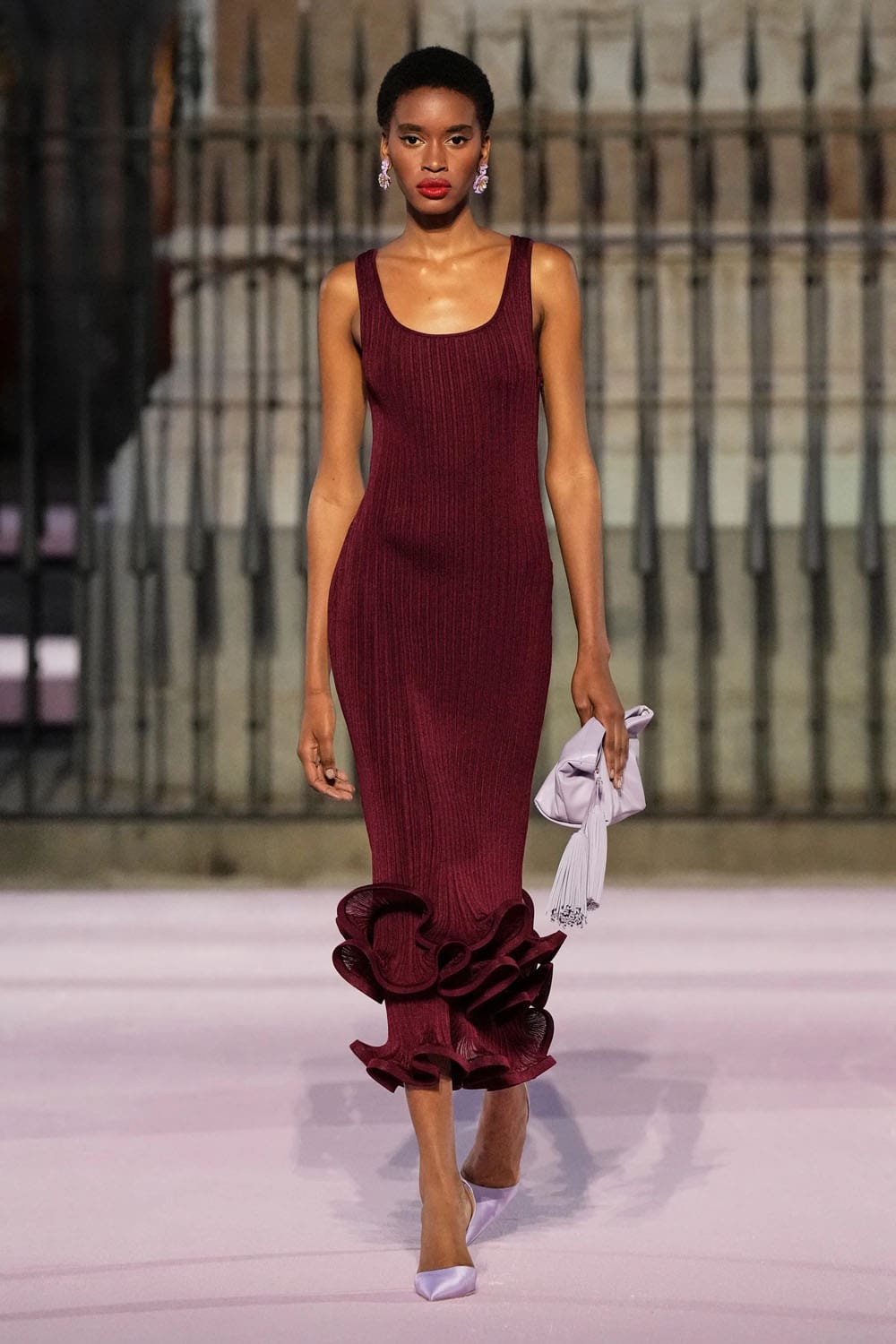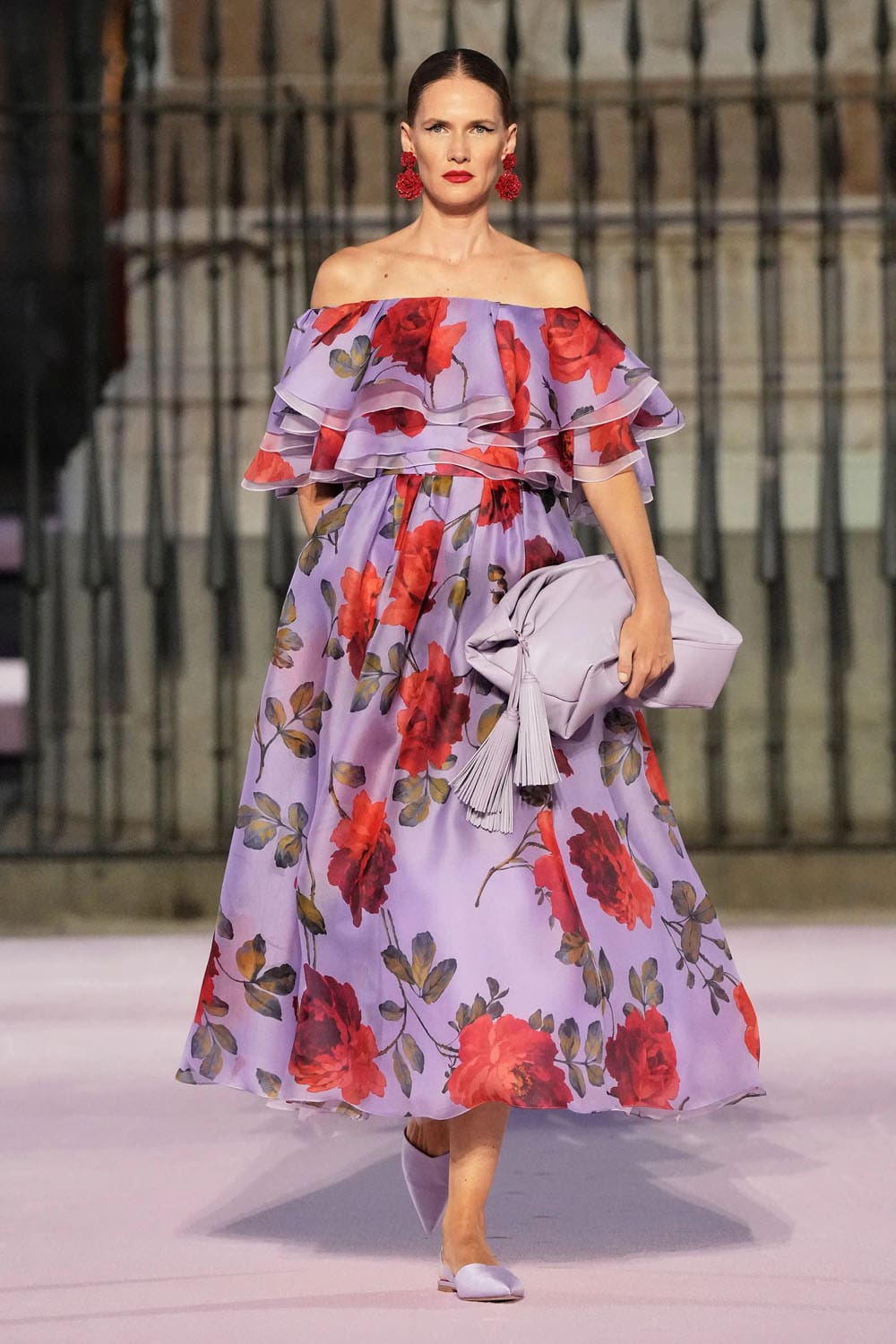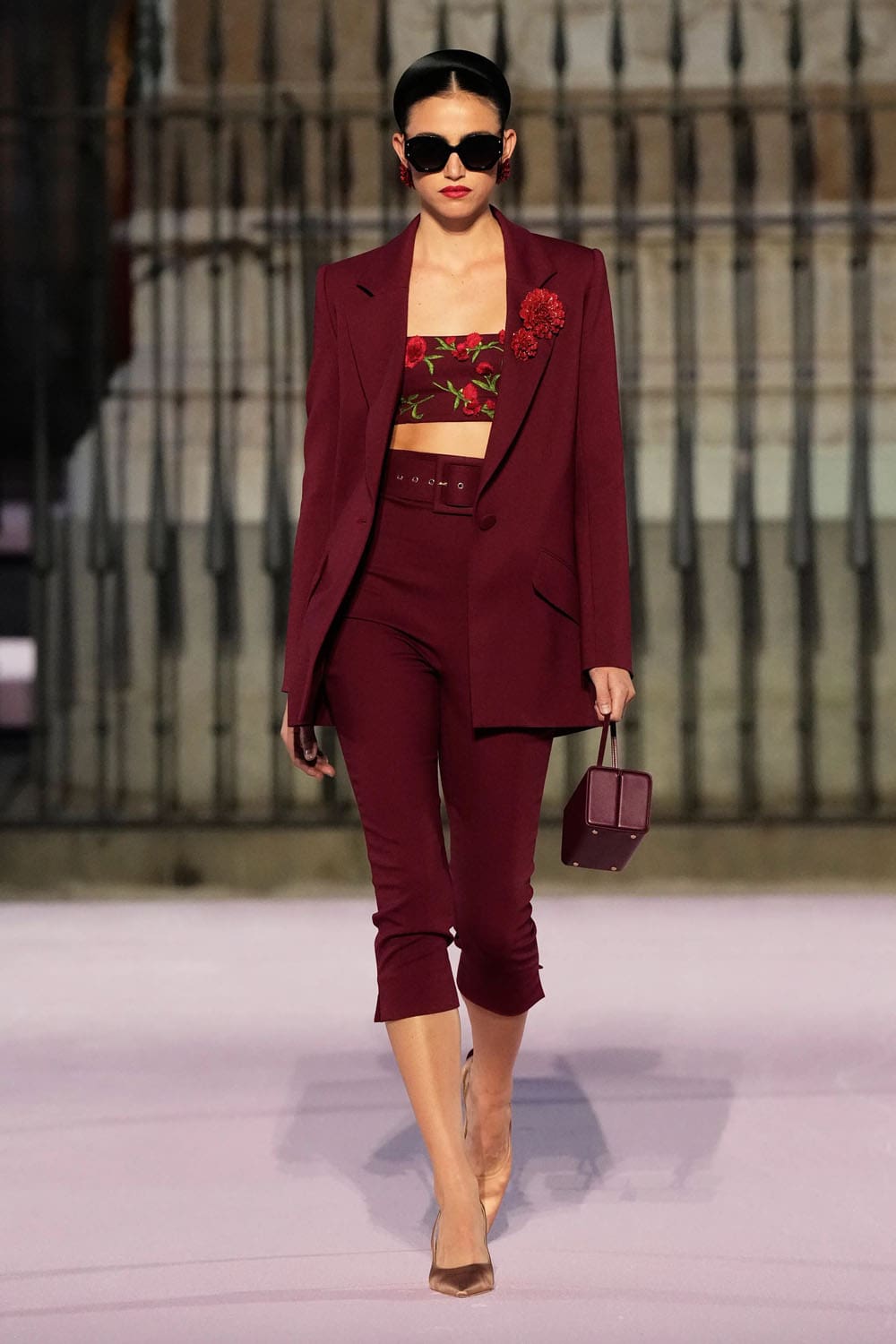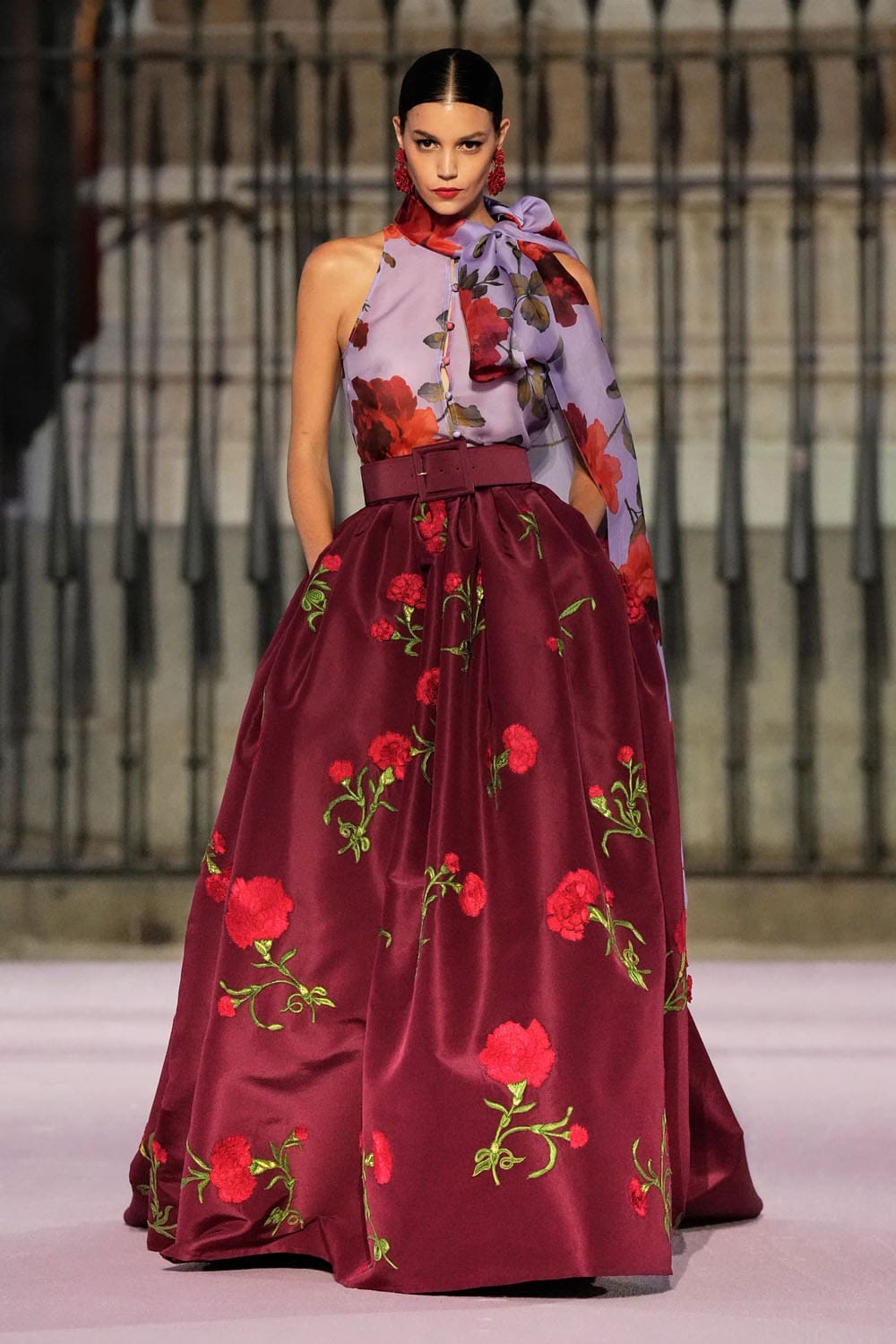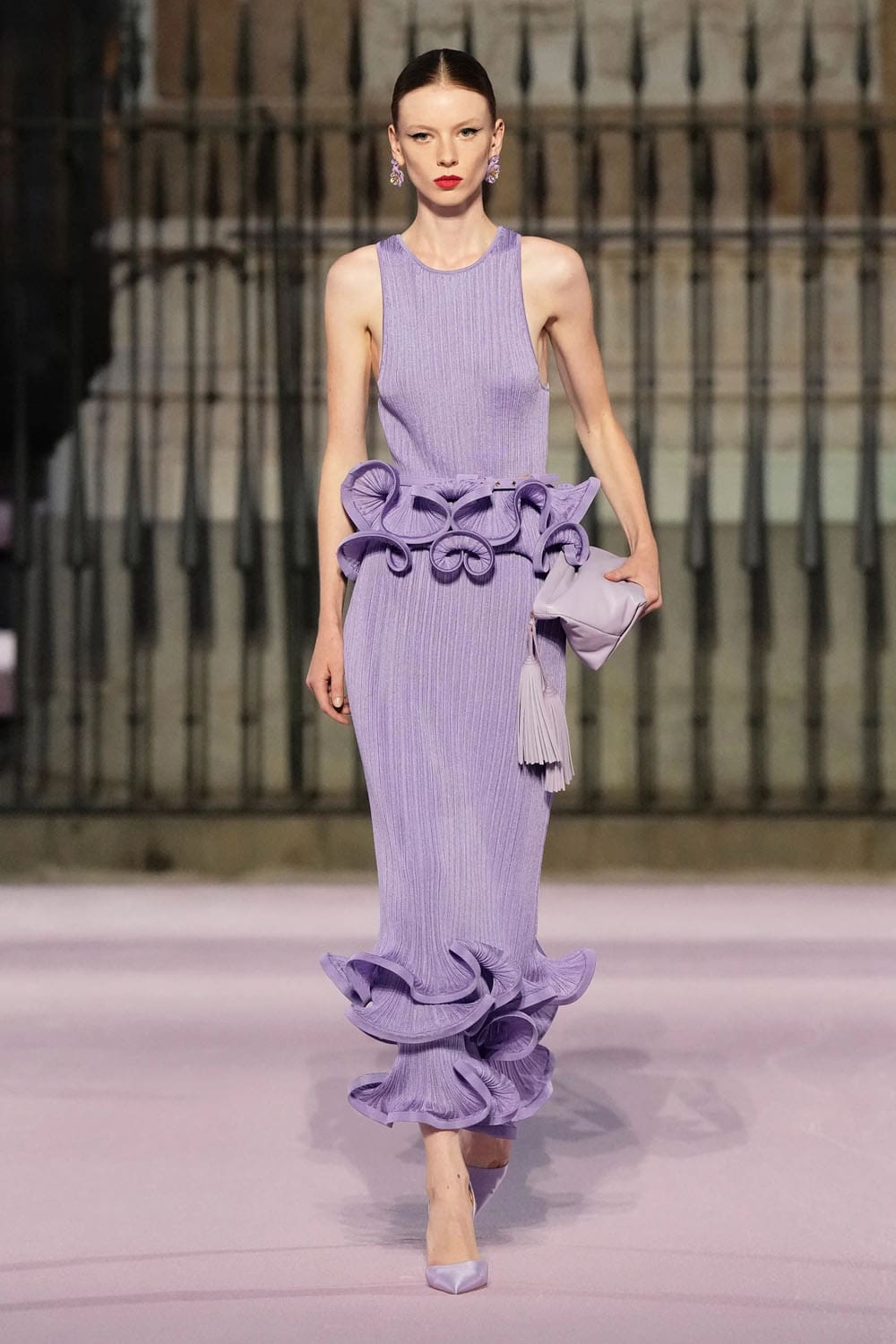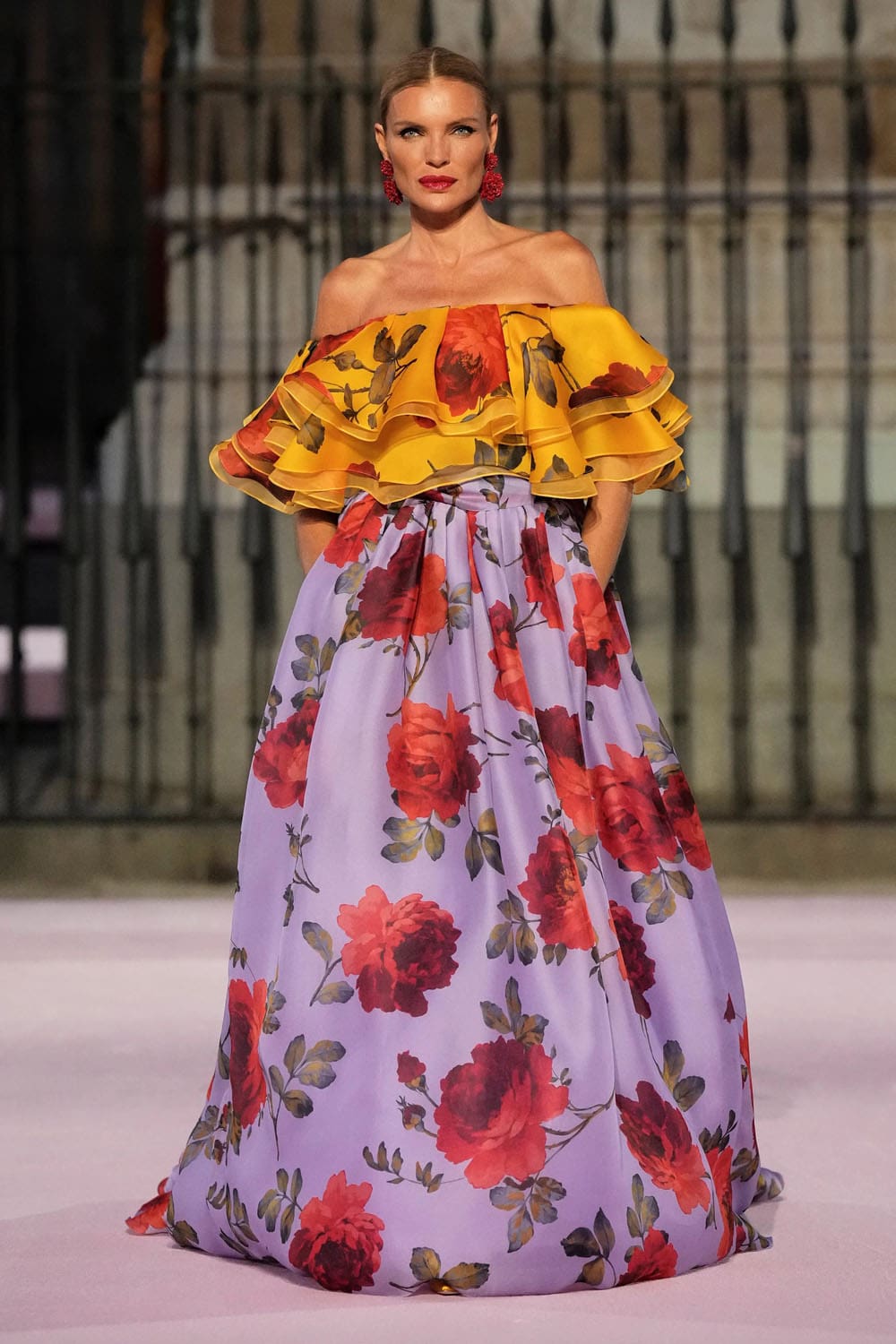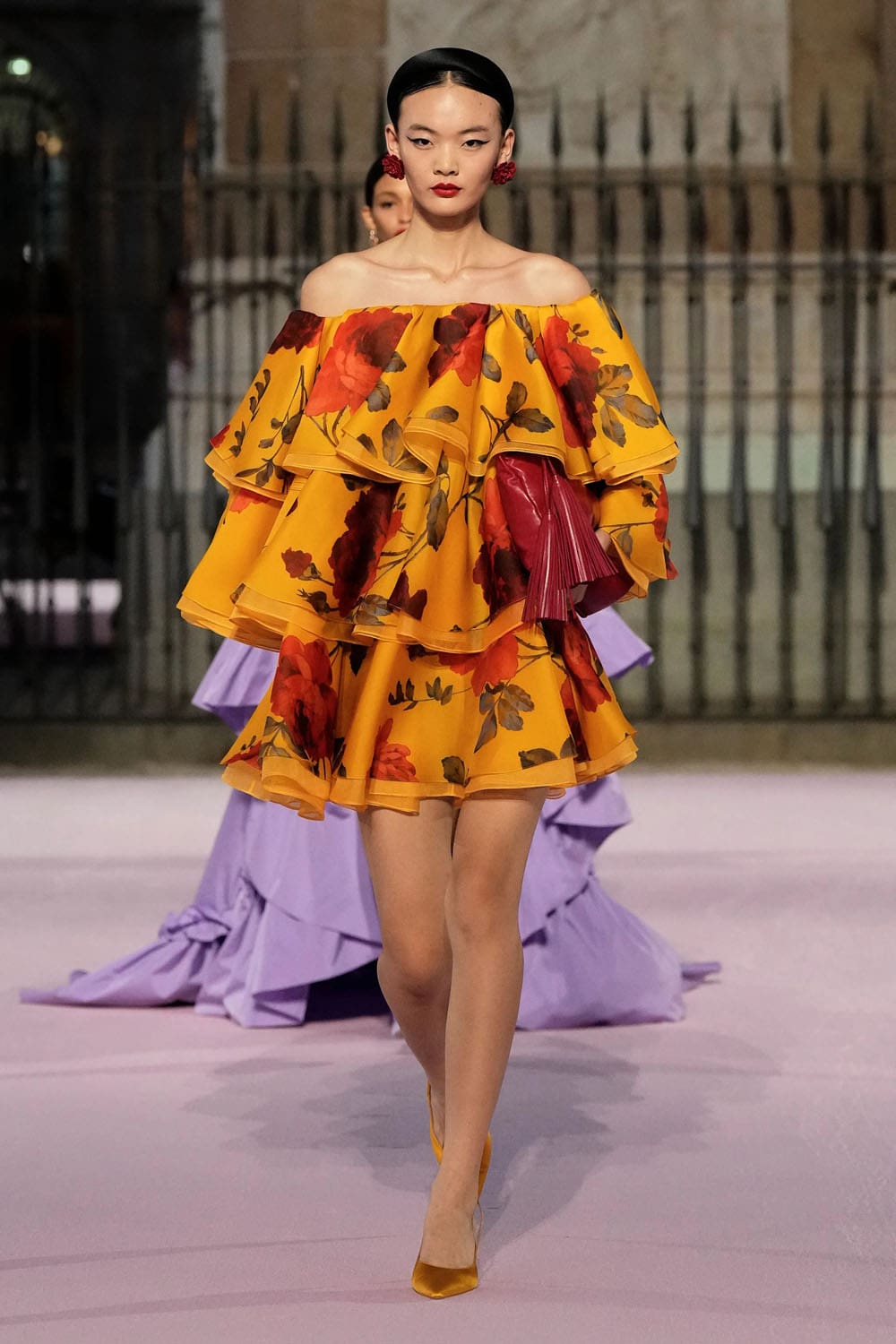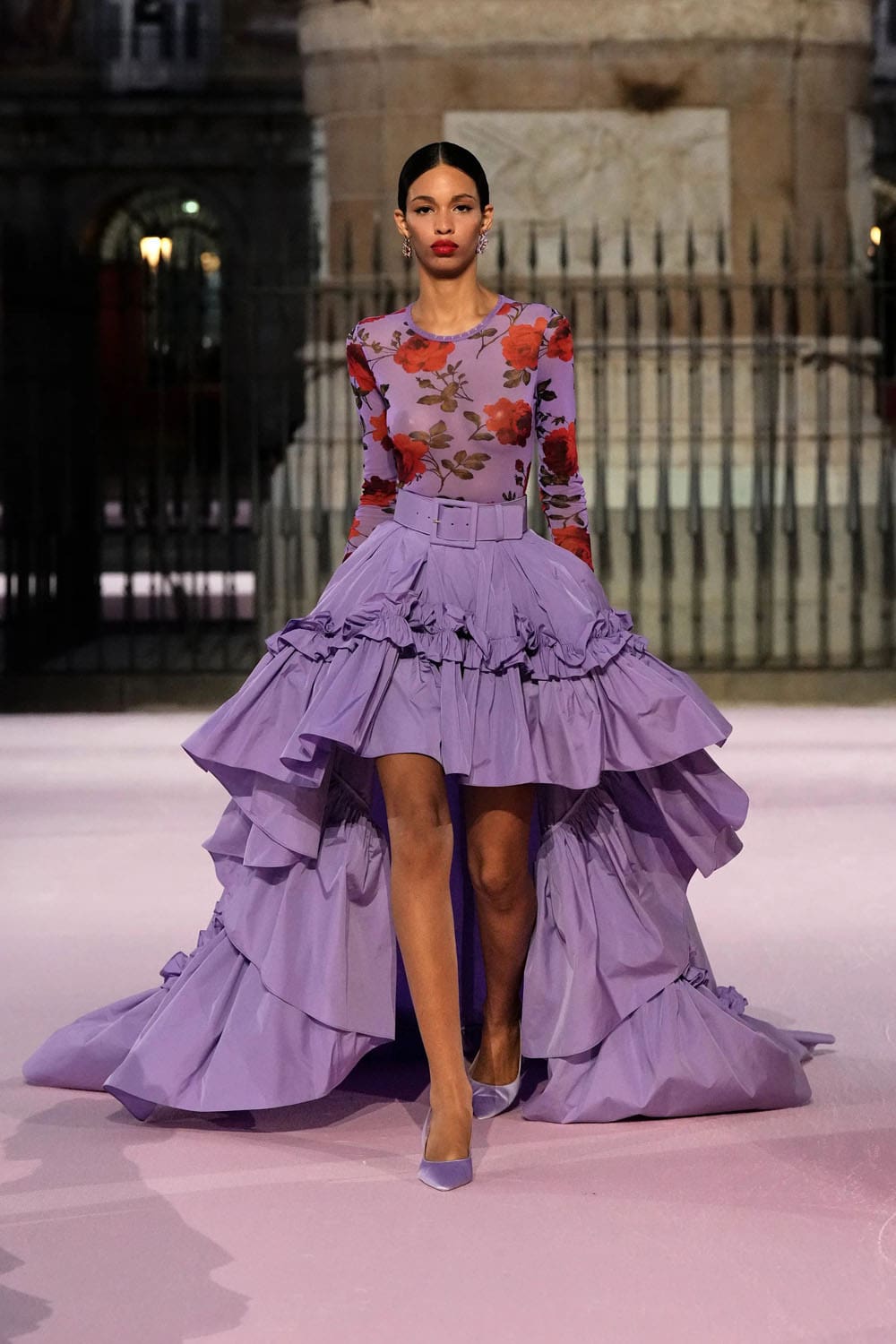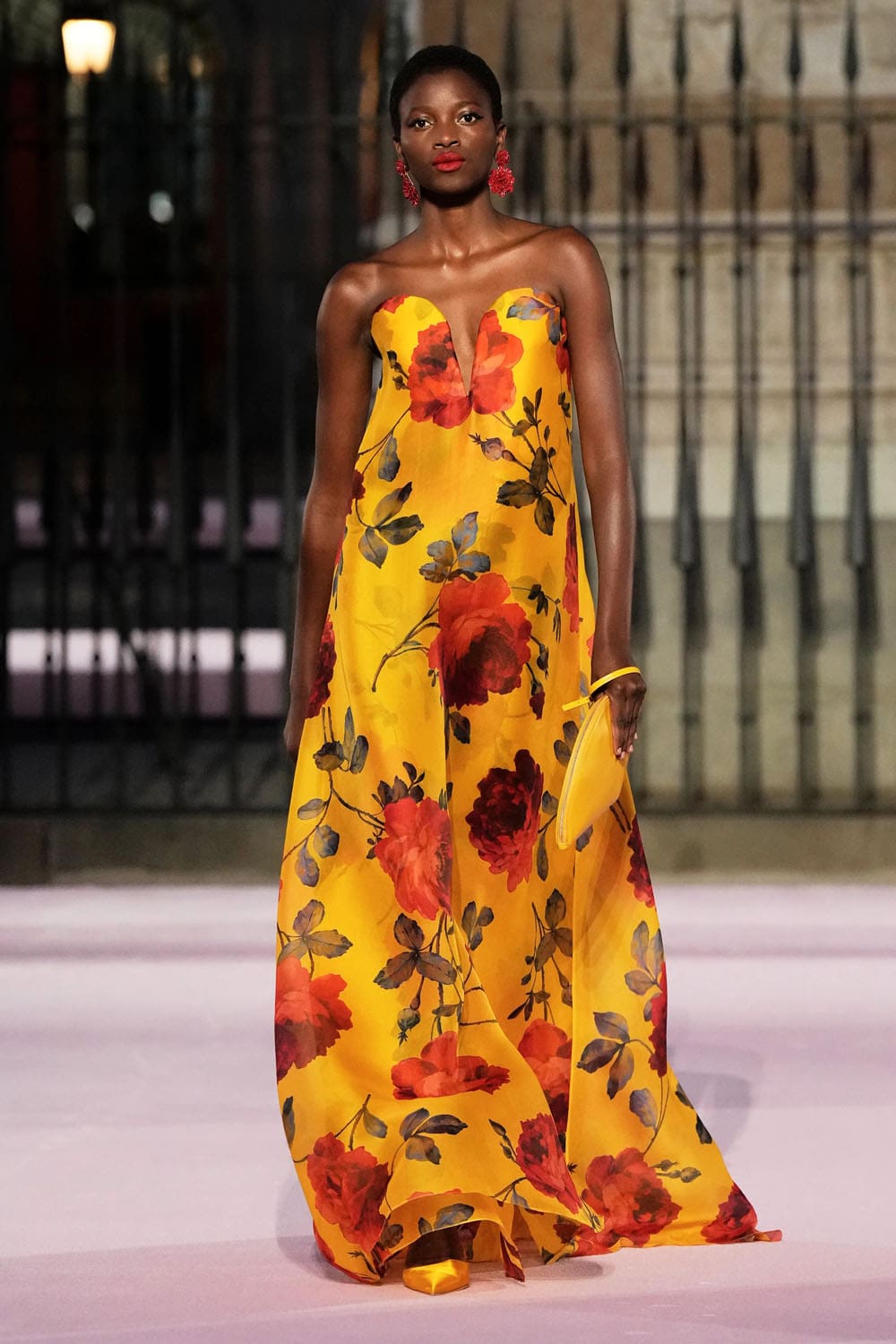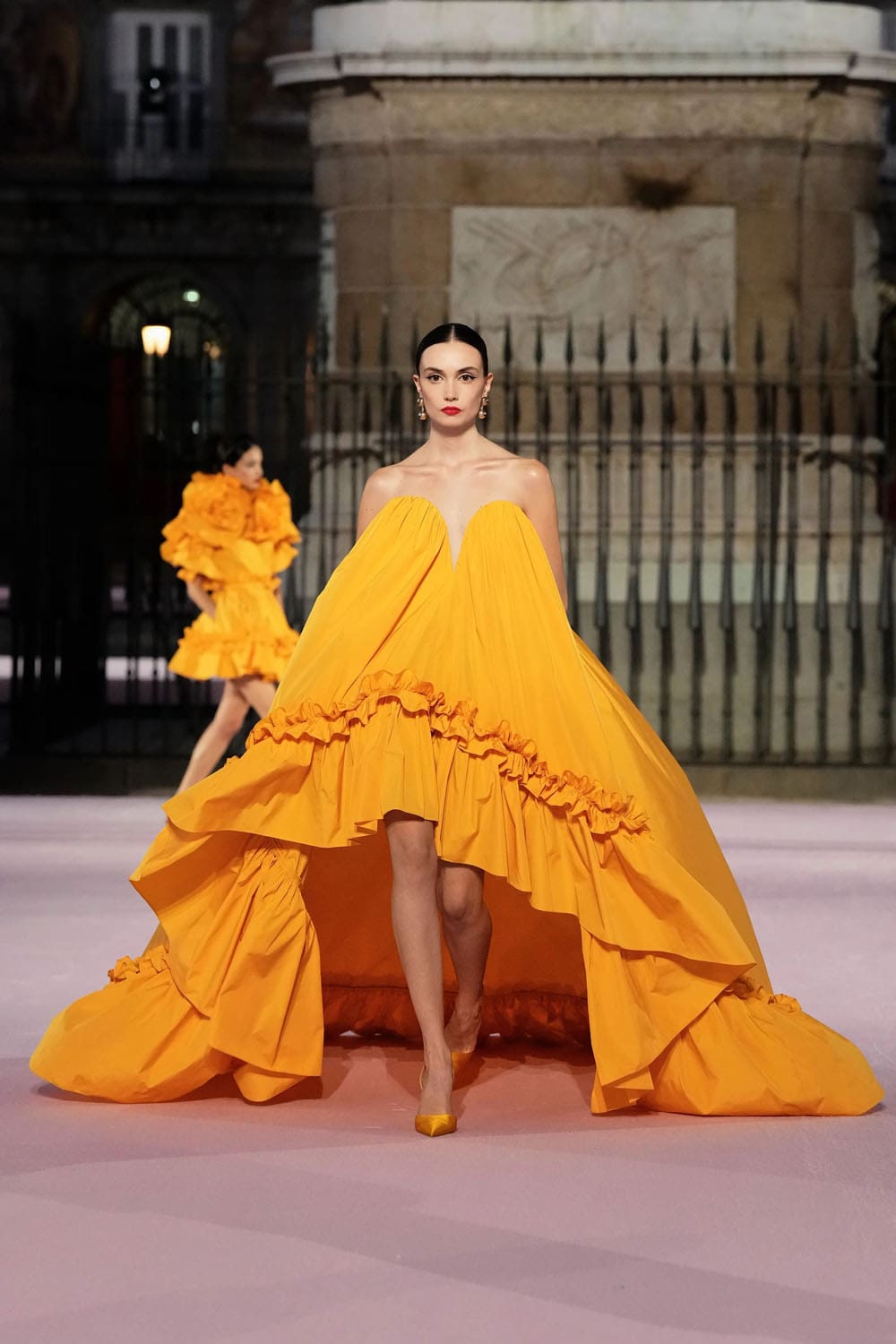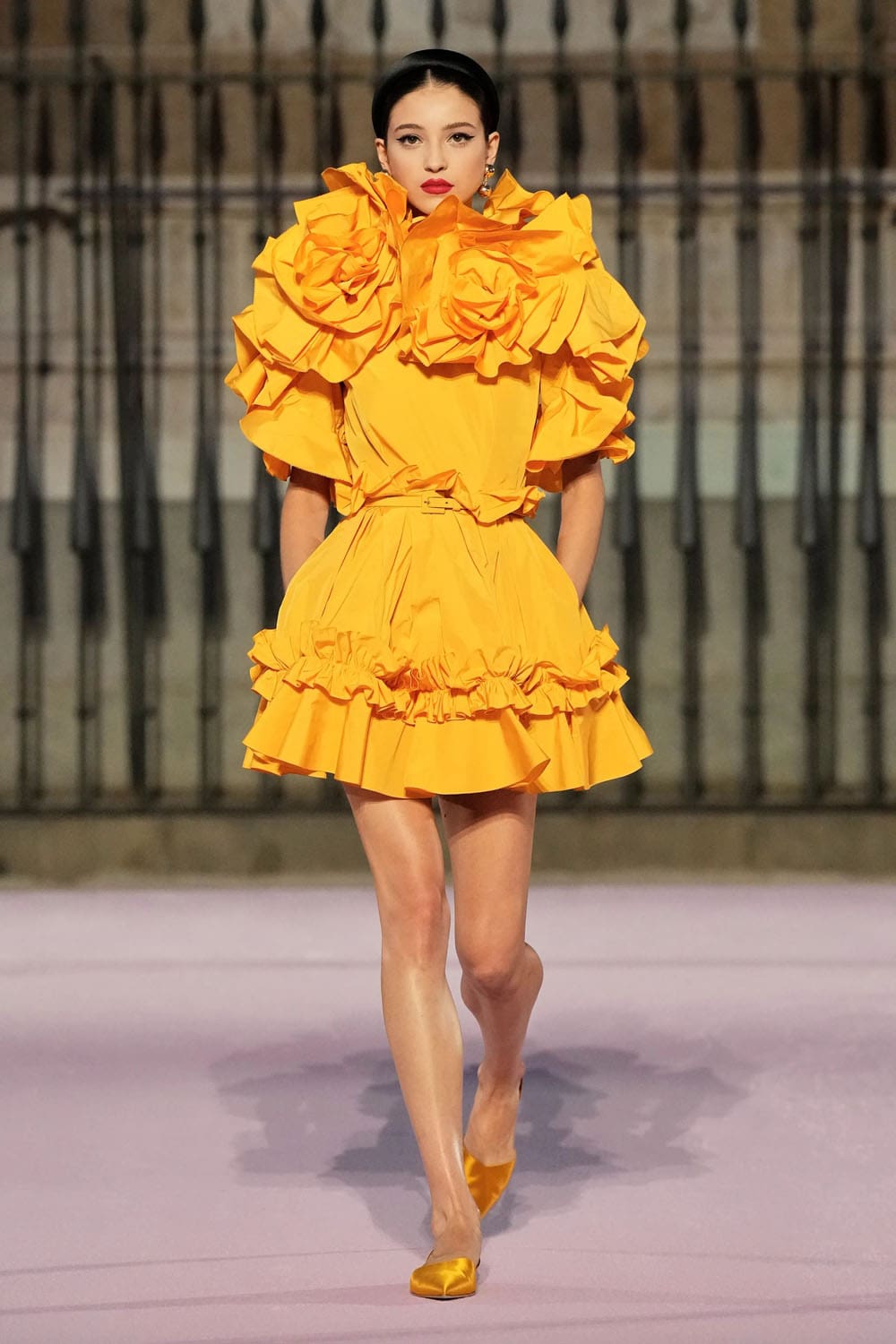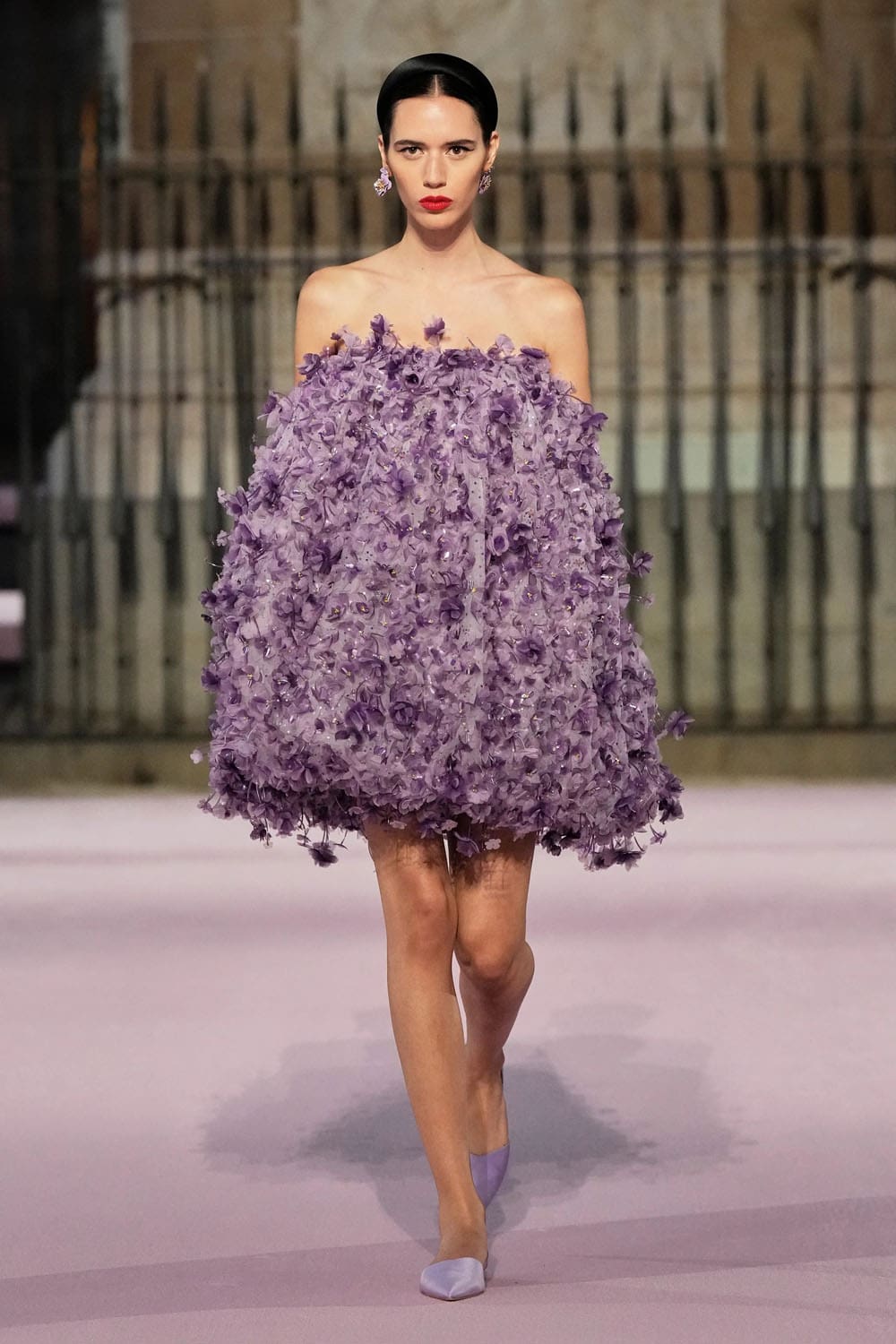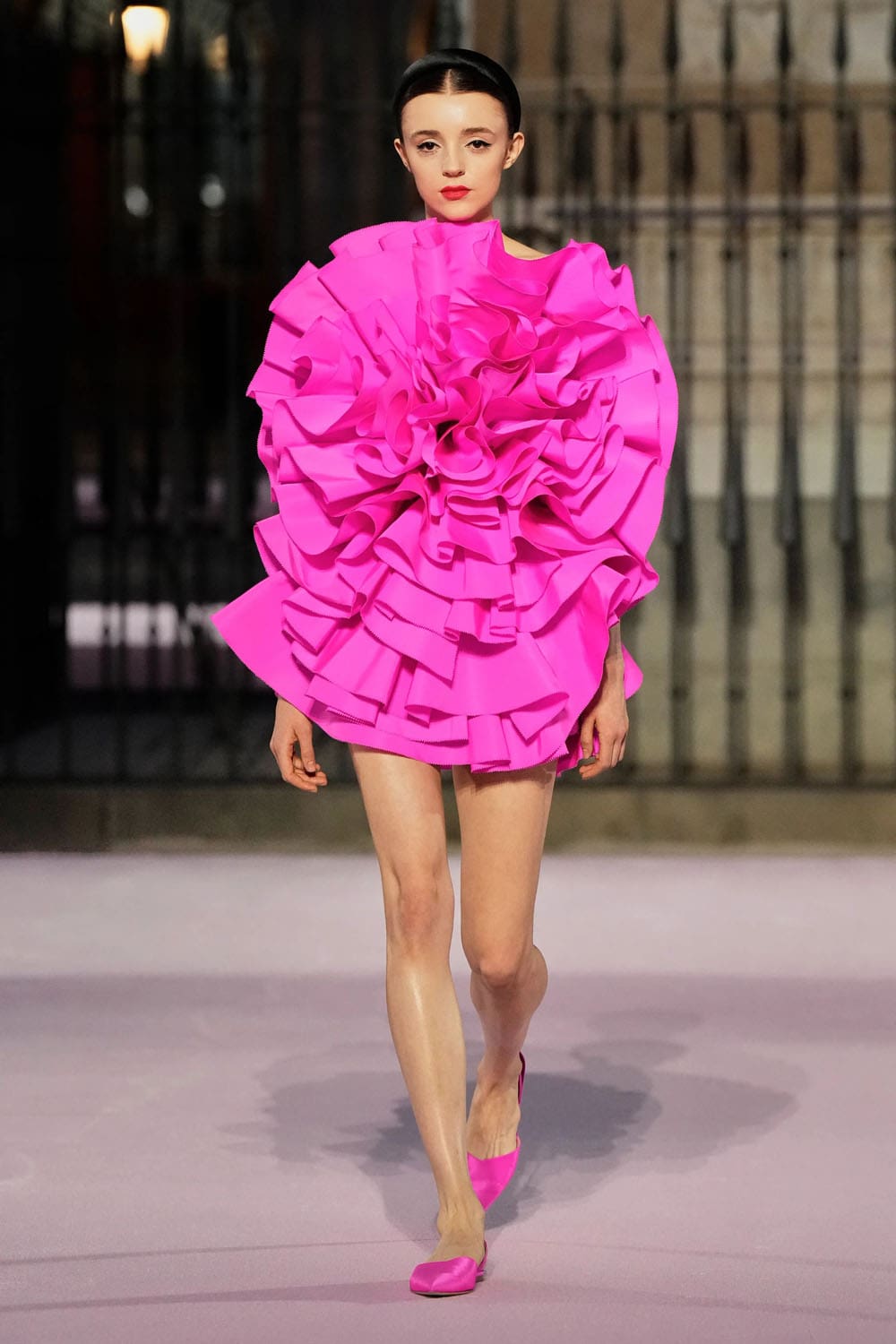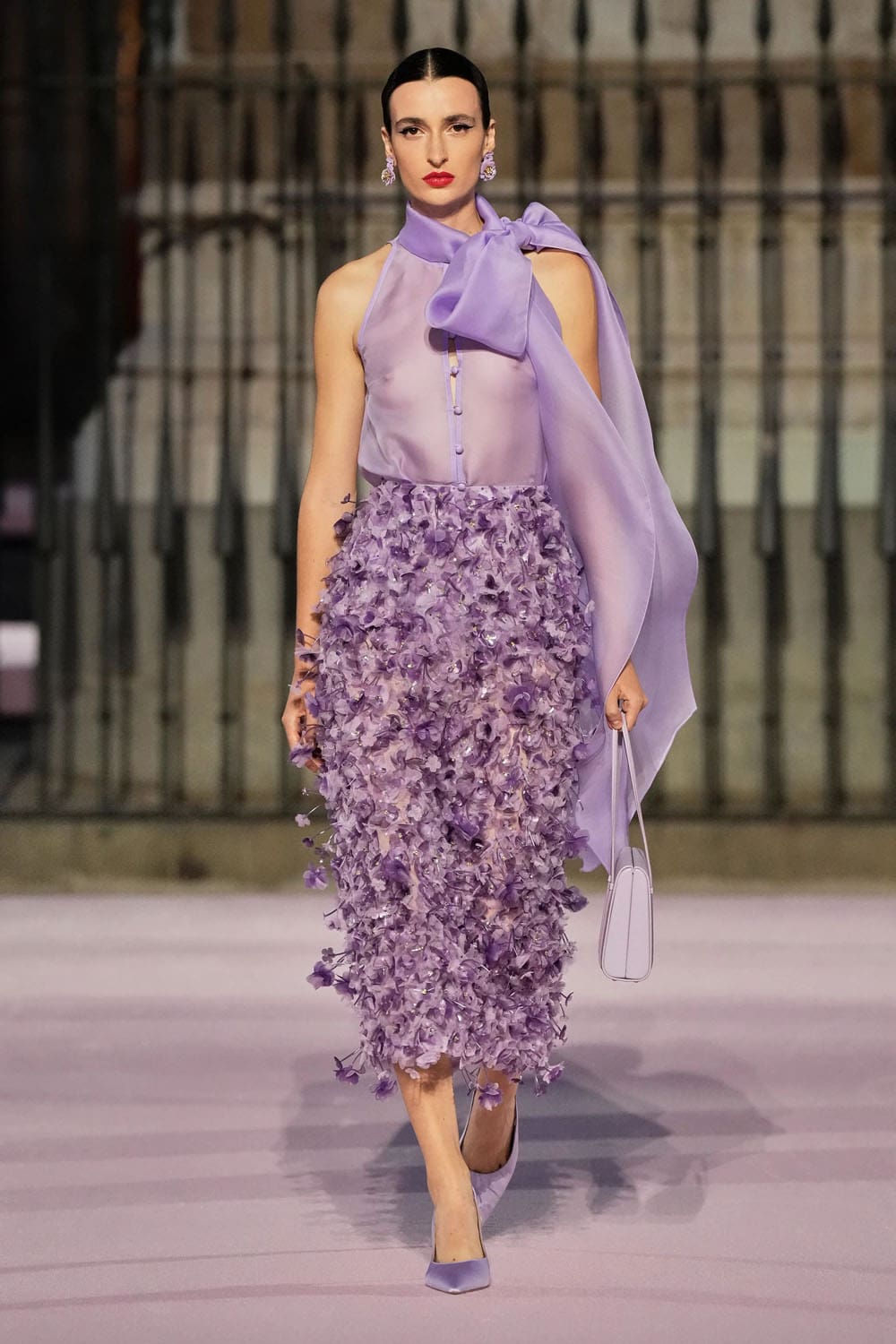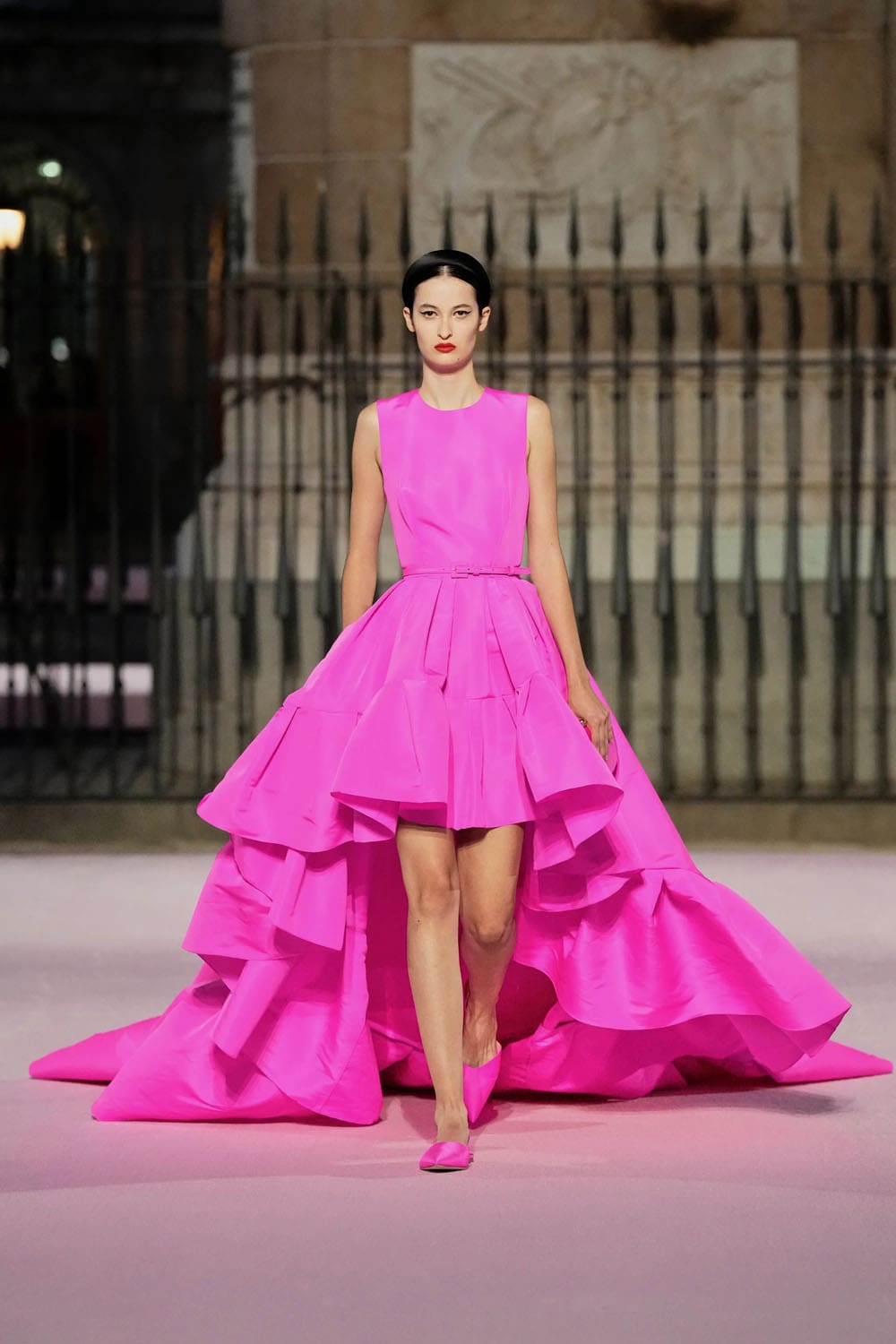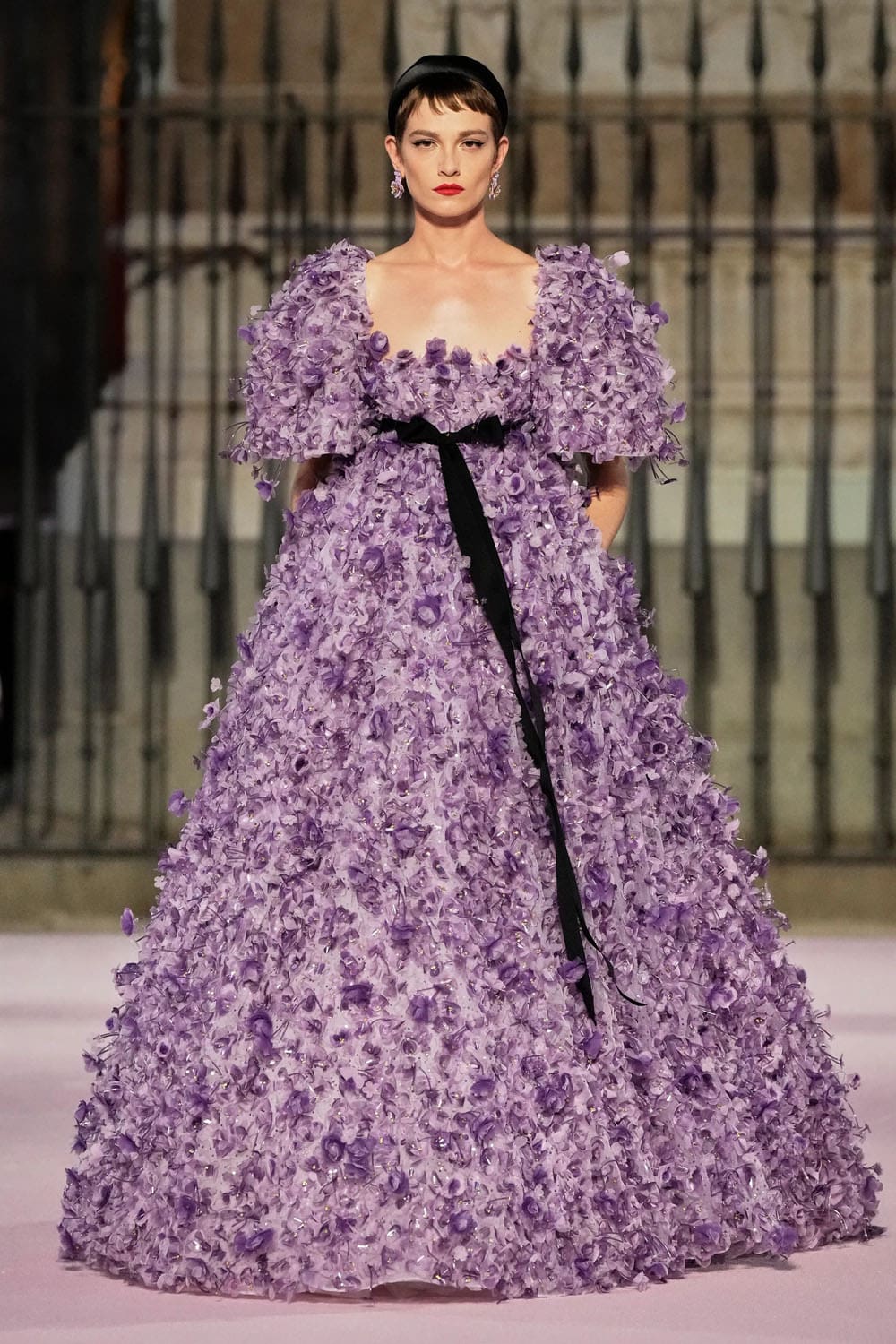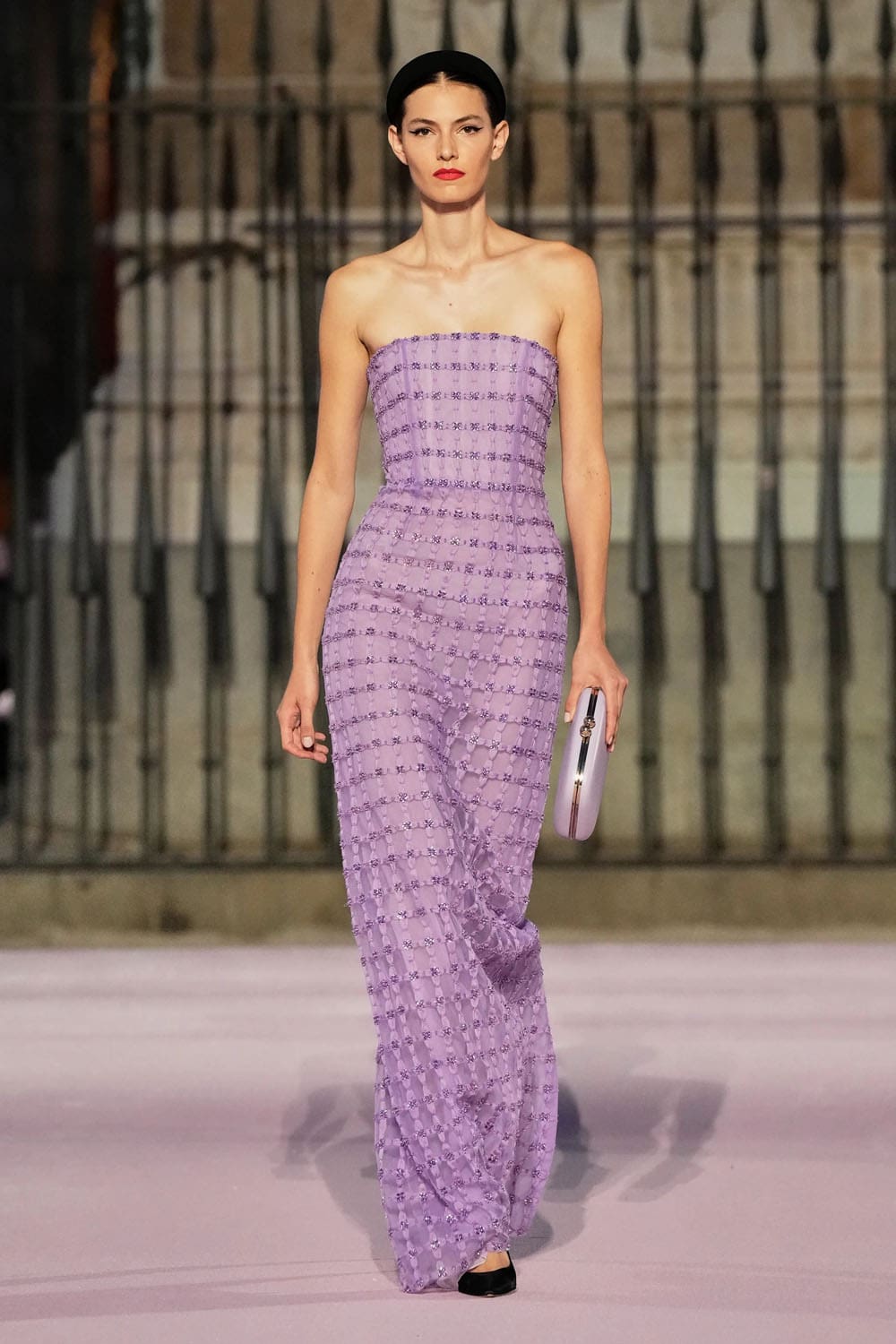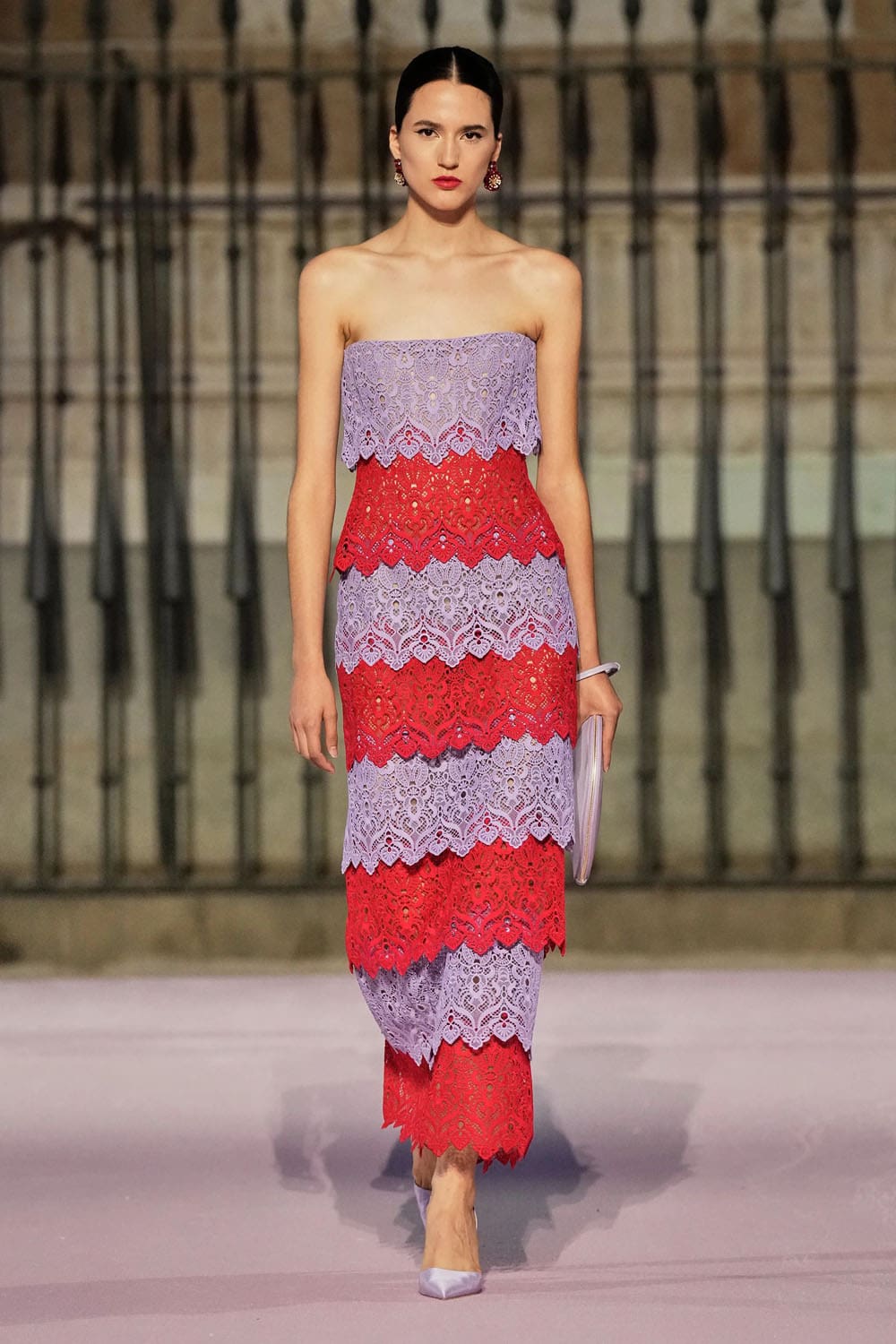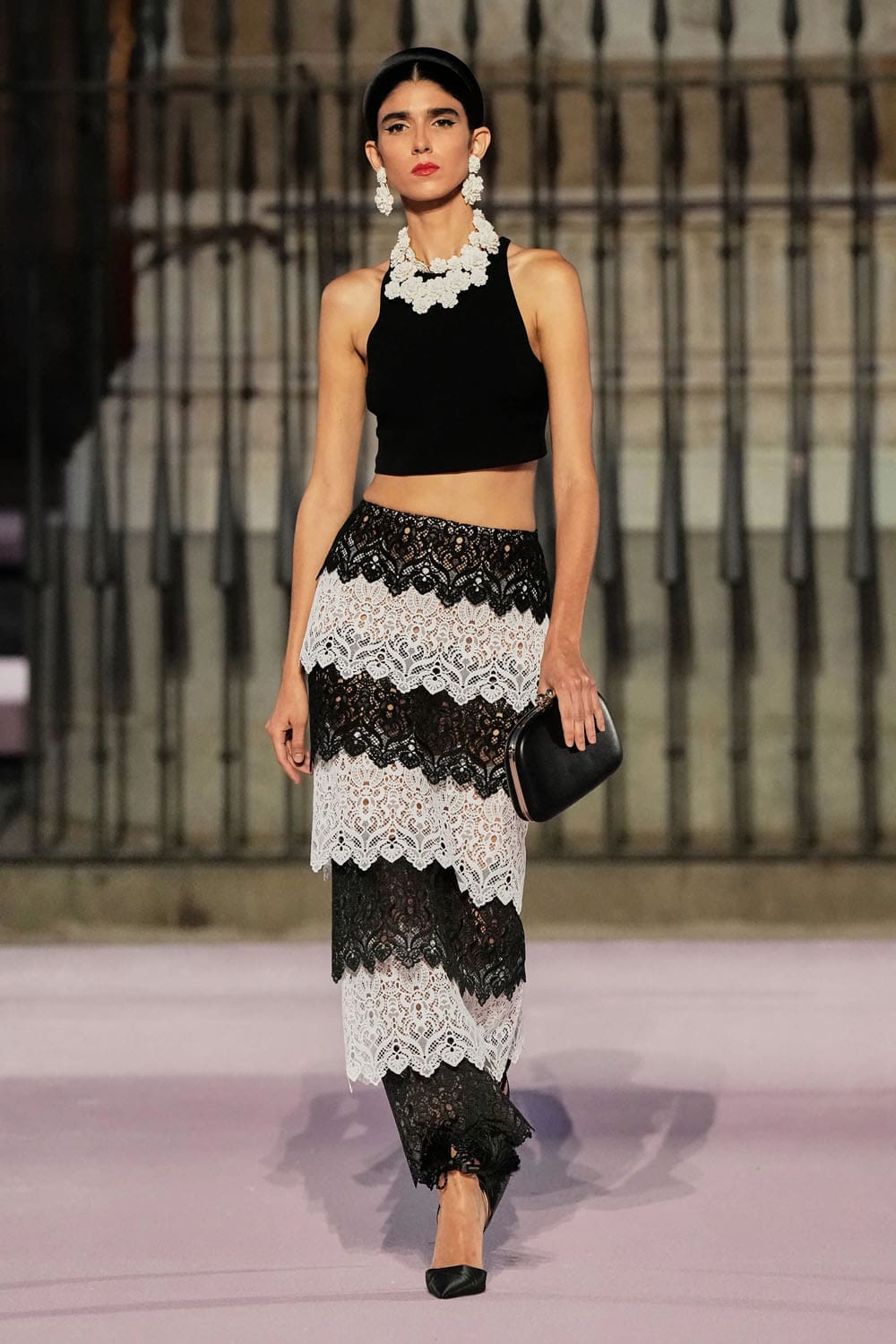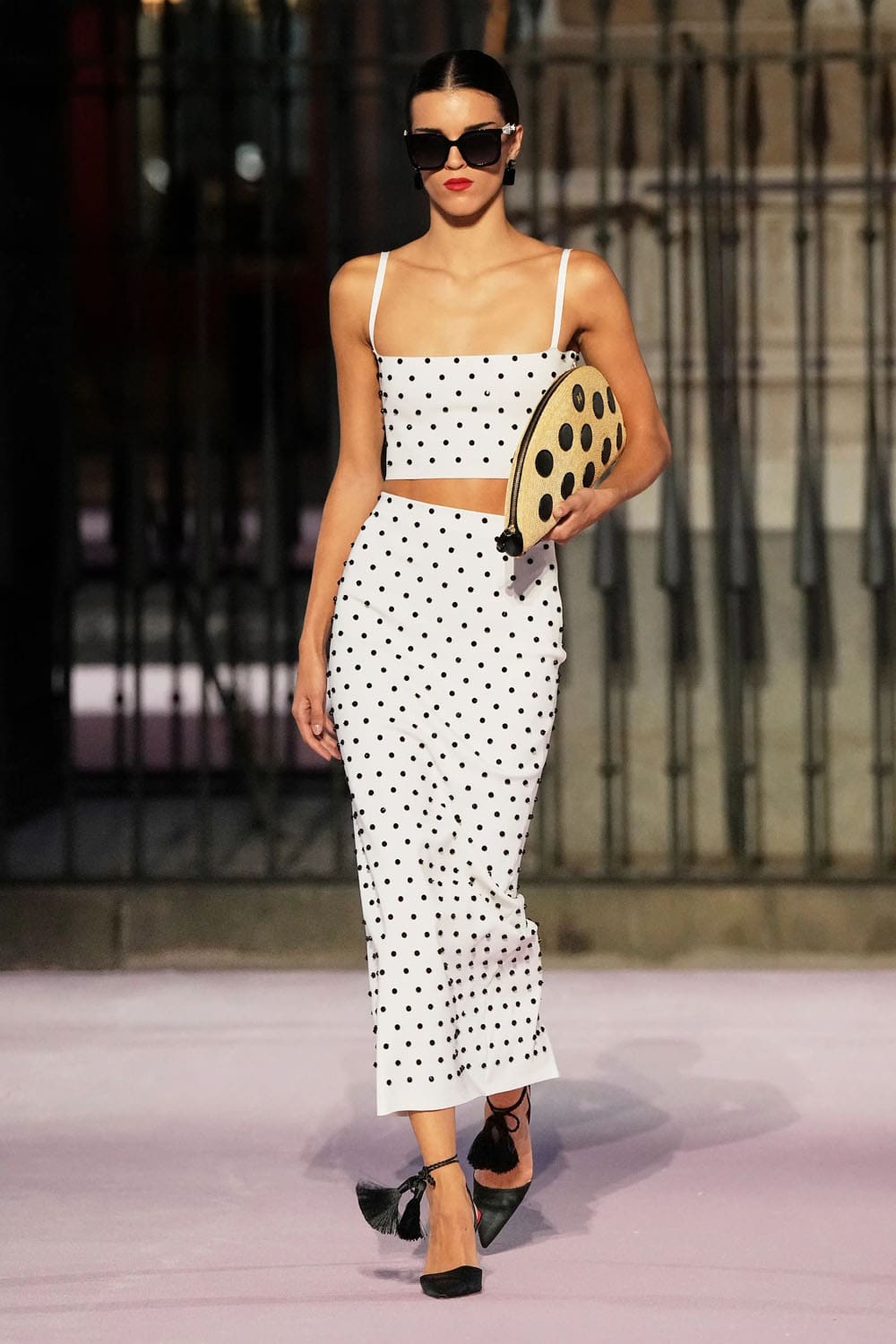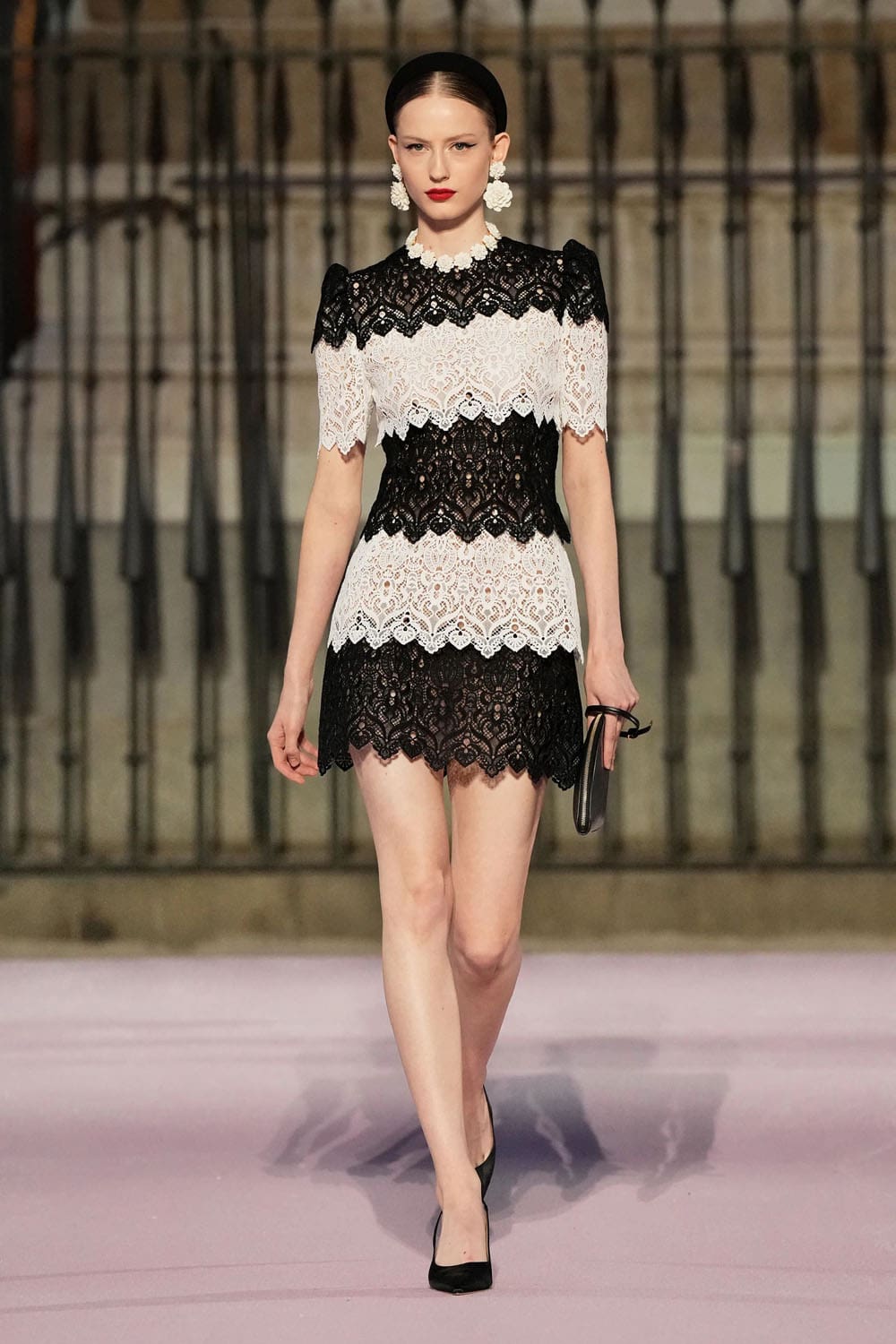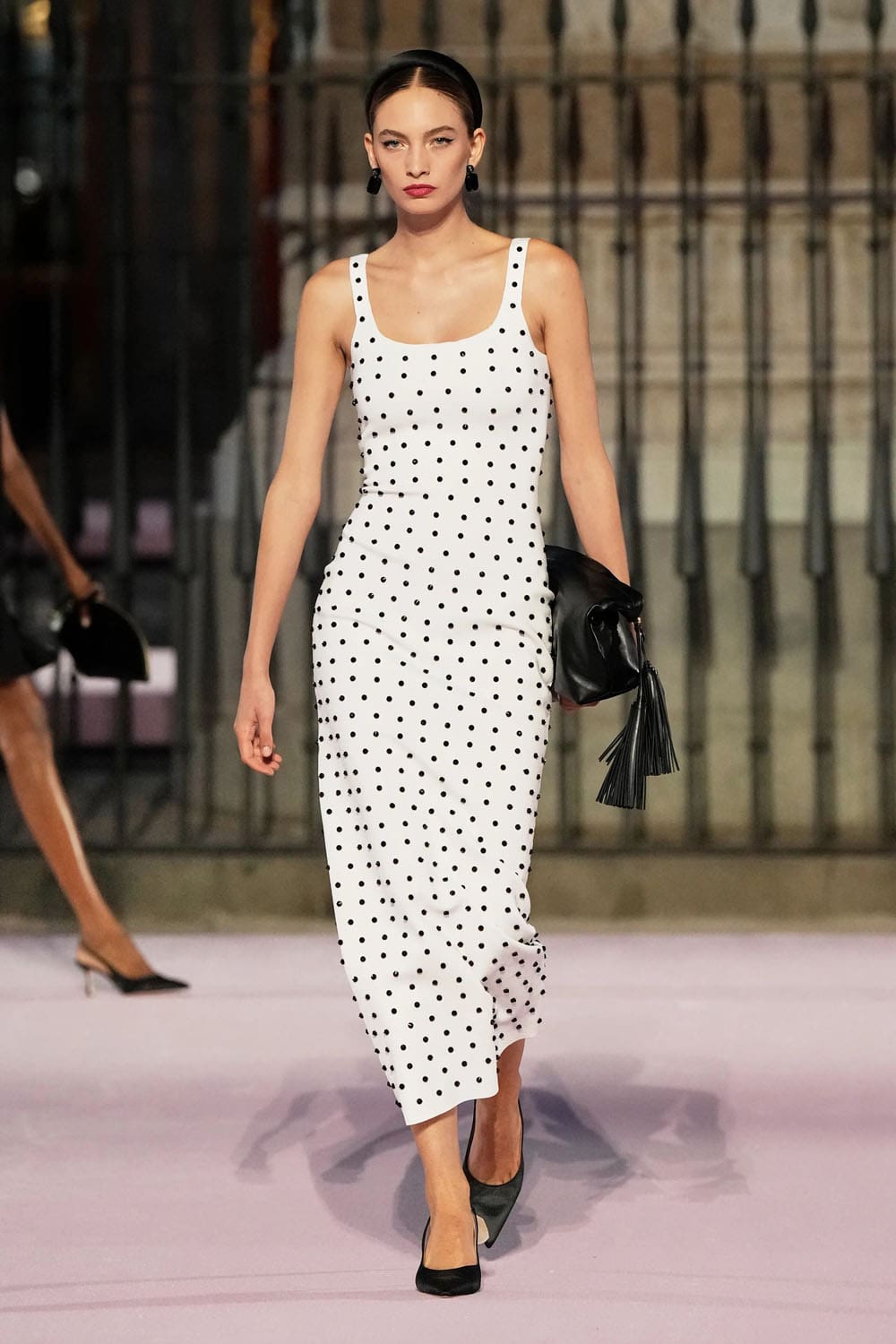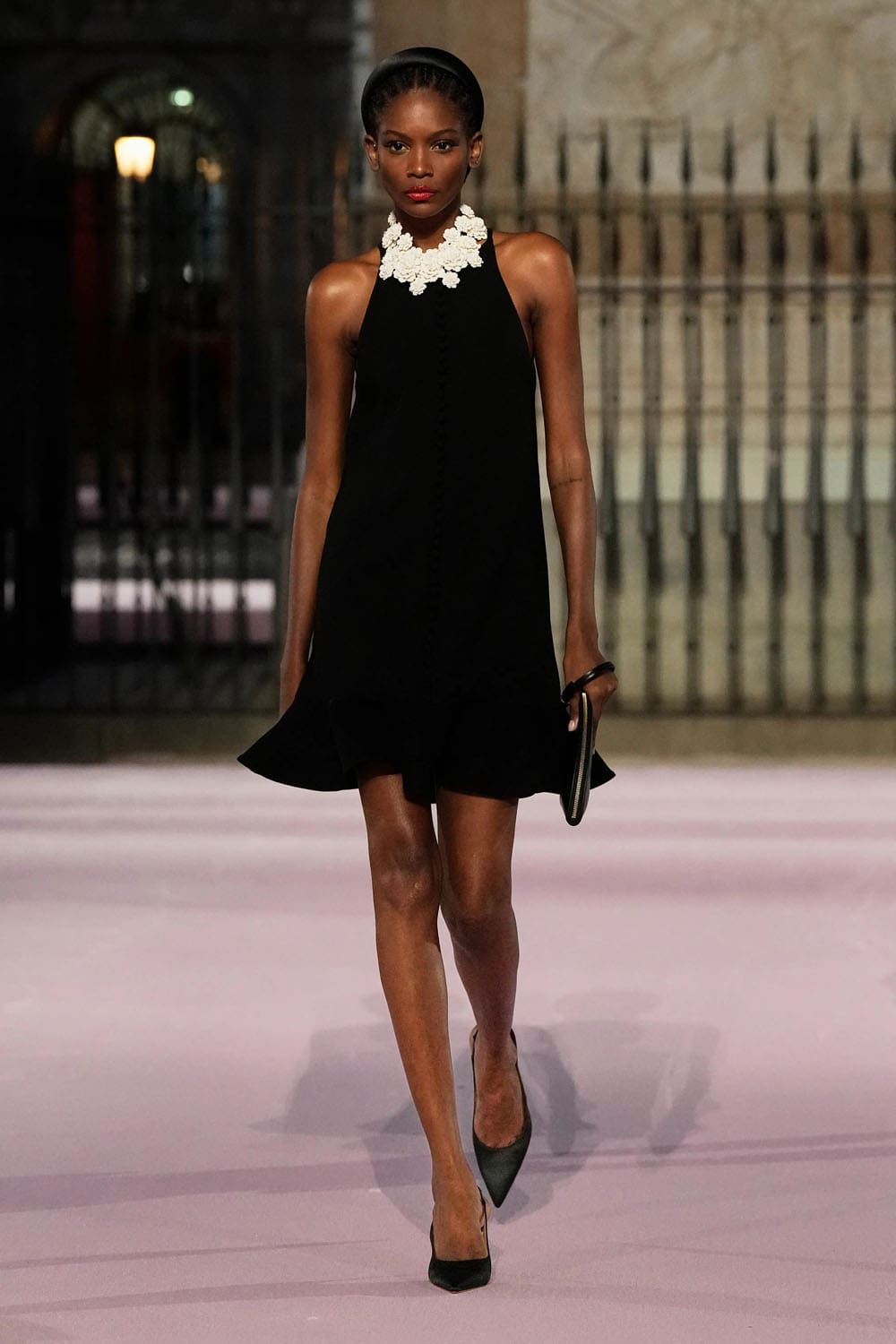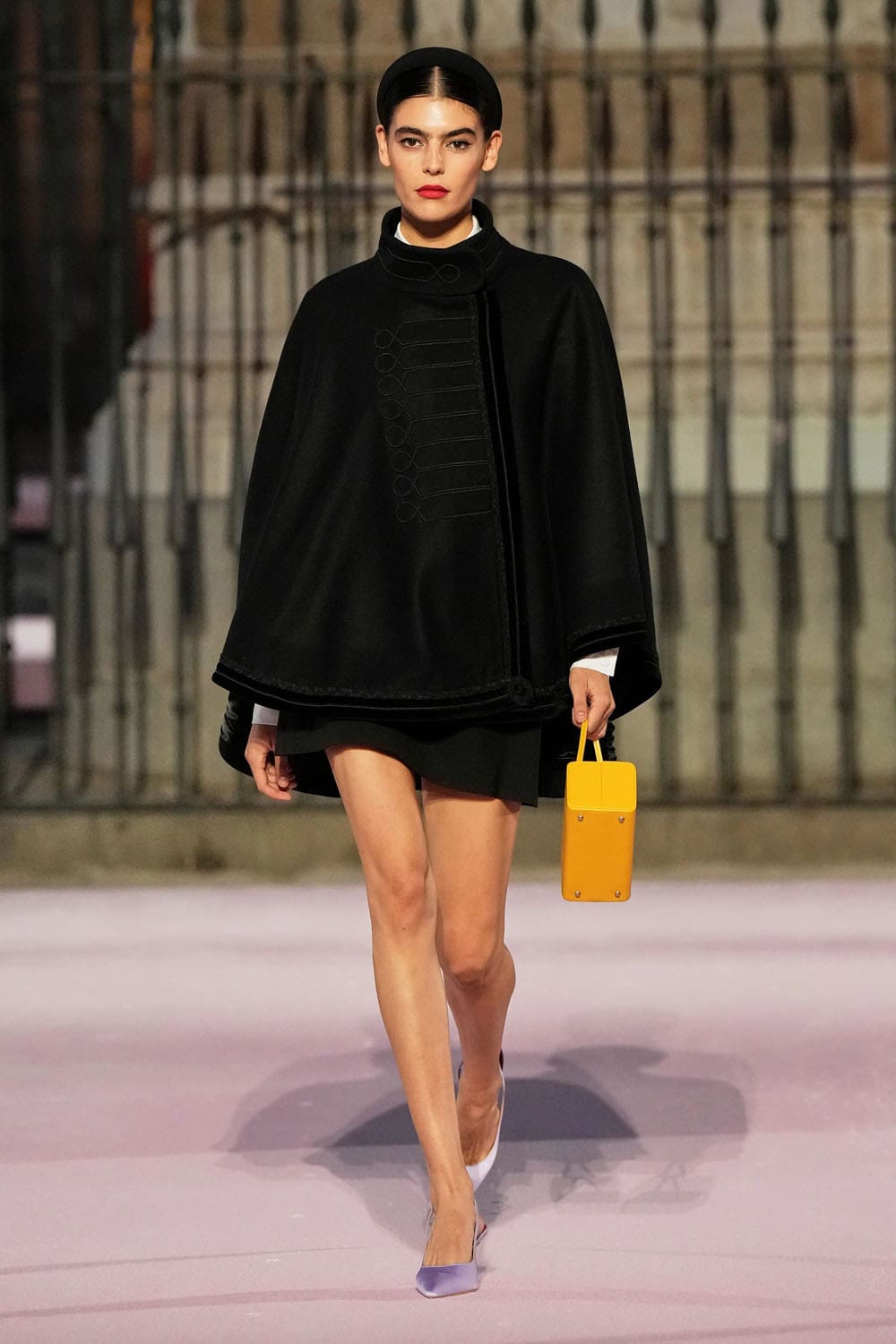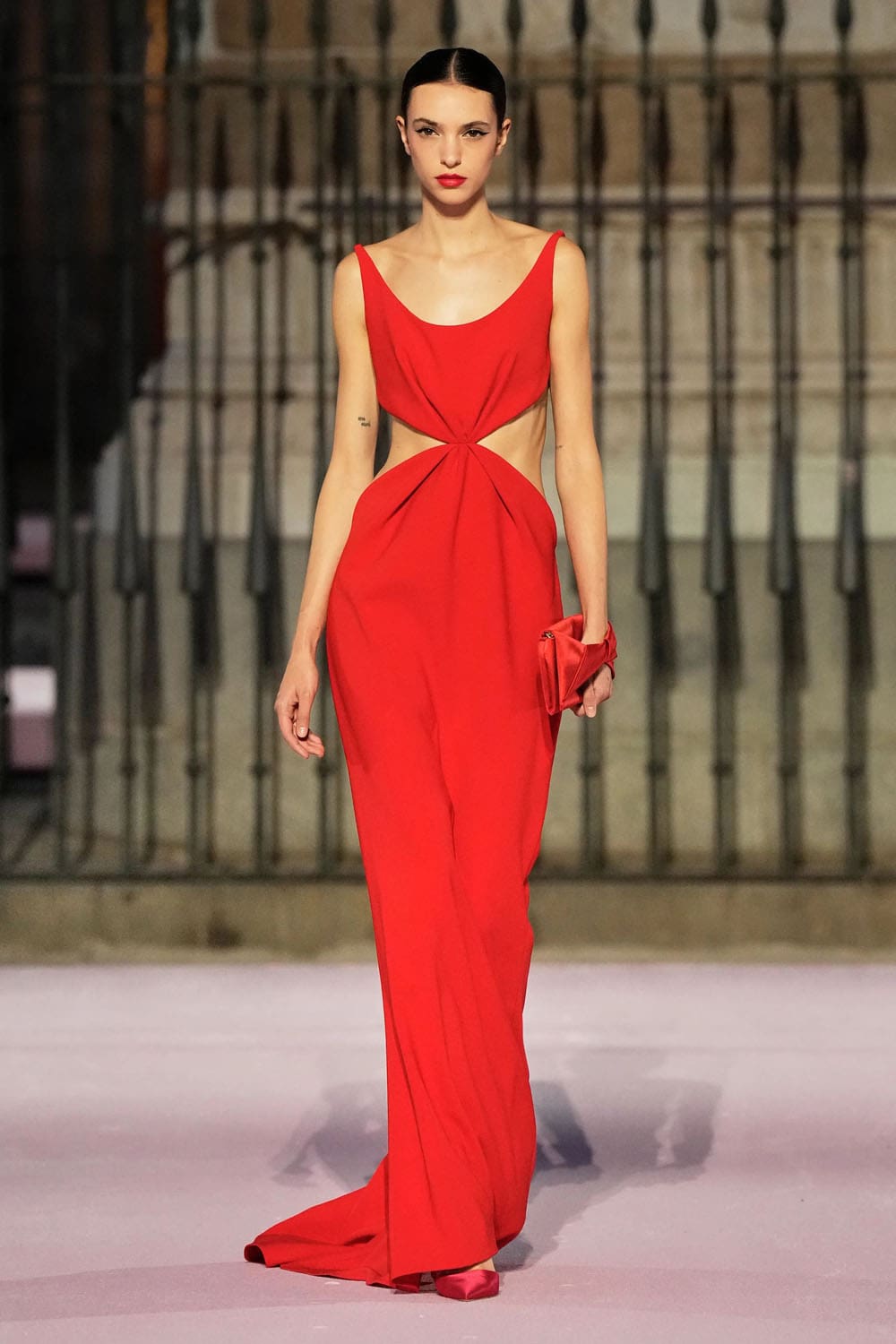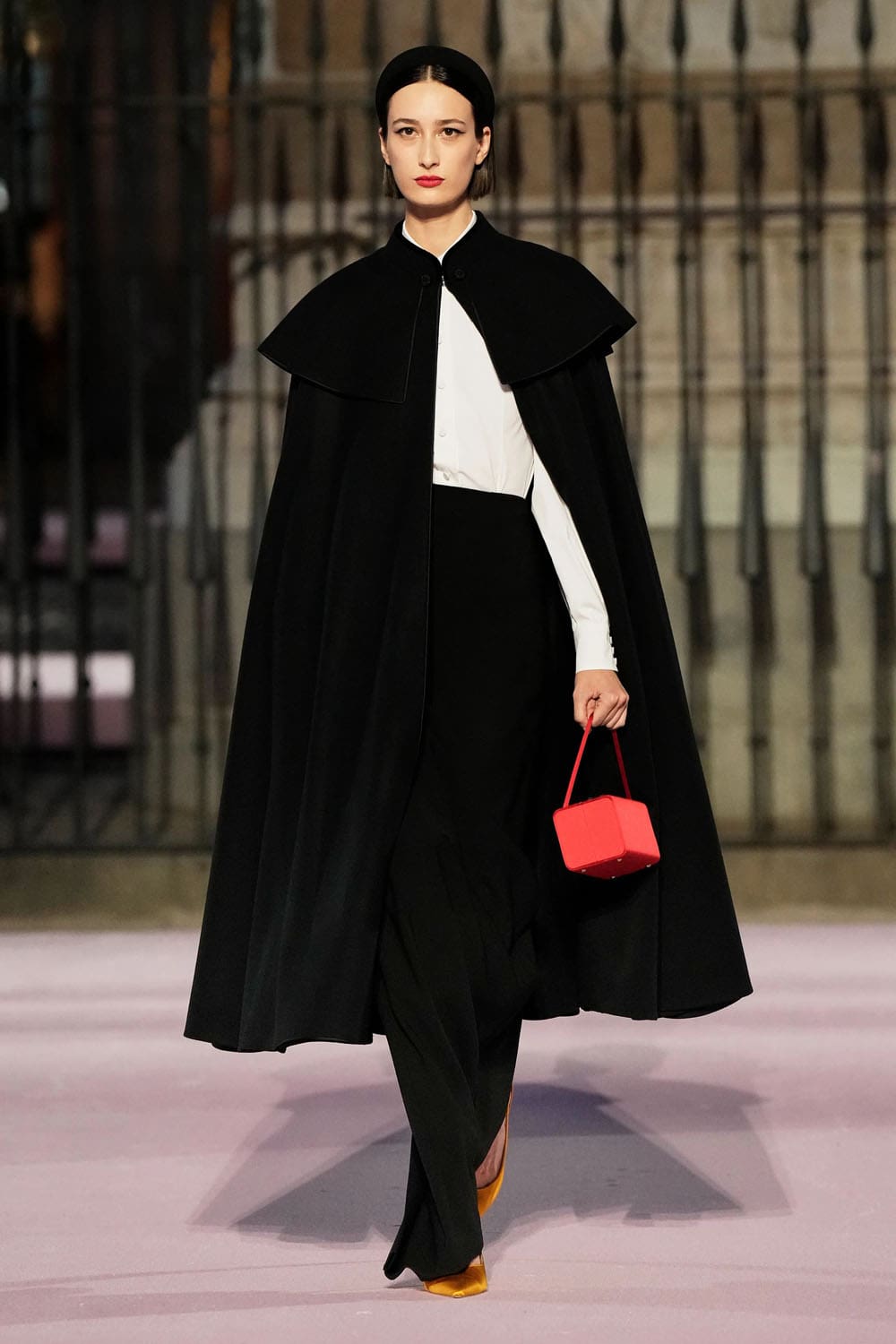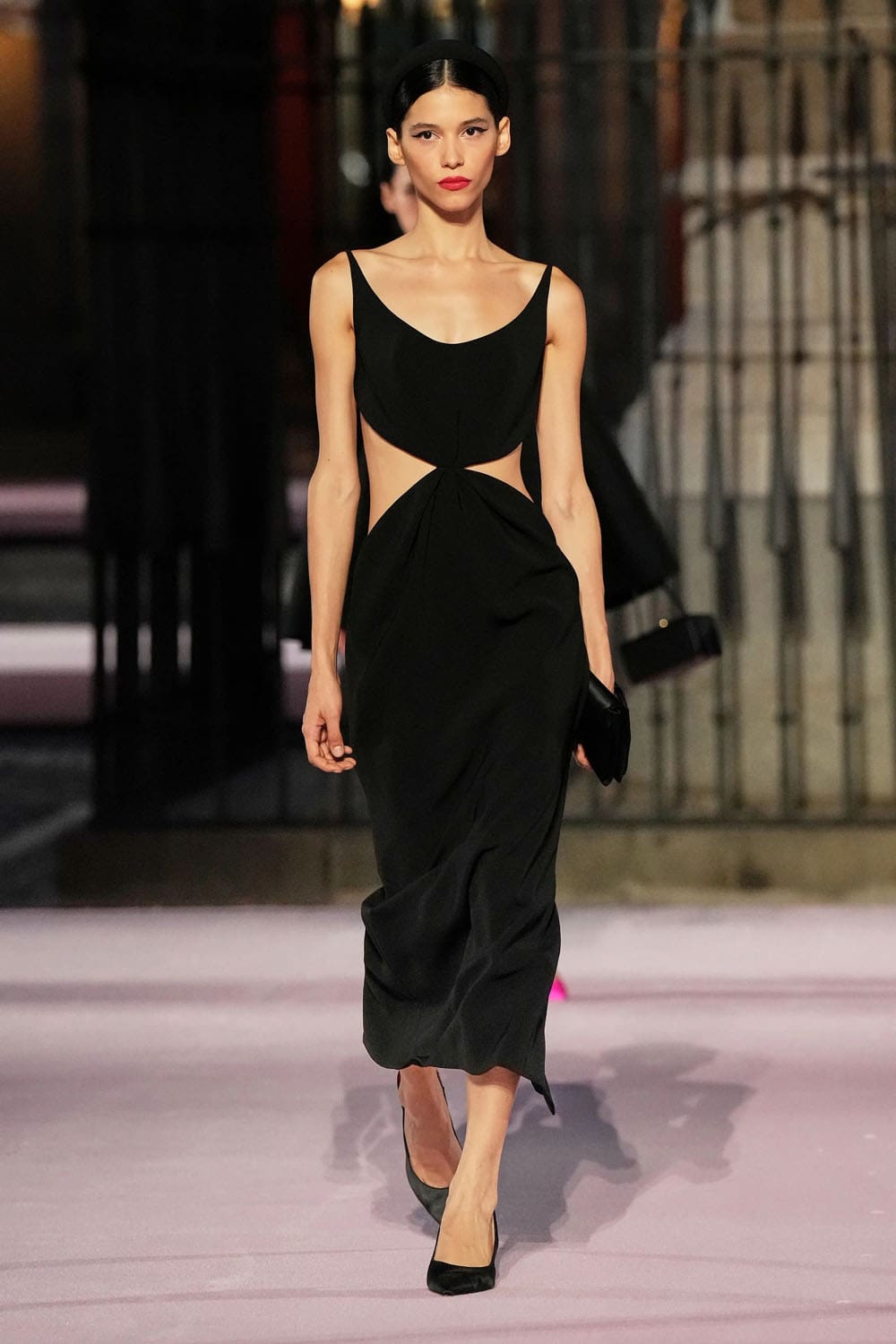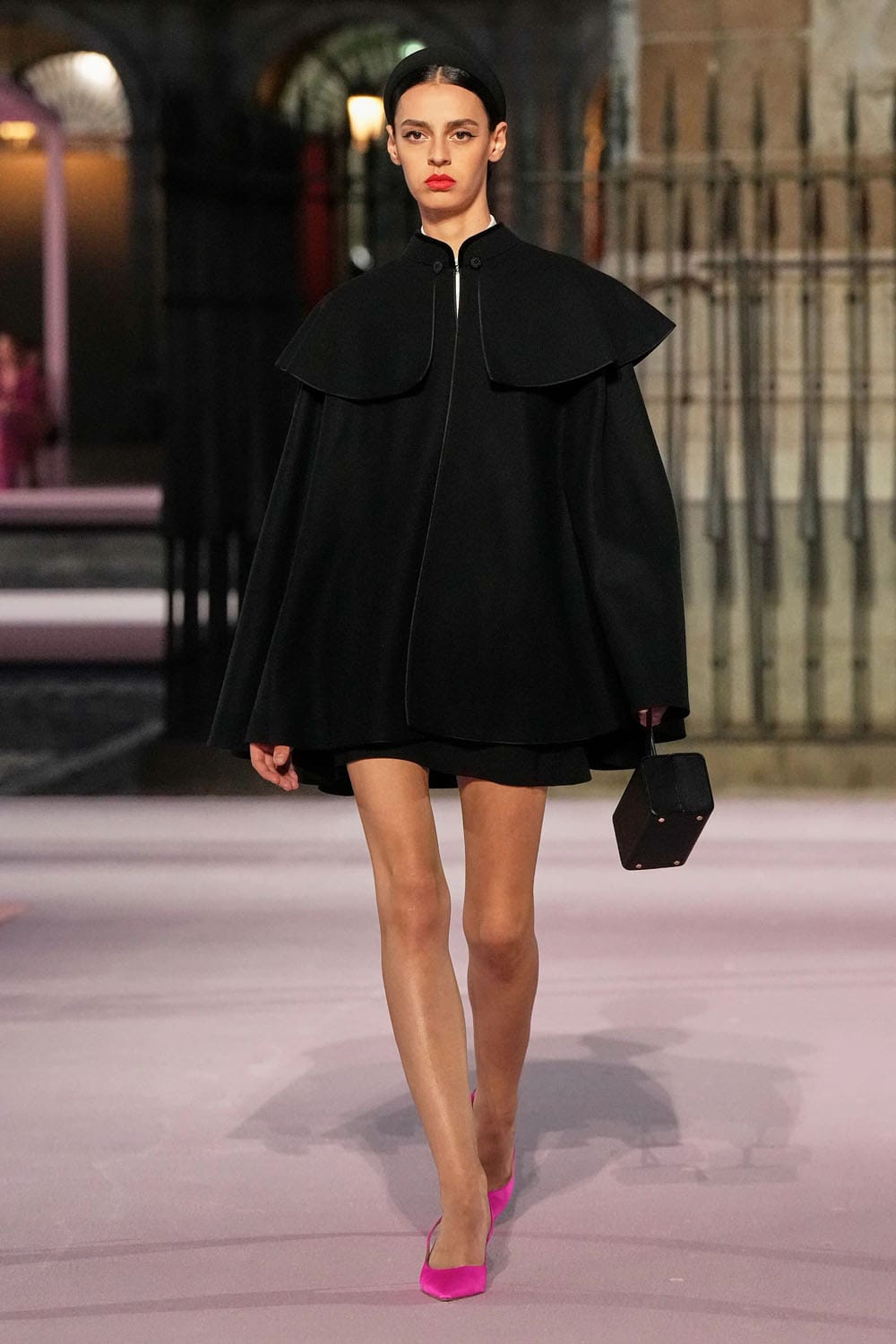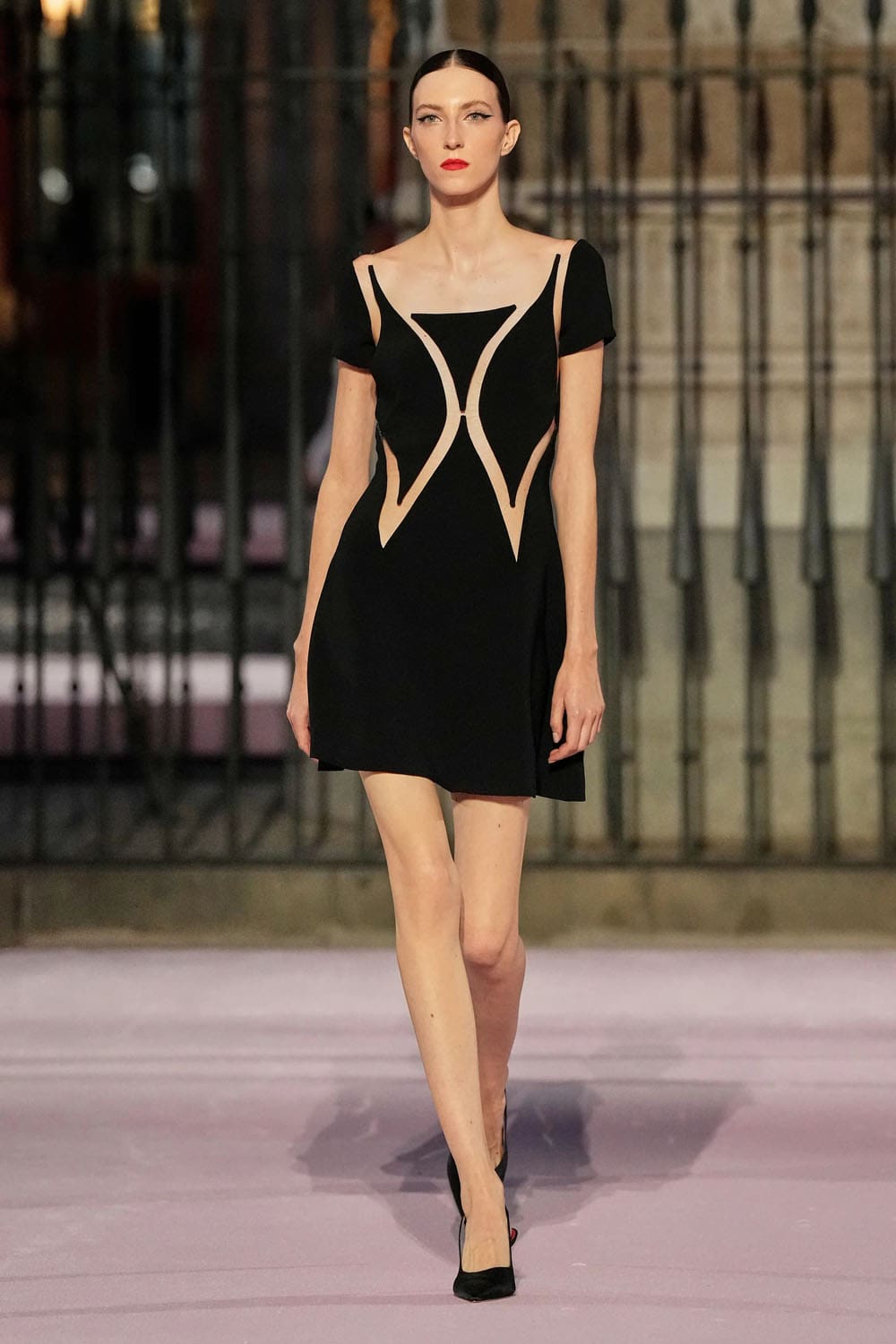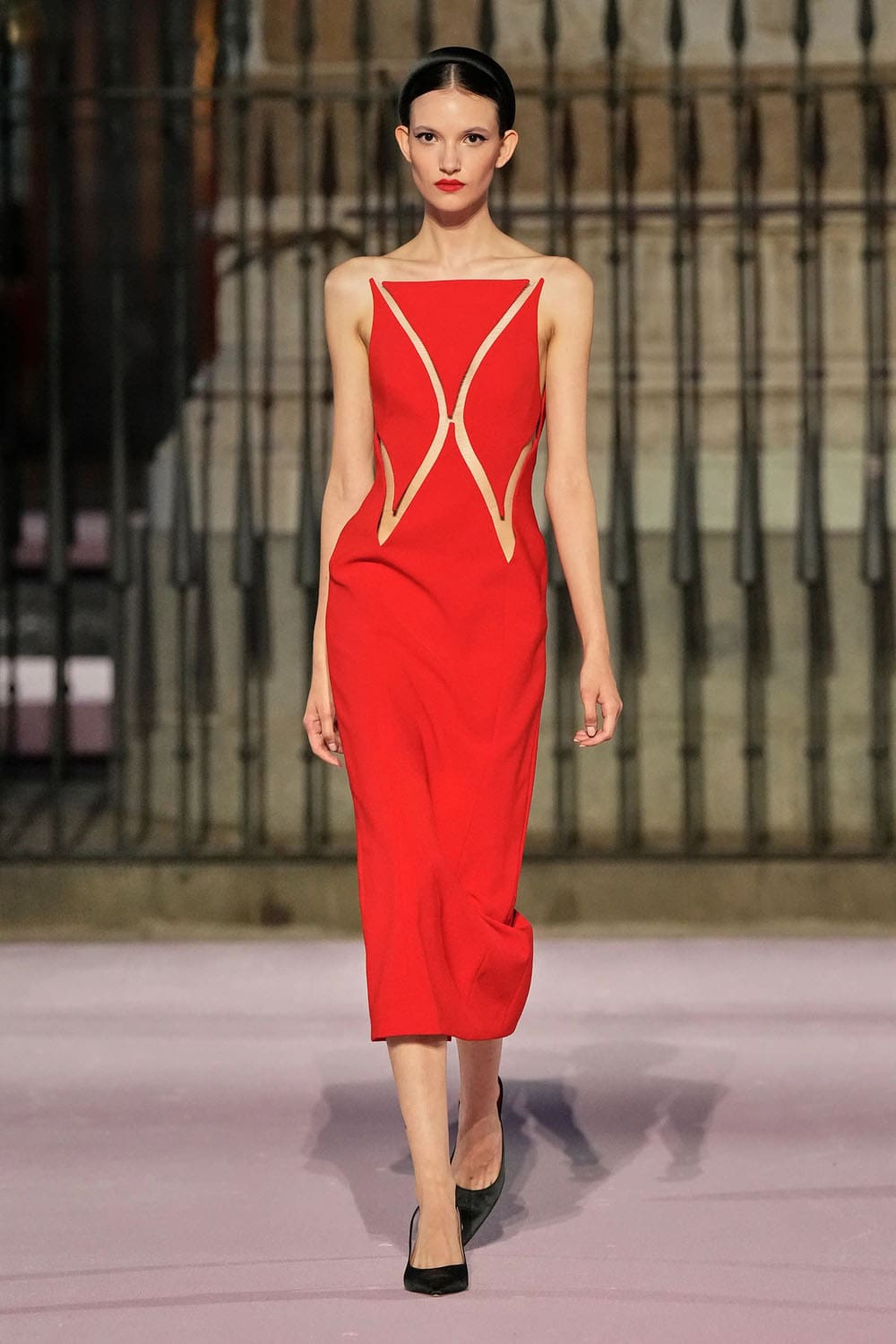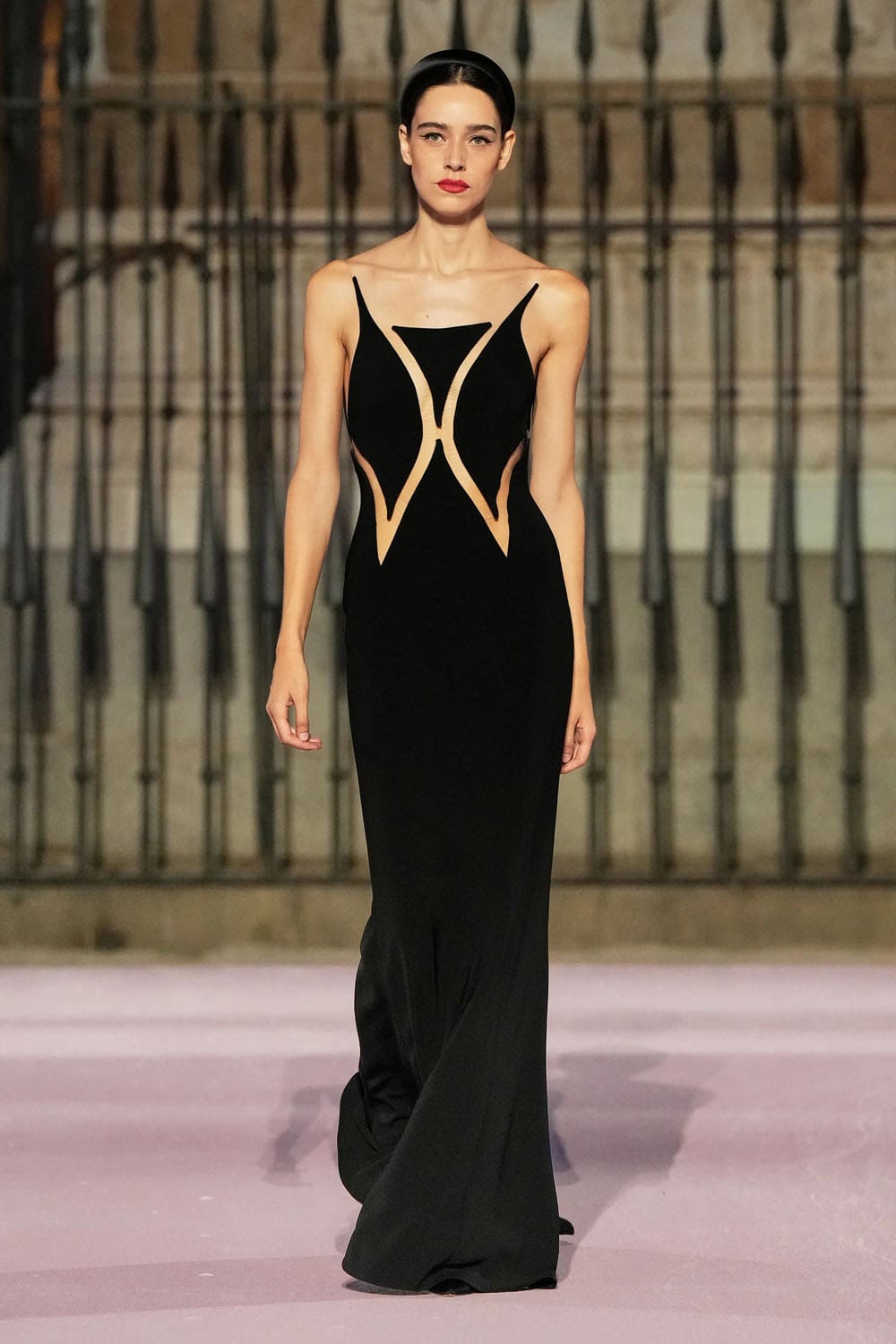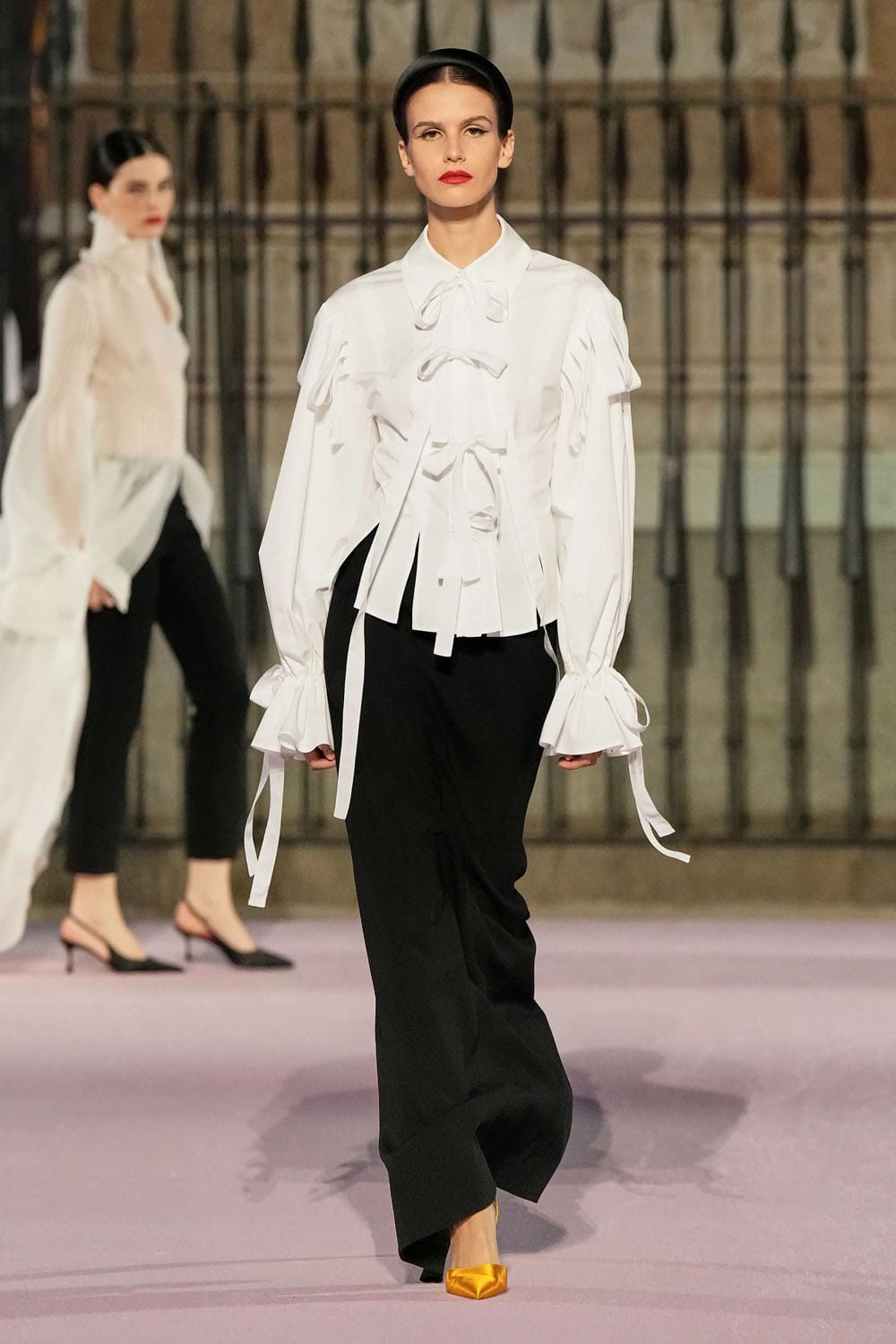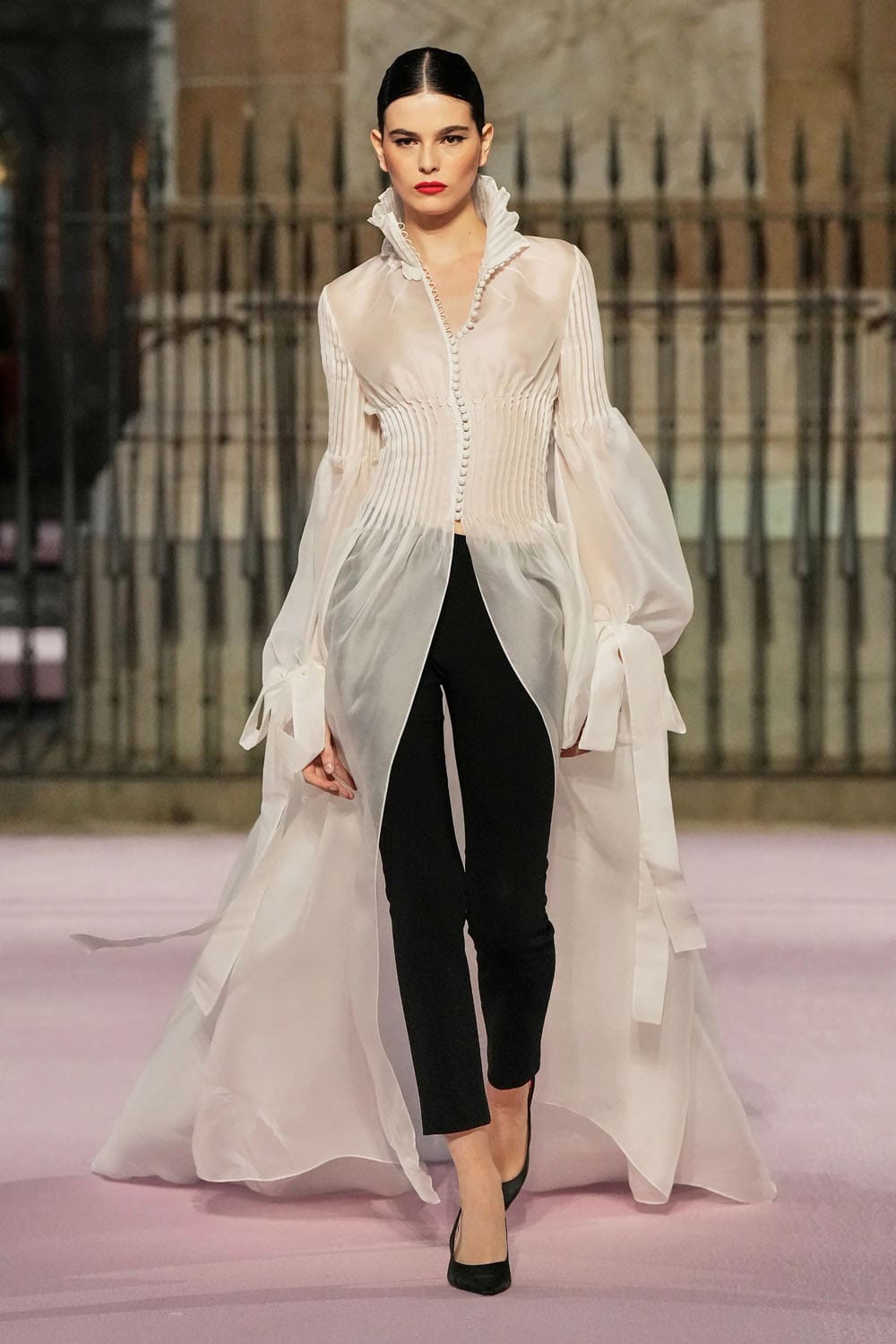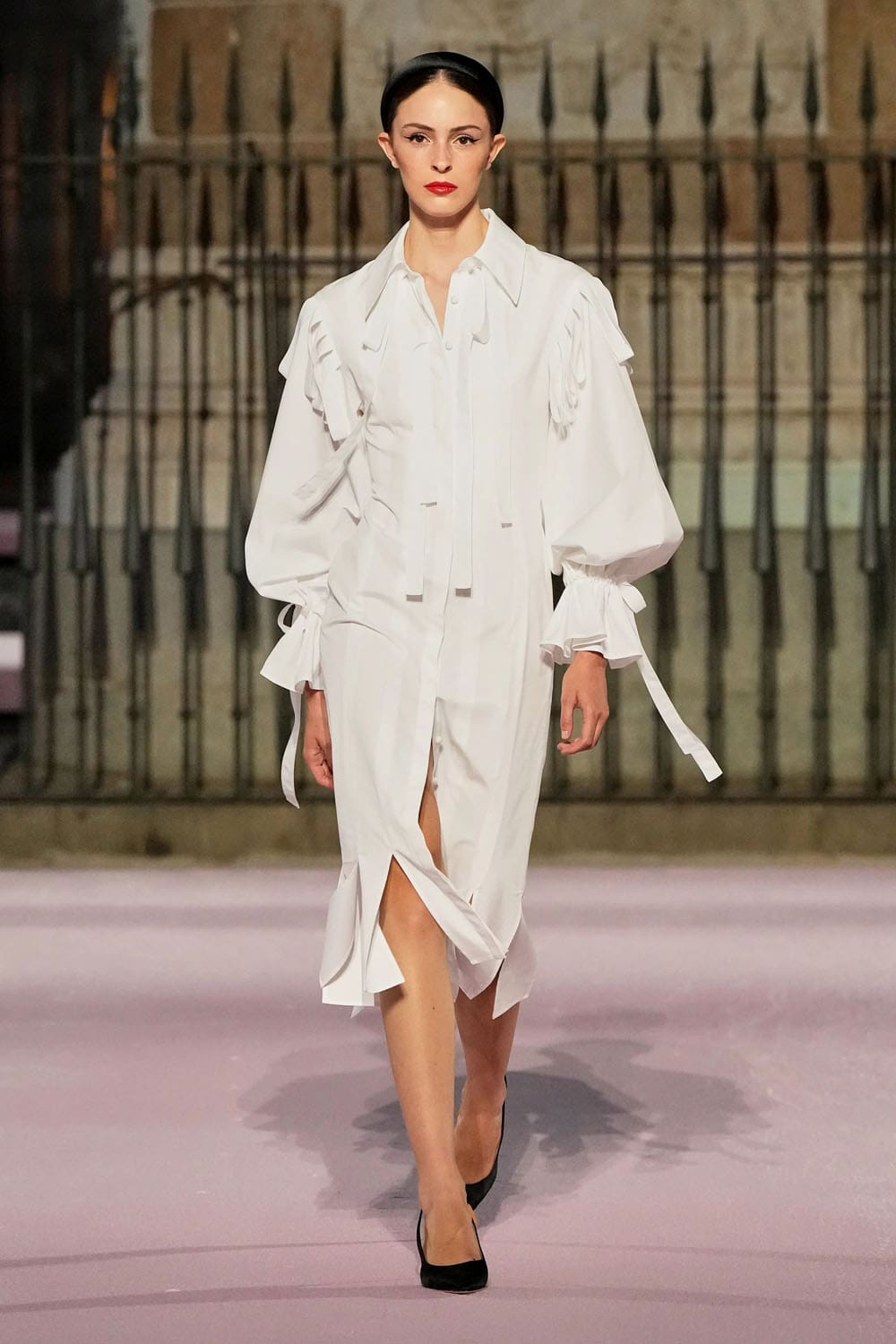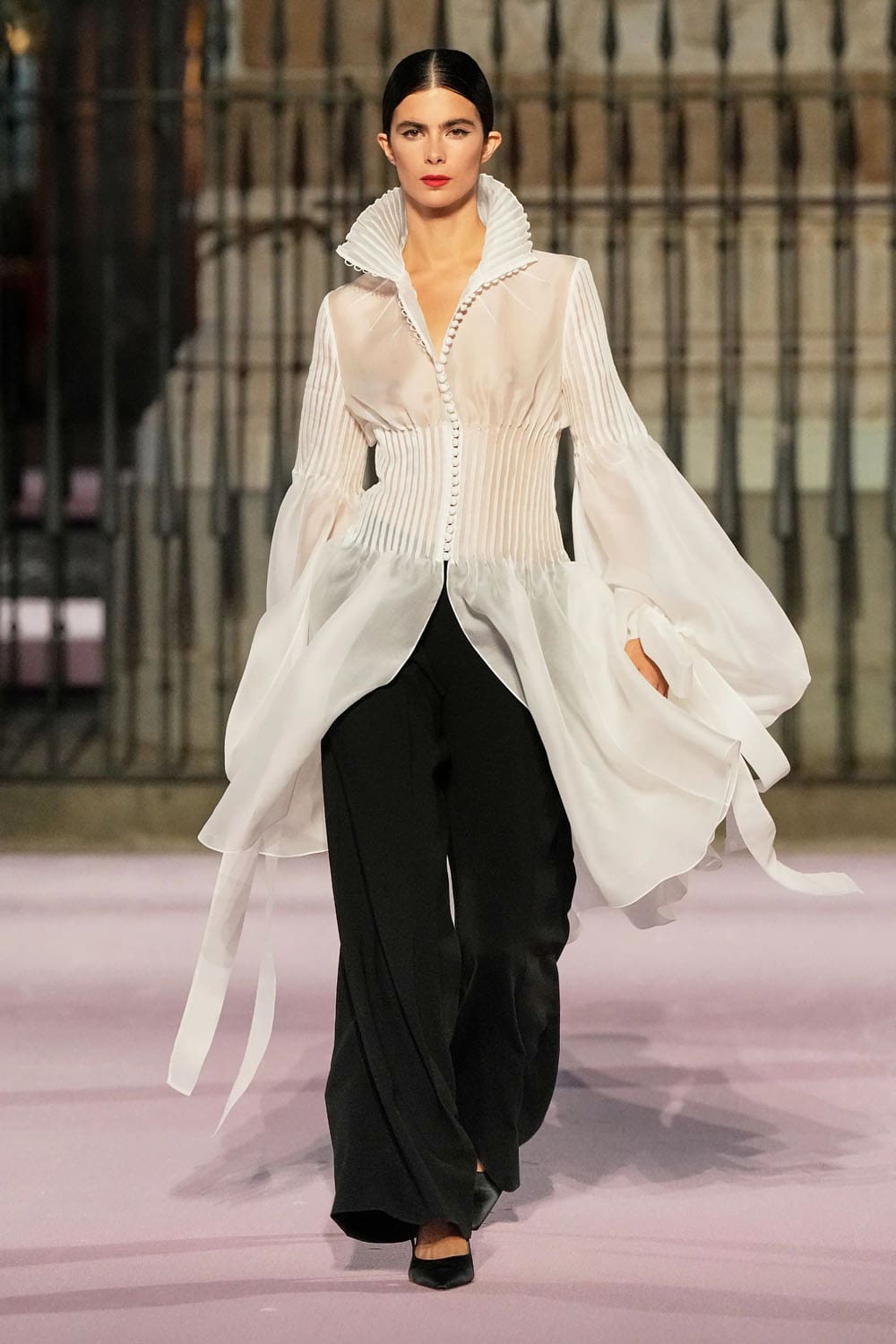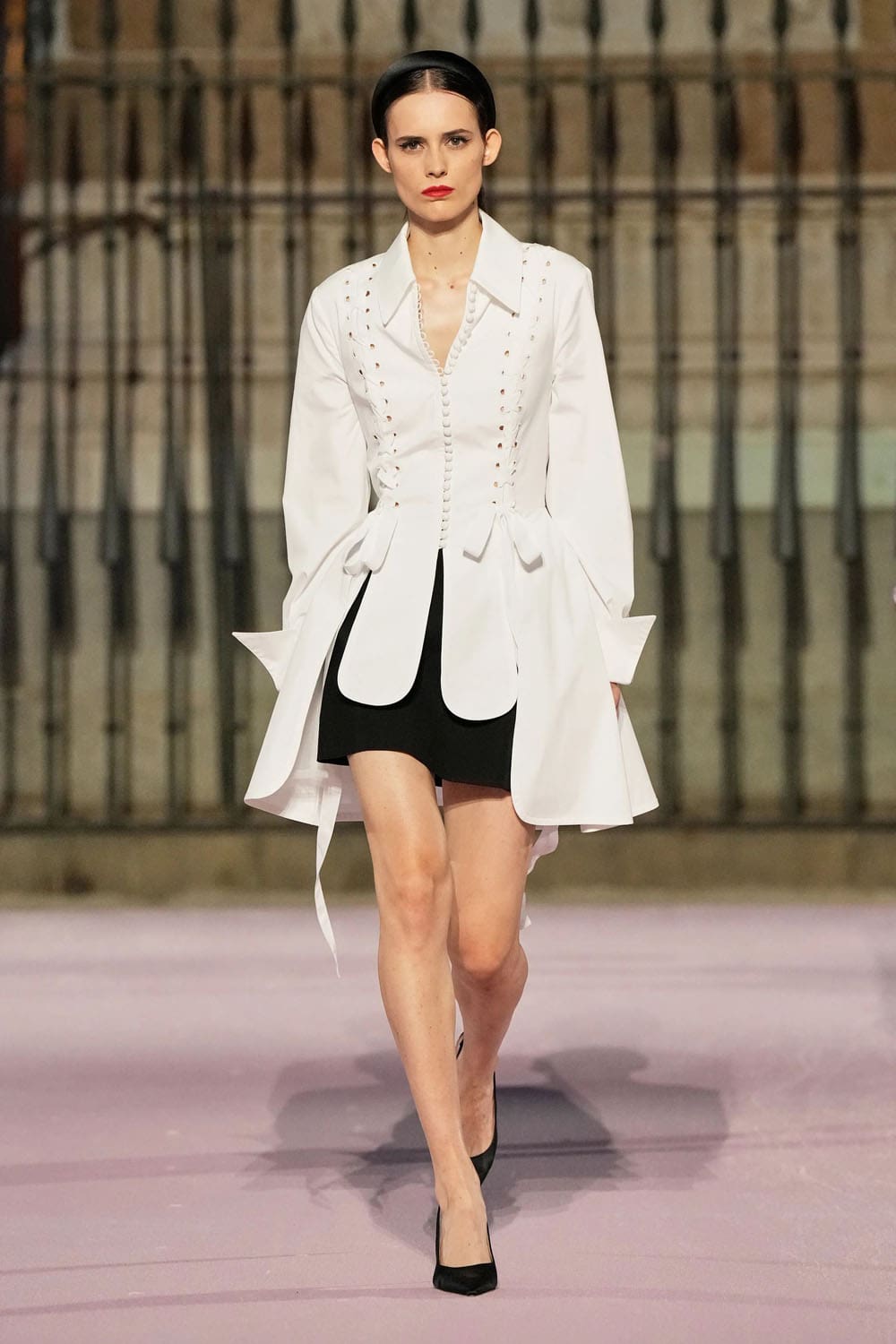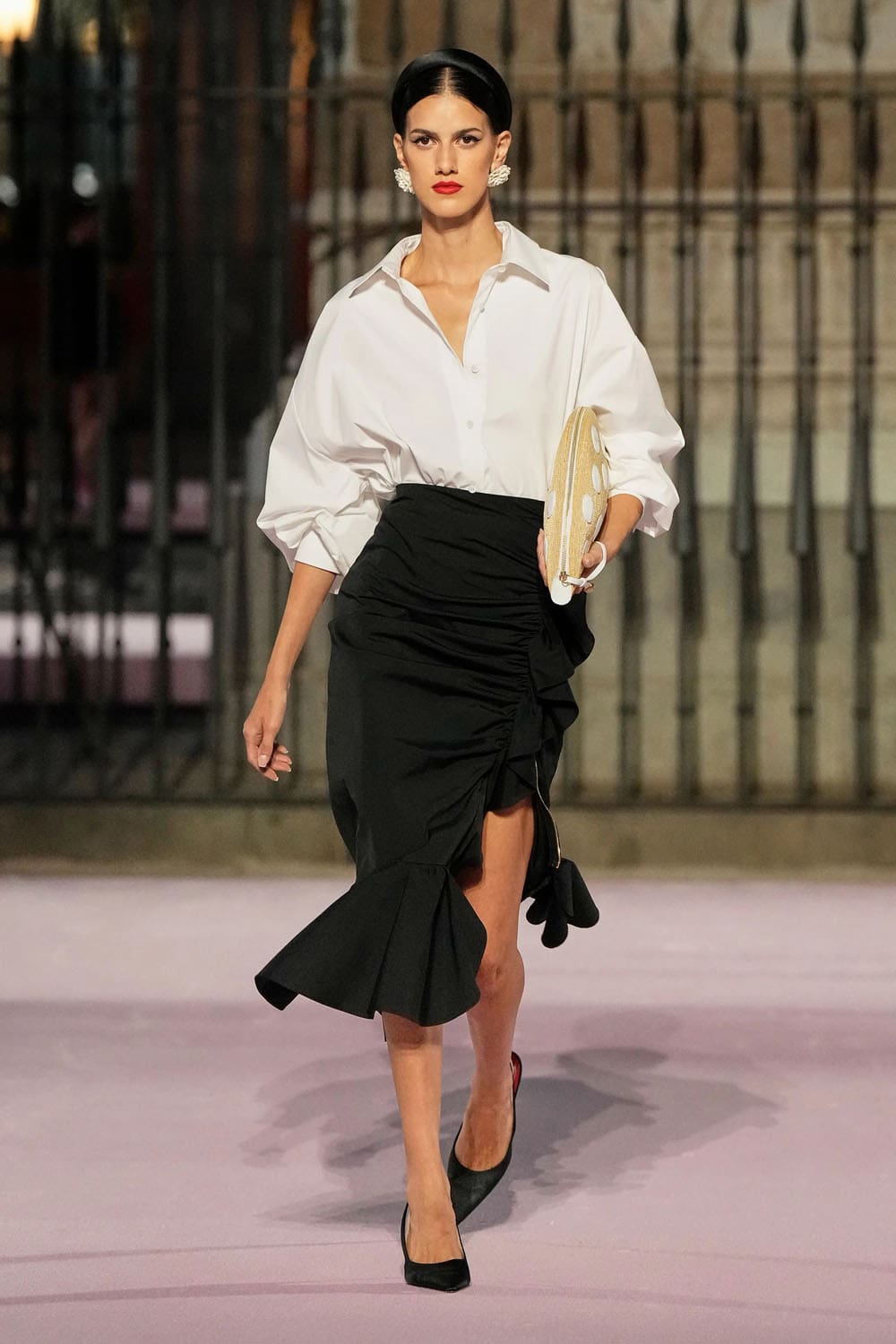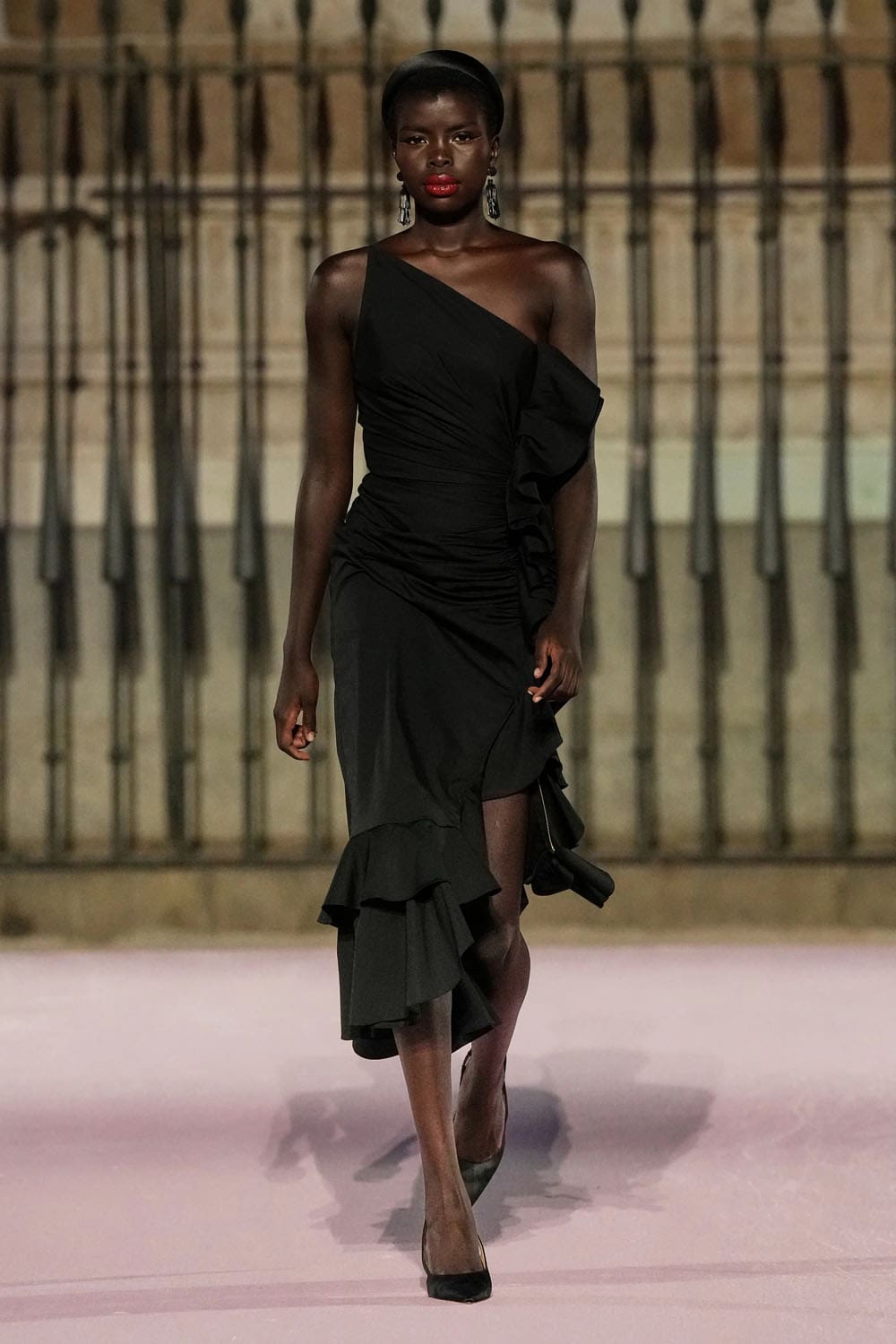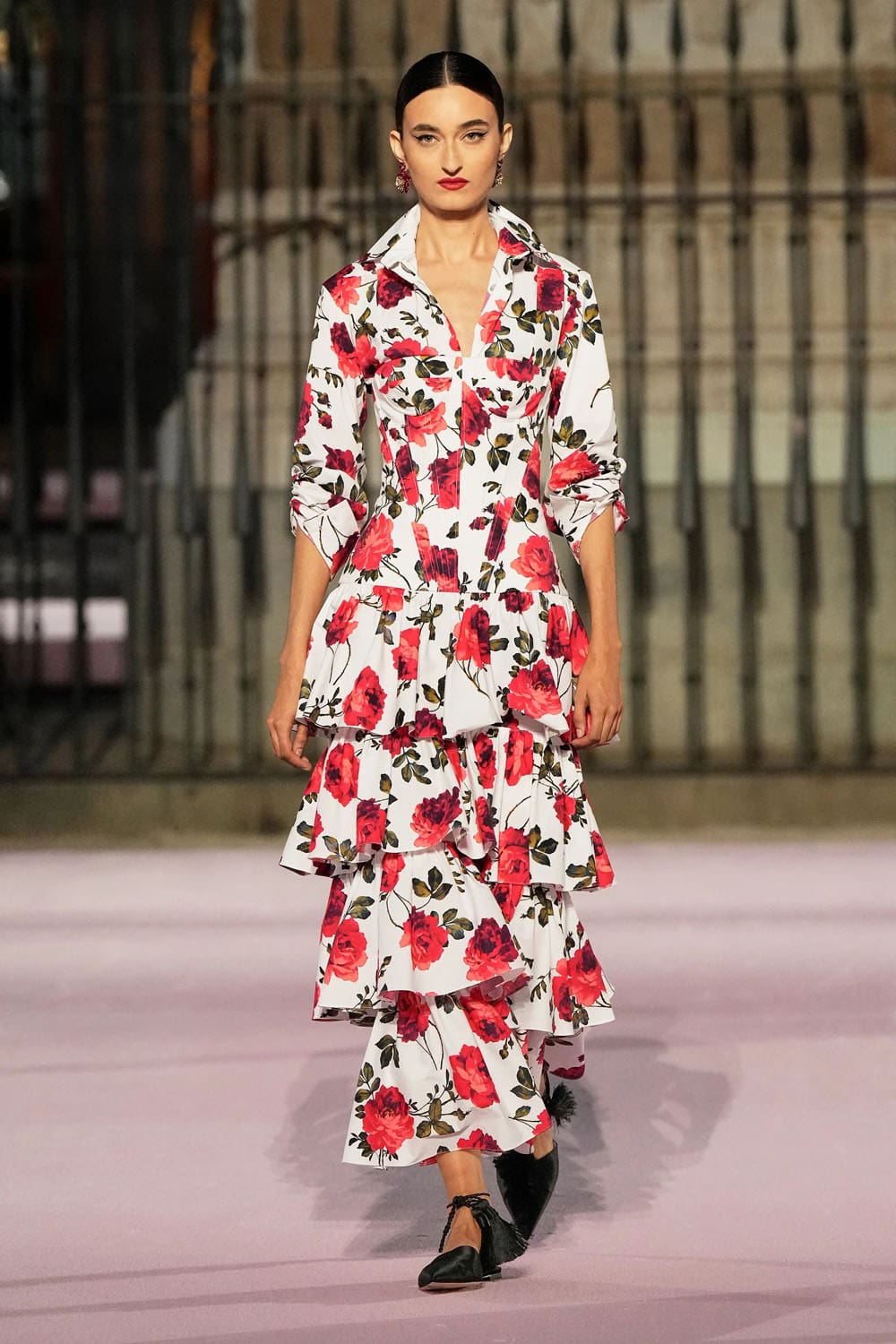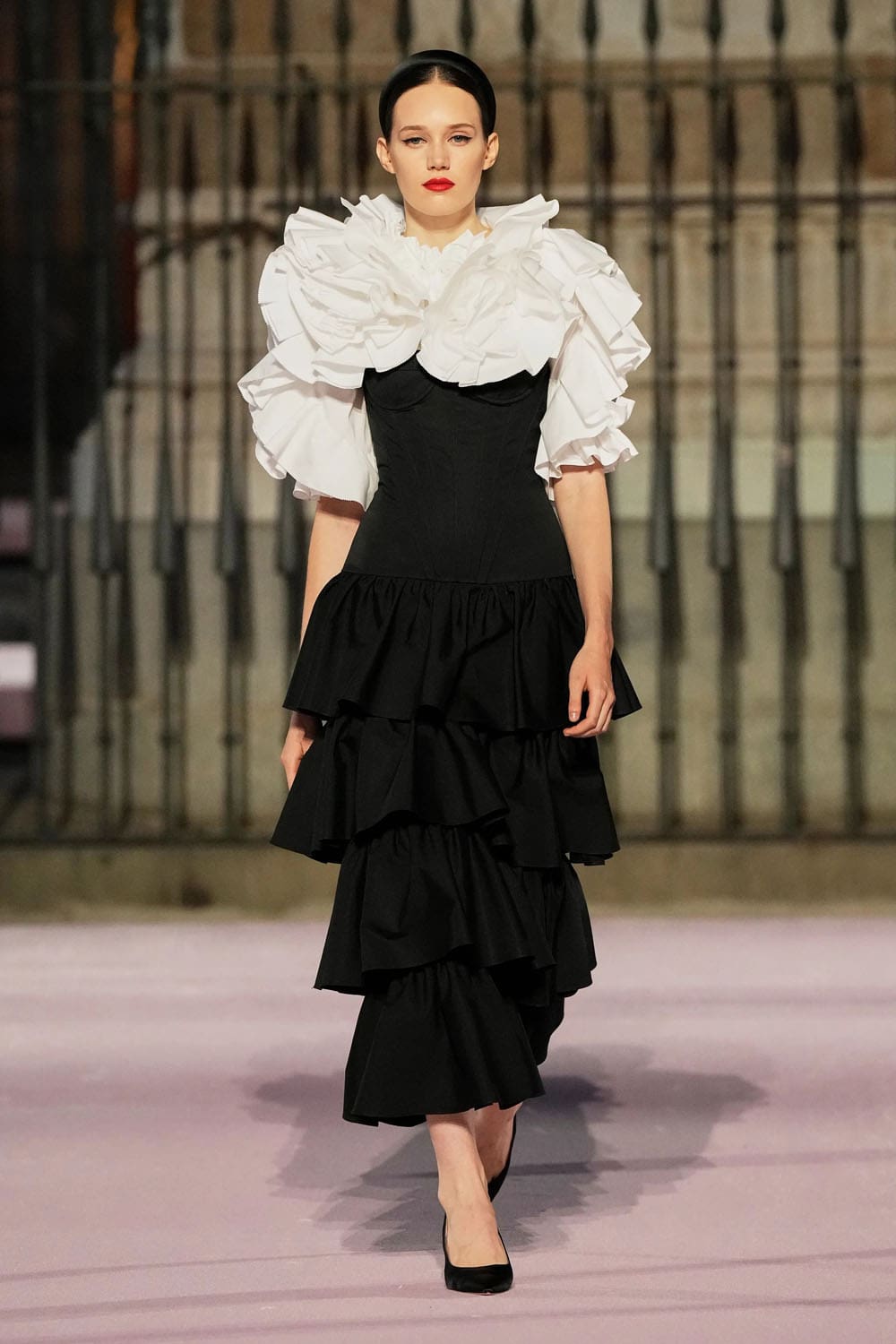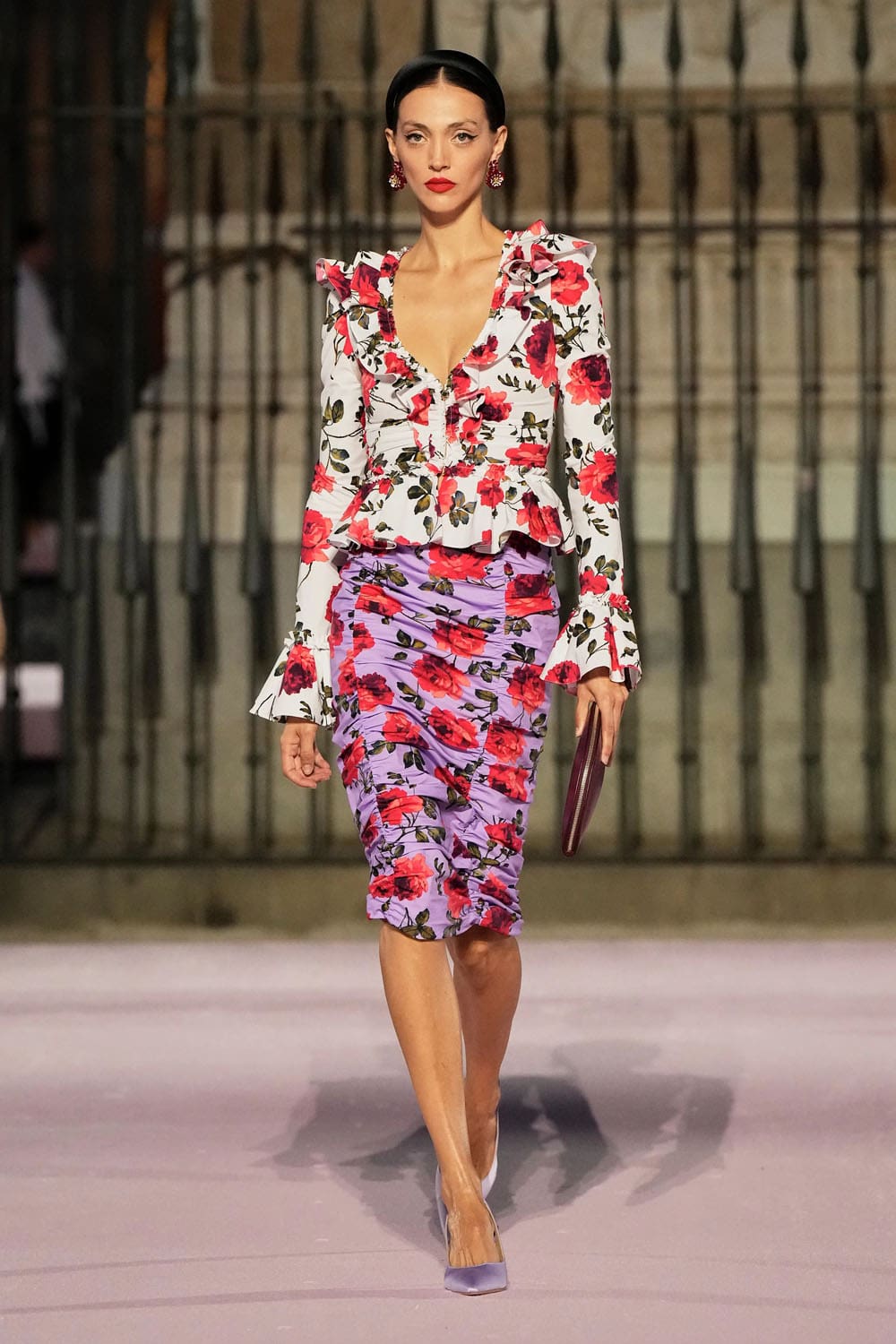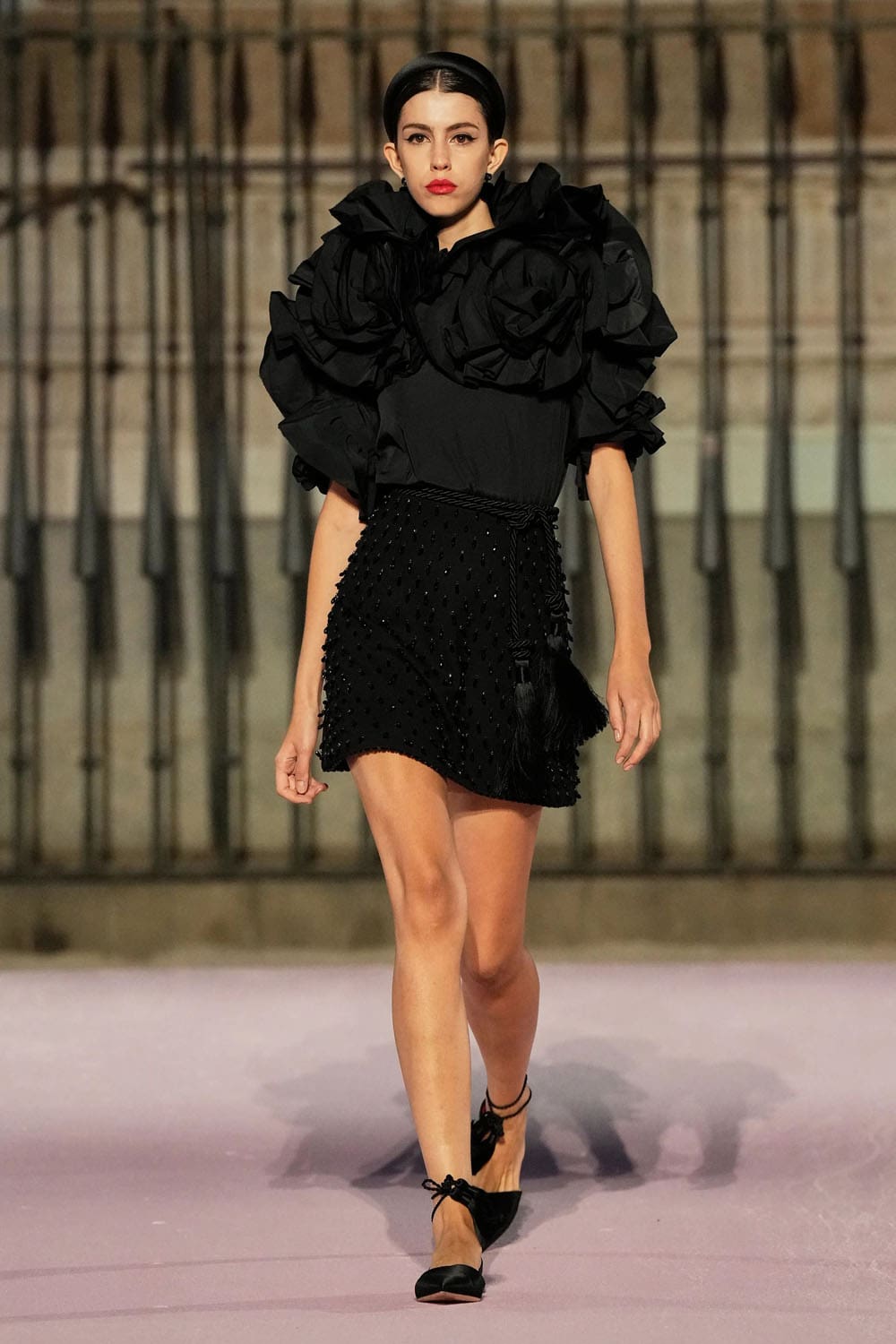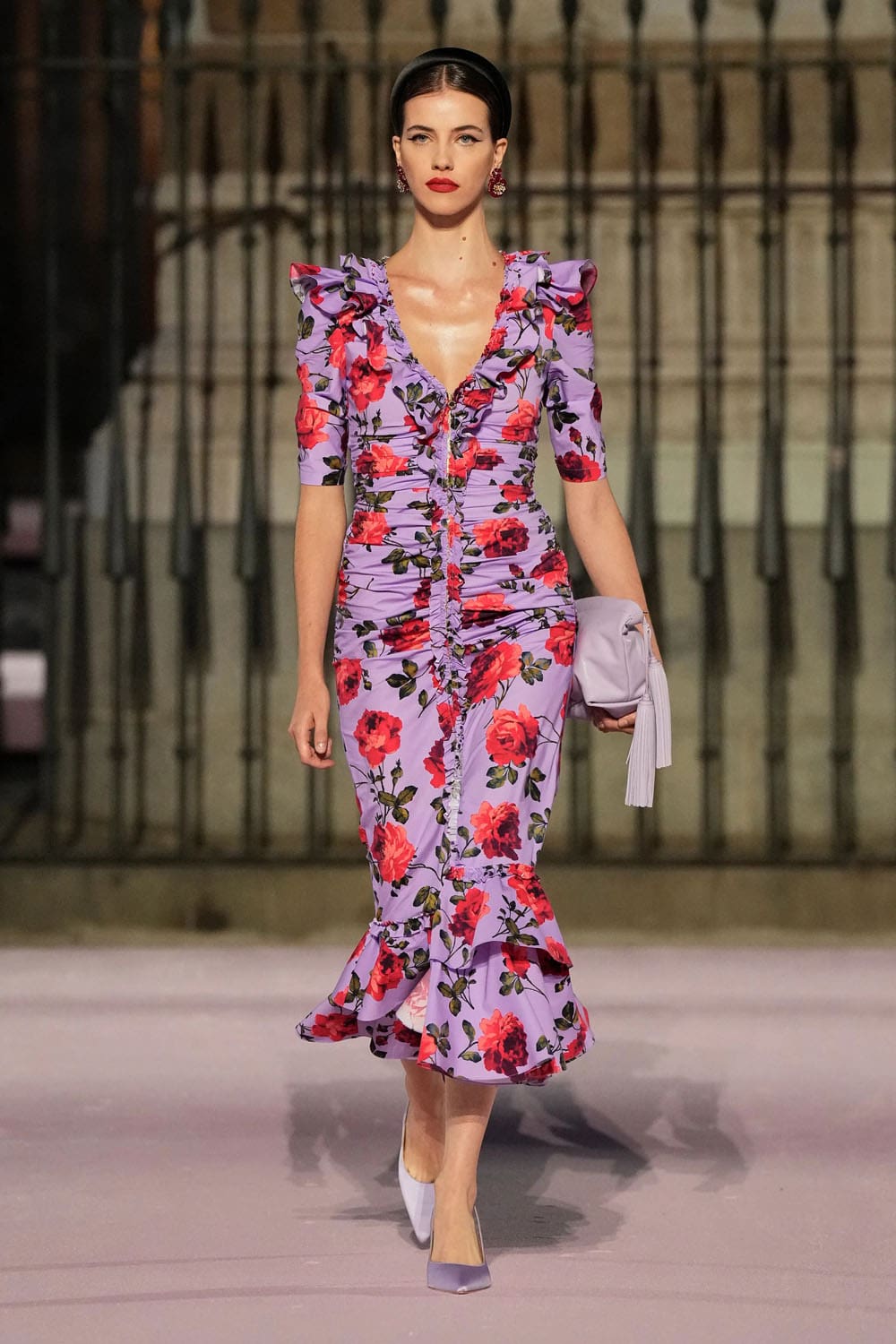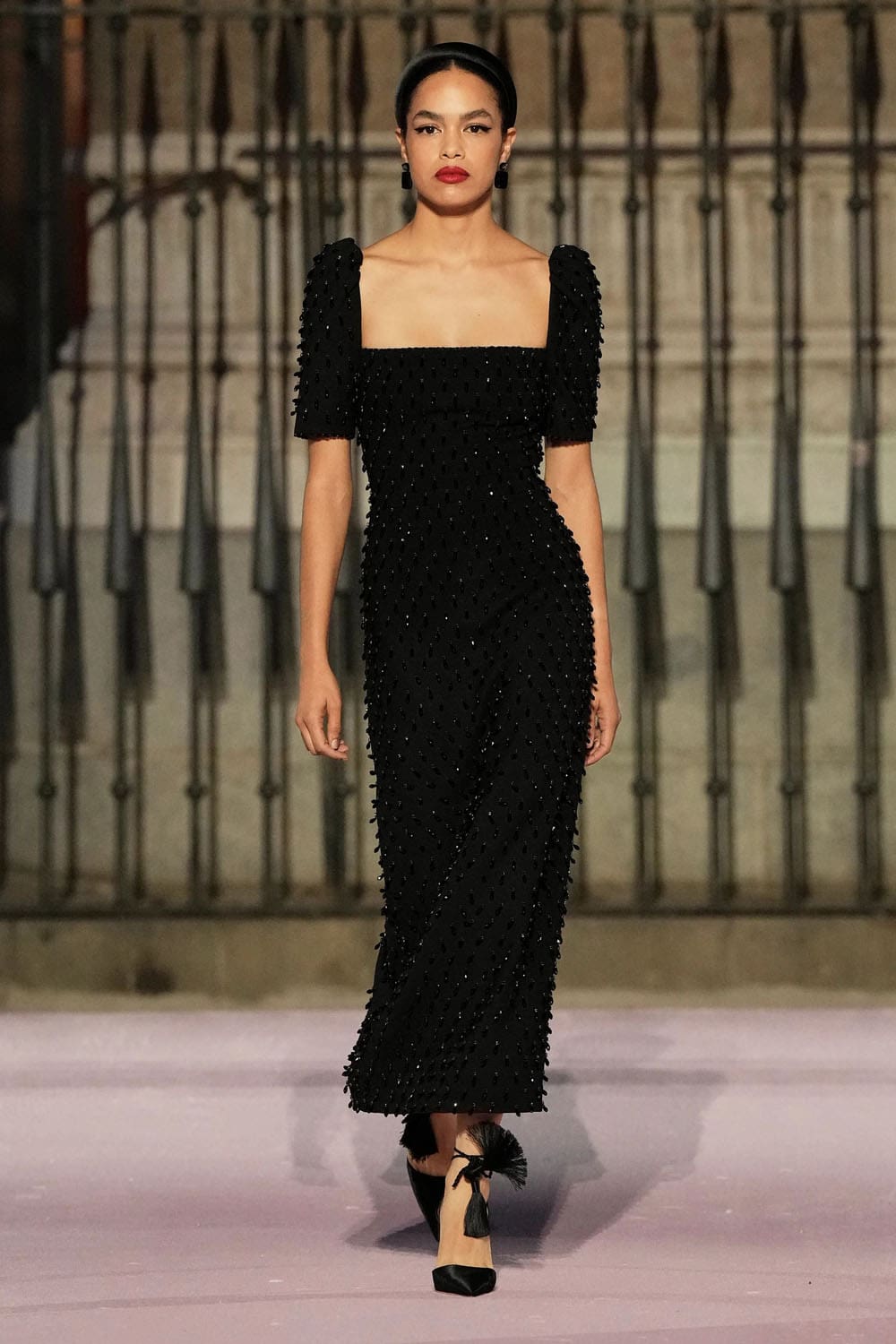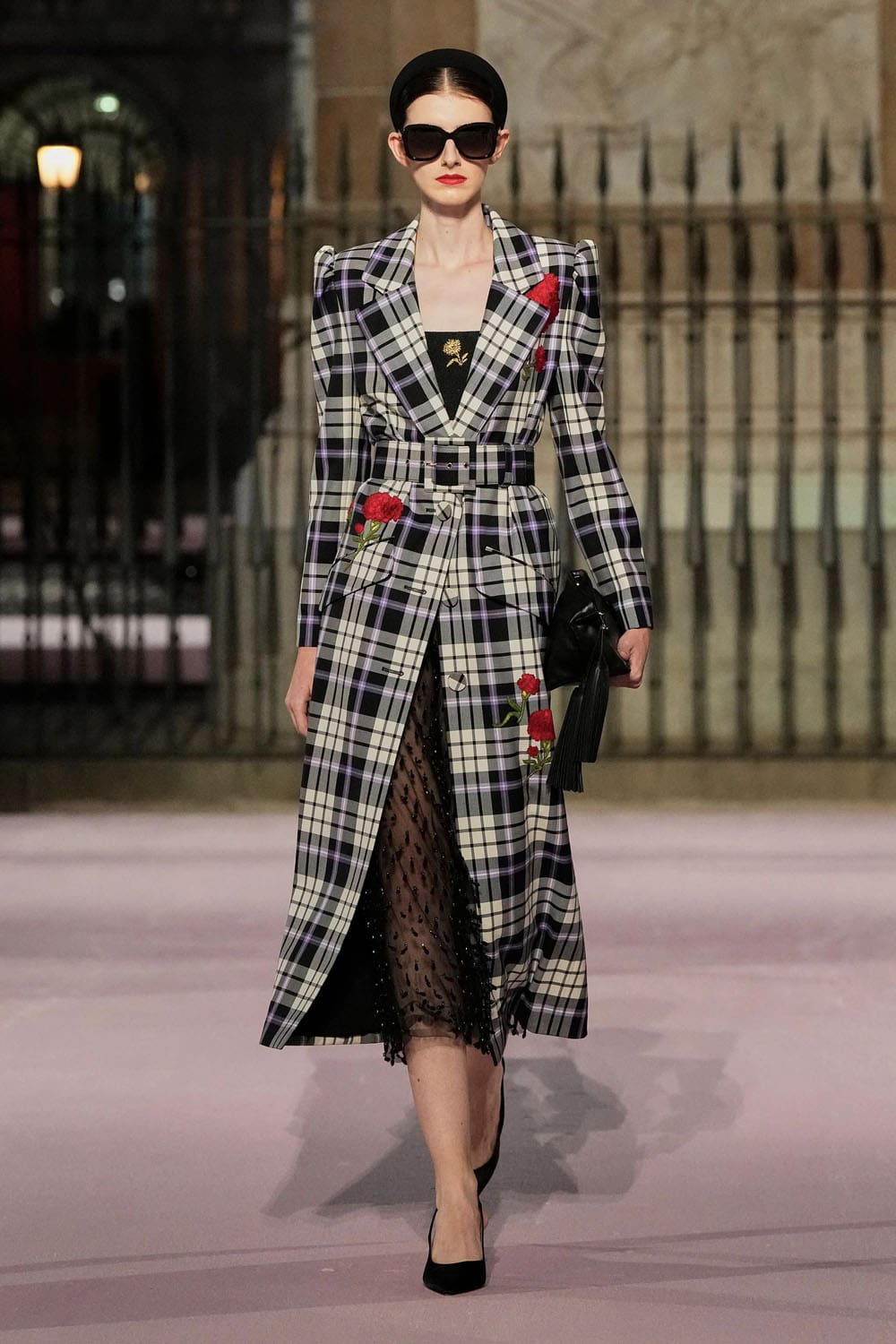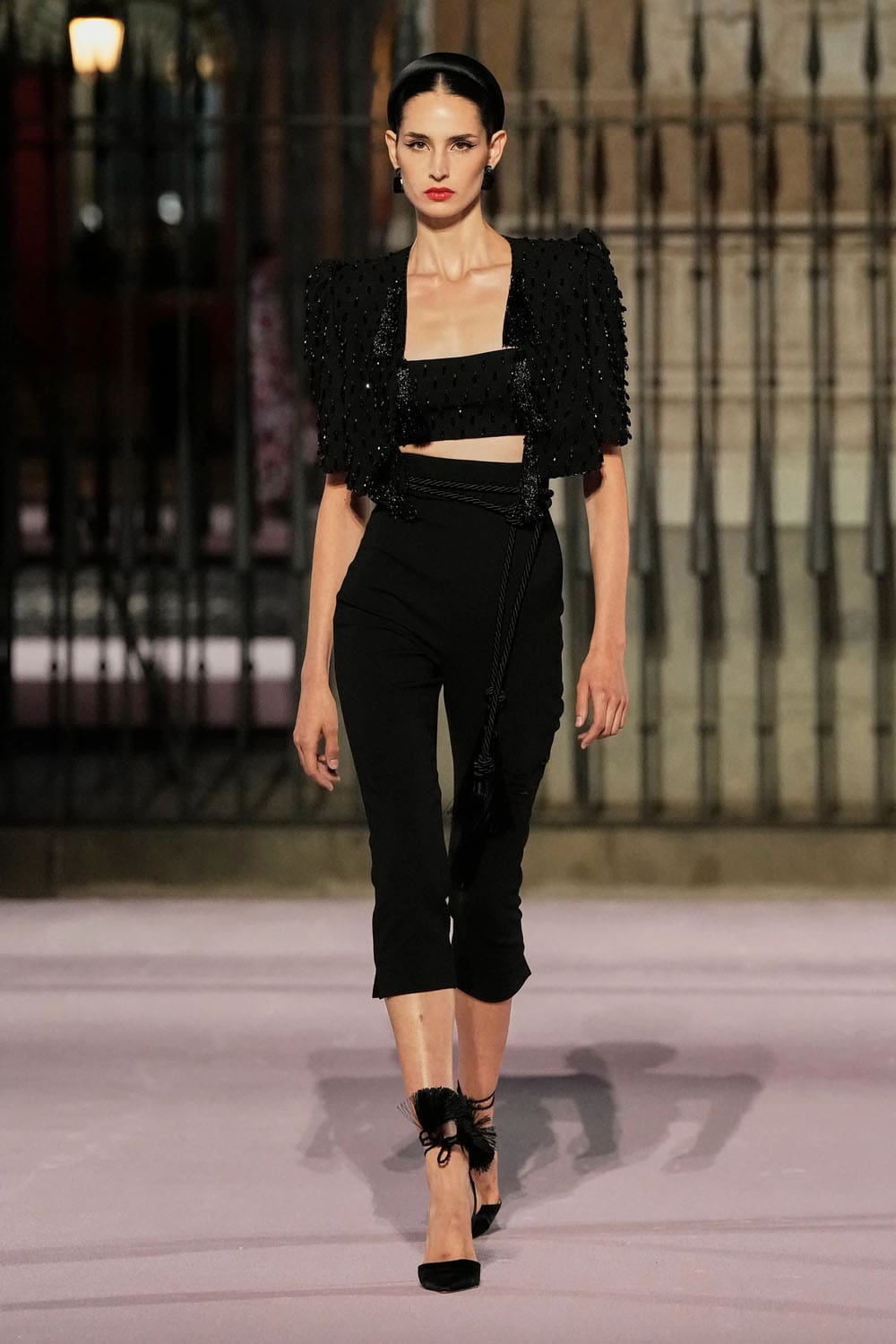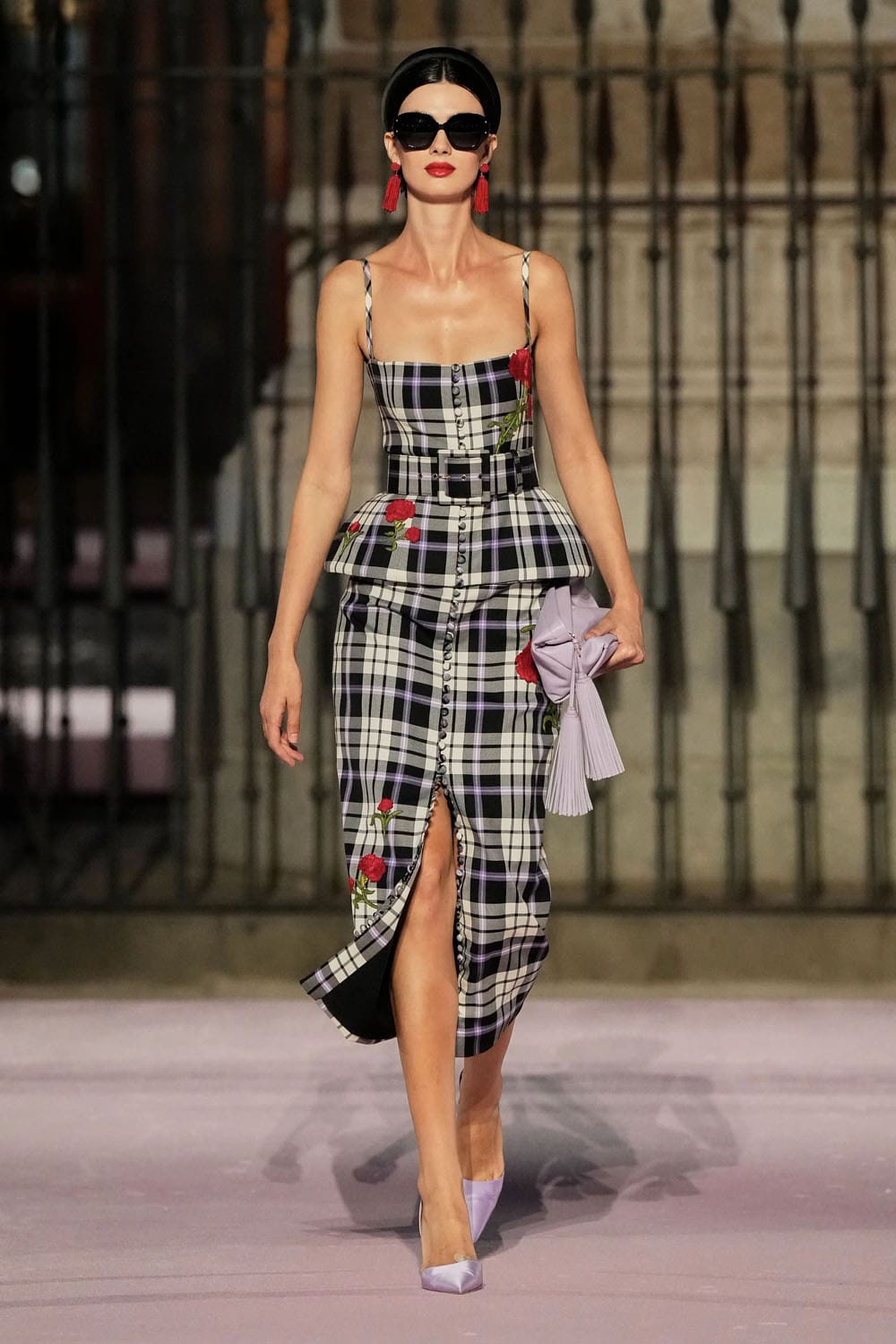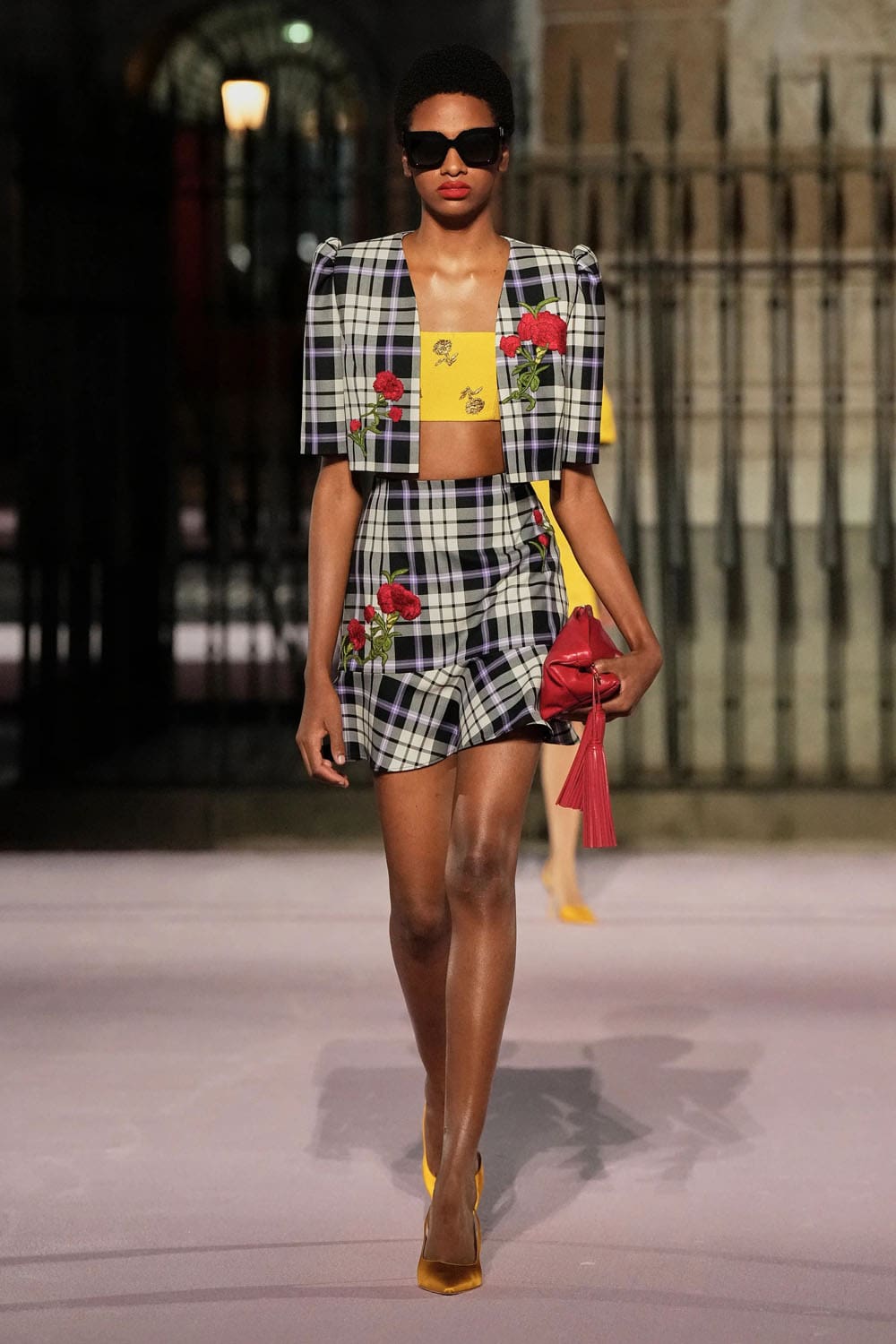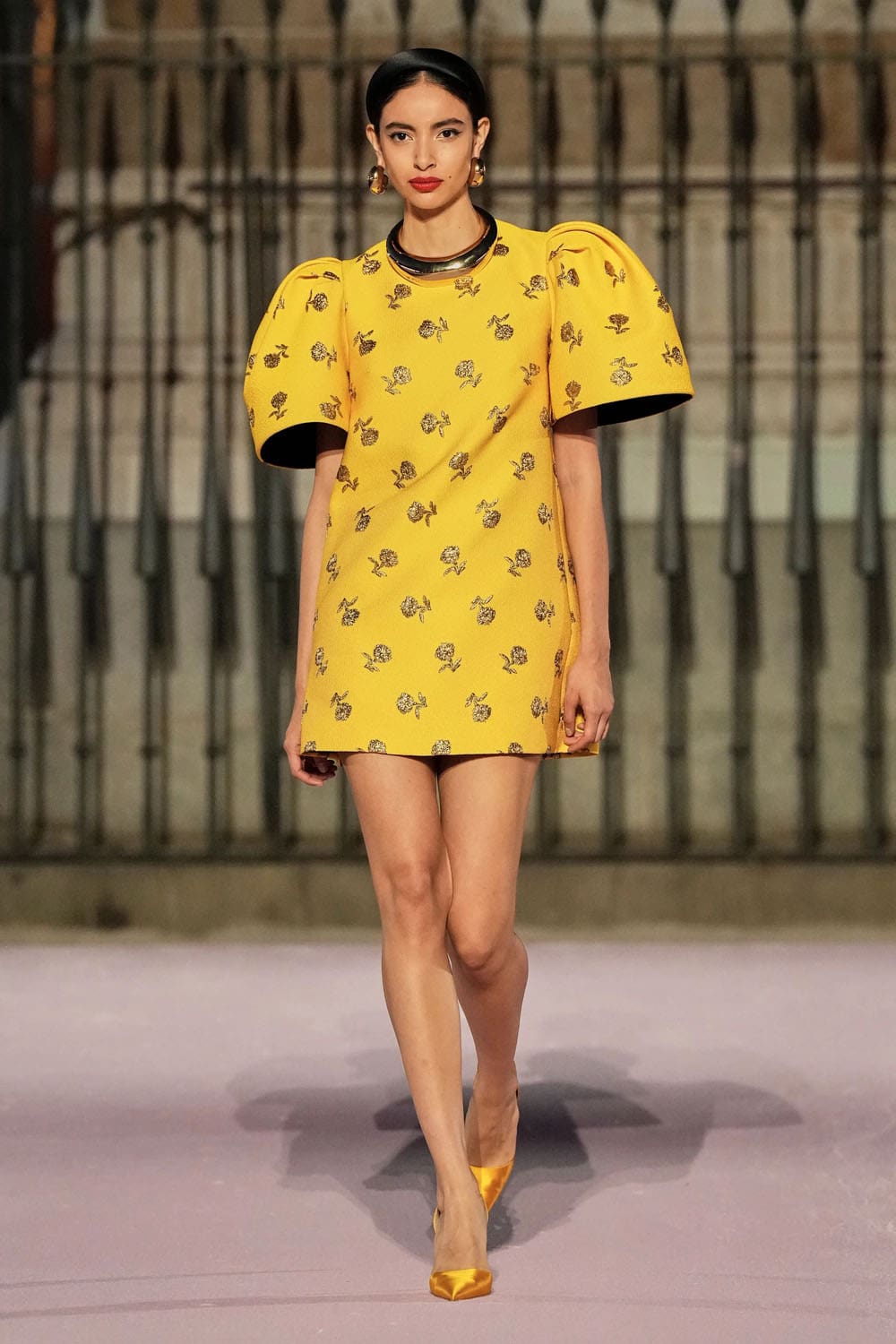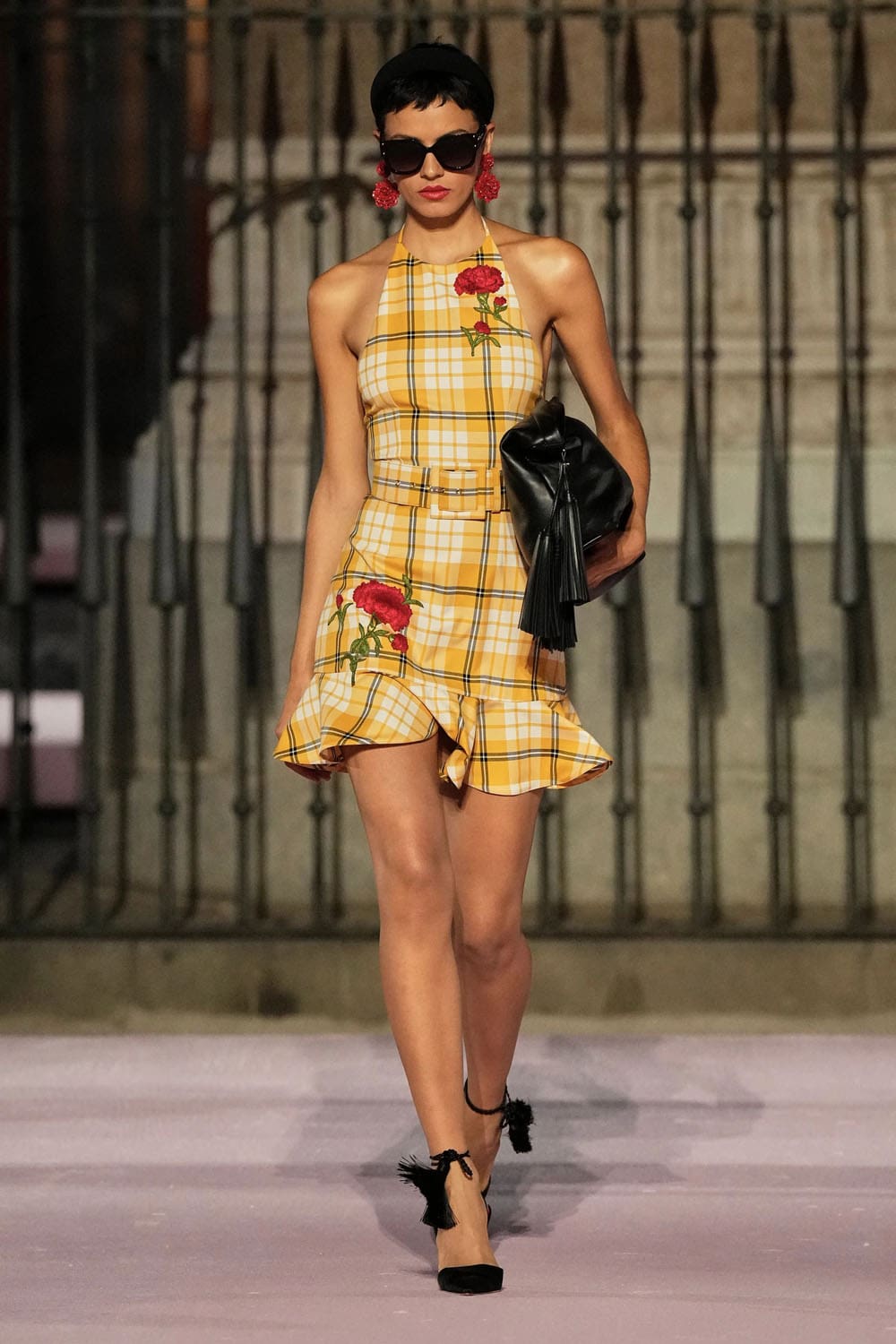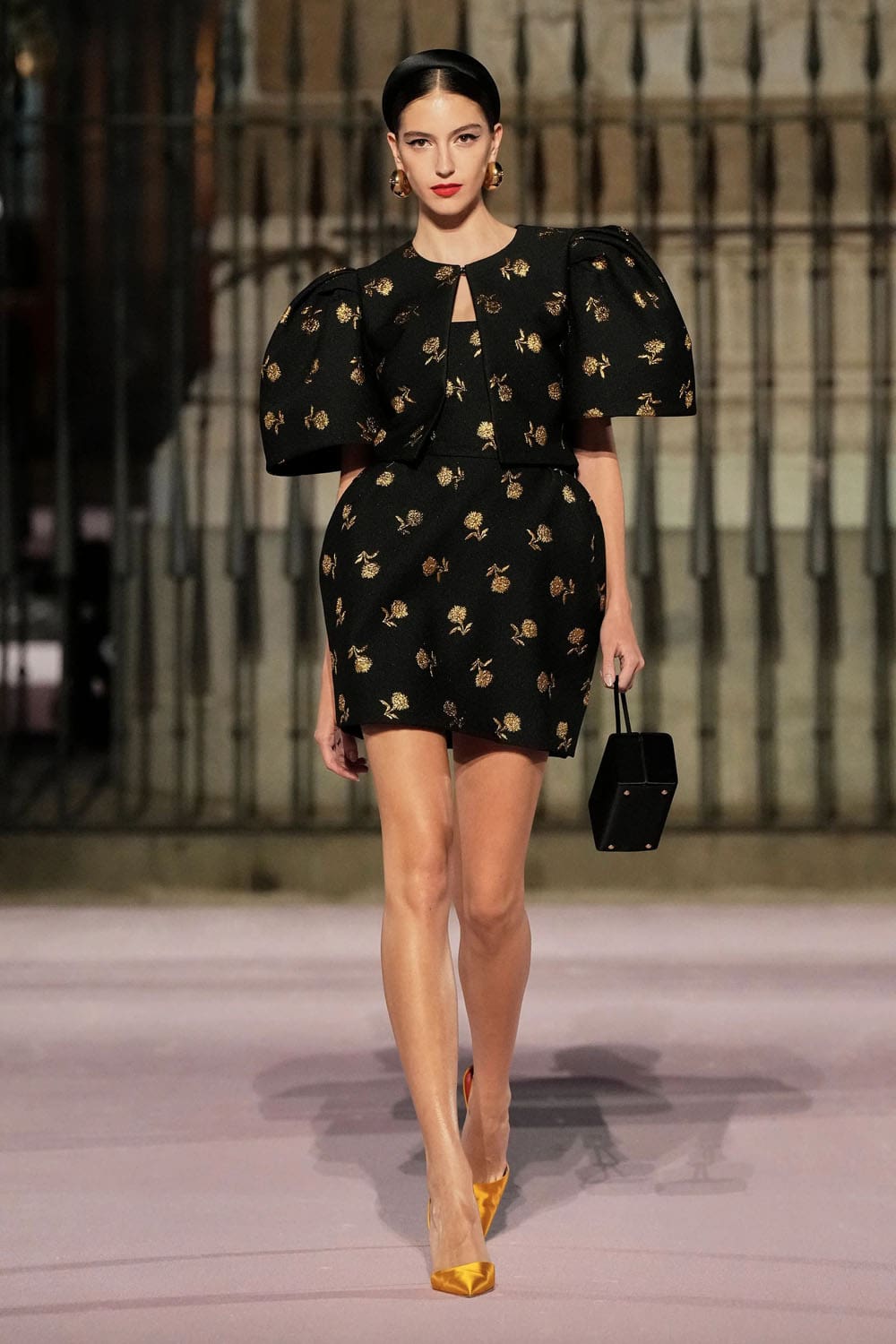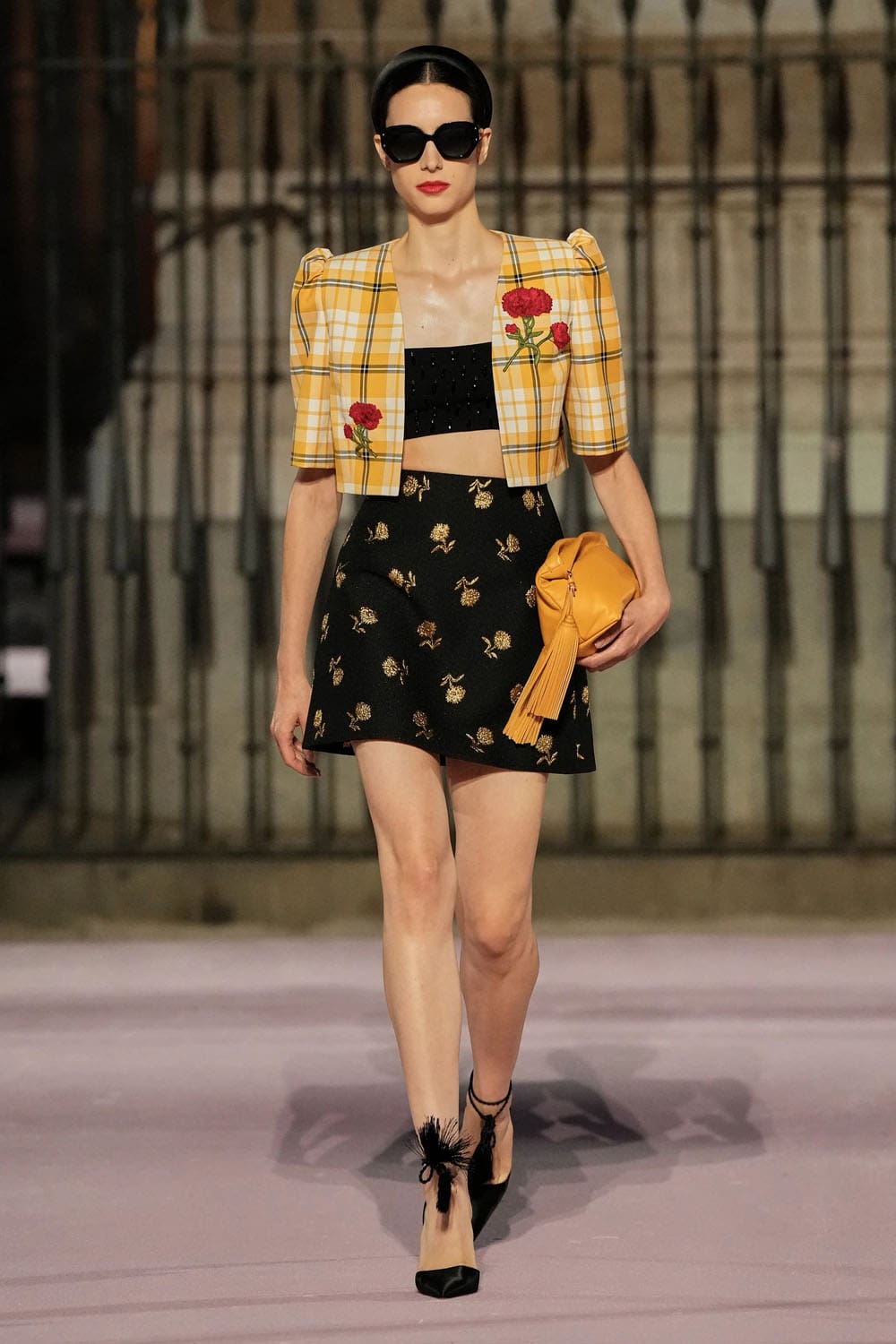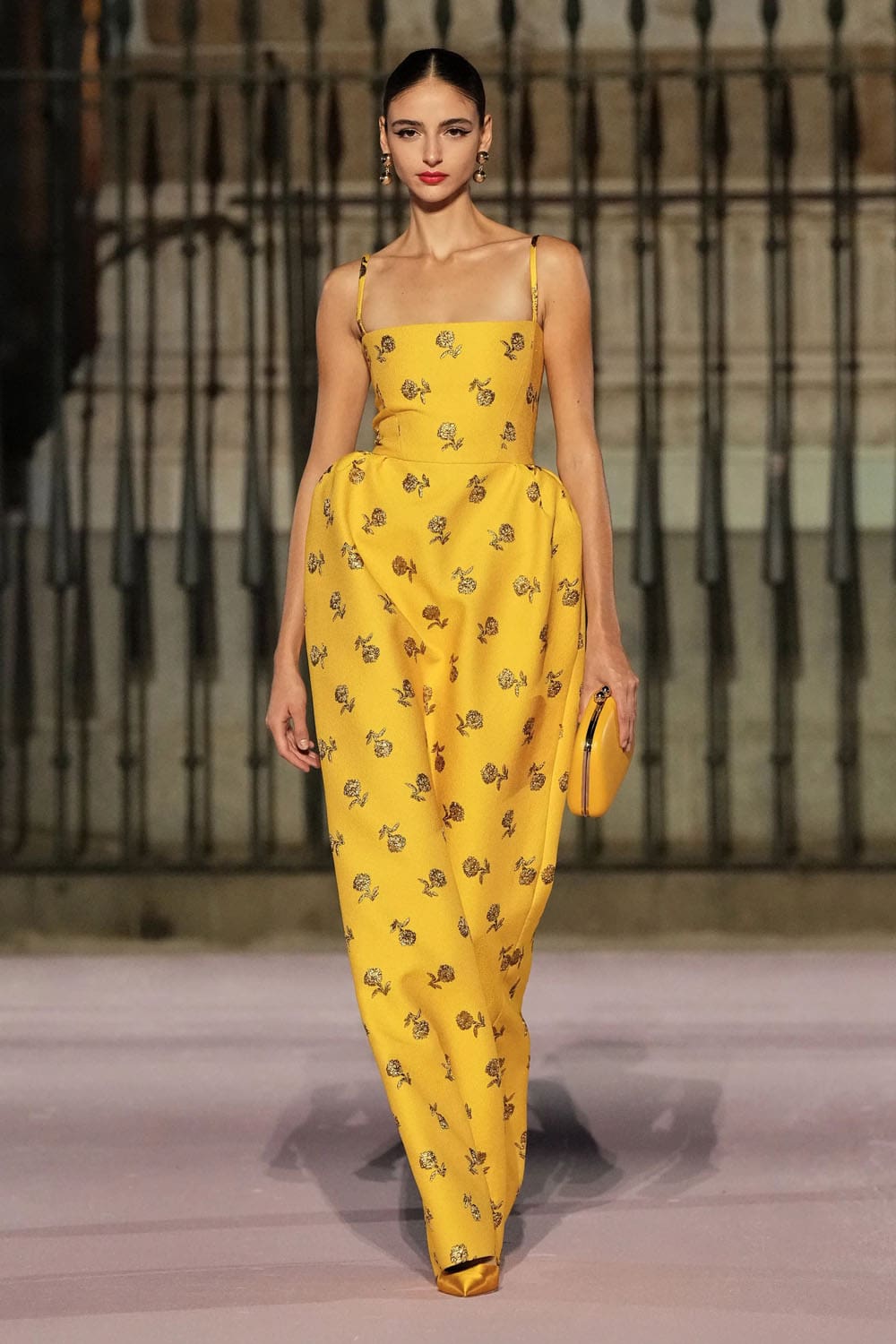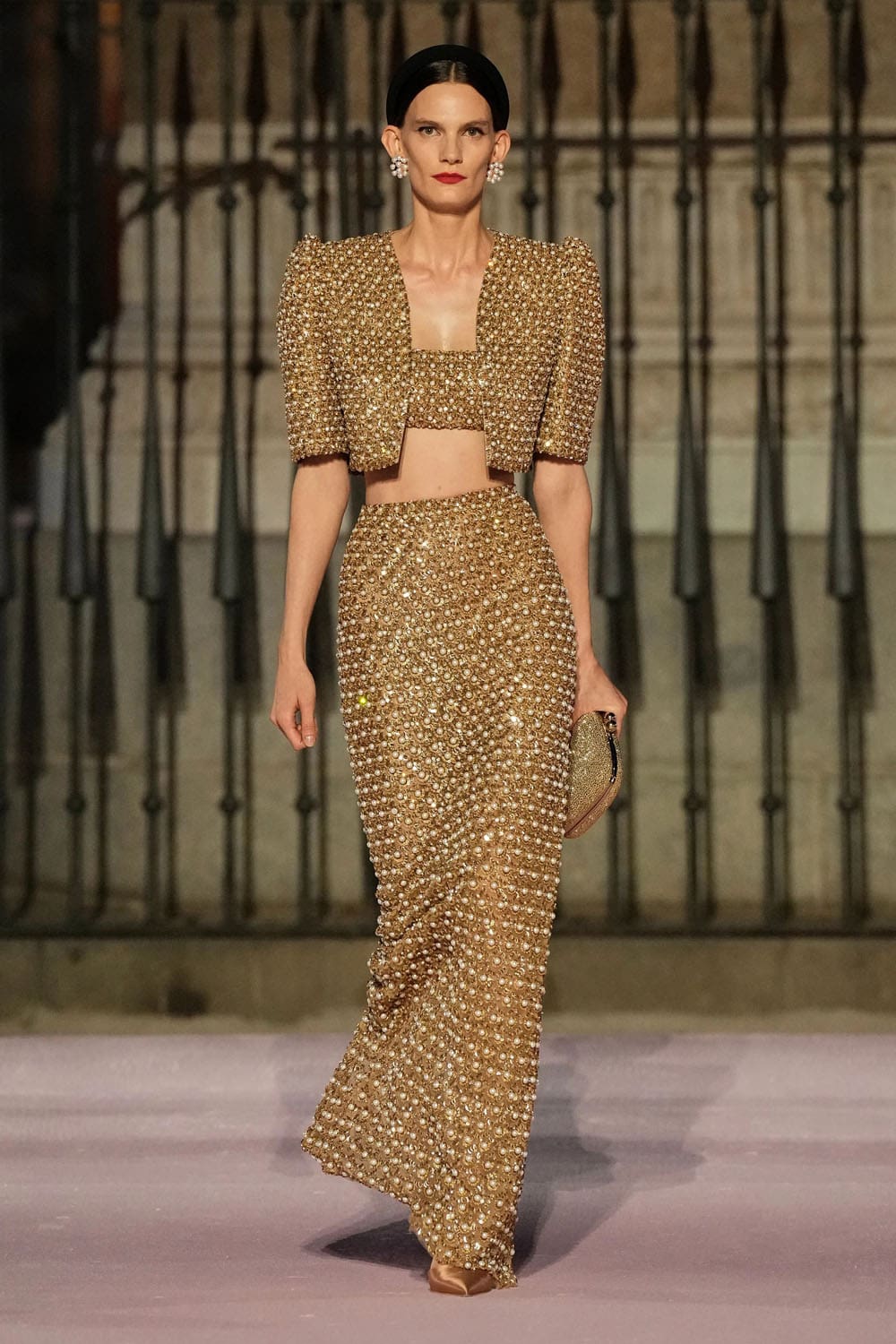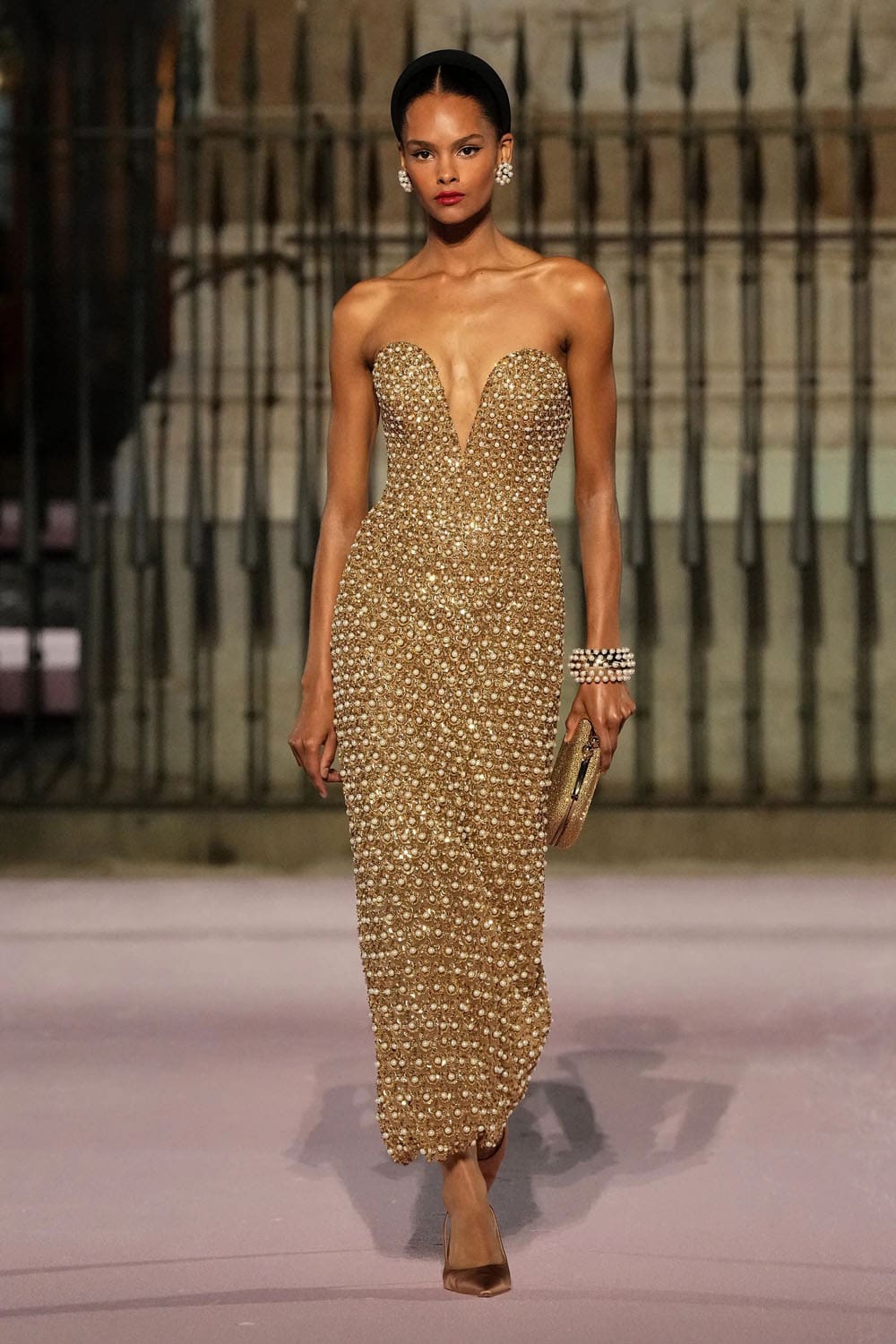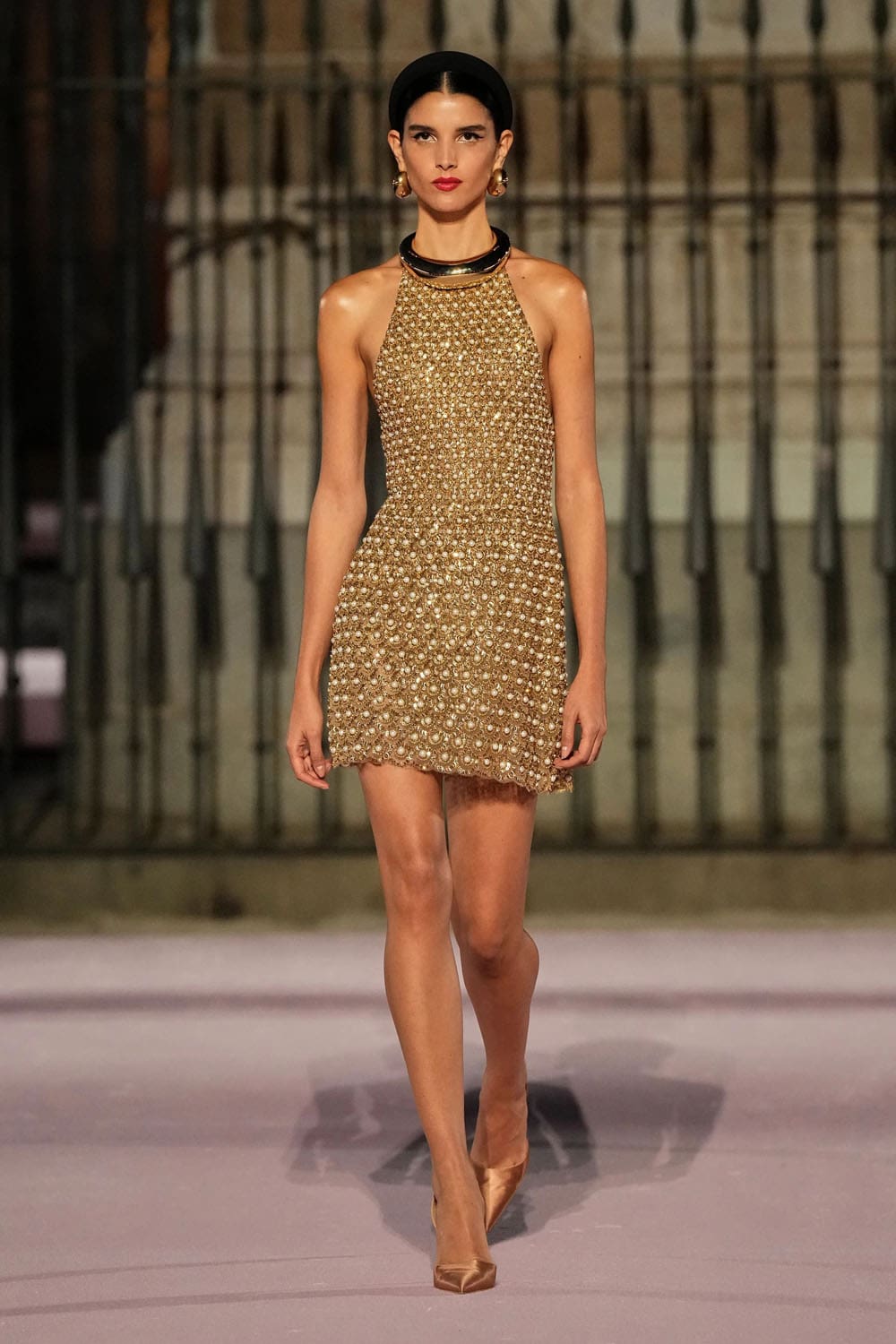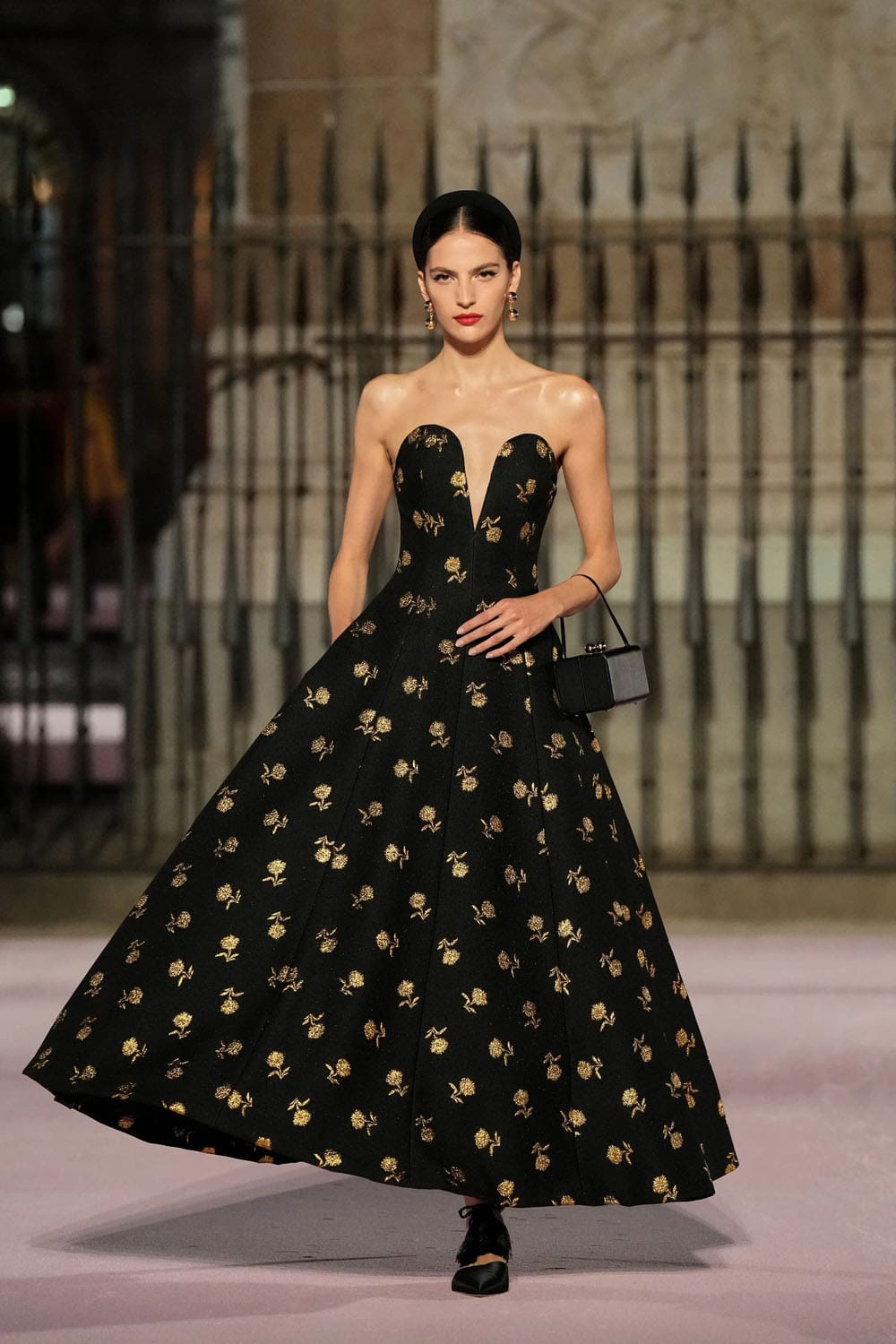Carolina Herrera Spring Summer 2026 Madrid “A Spanish Thesis in Three Acts”. Story by RUNWAY MAGAZINE. Photo Courtesy: Carolina Herrera.
Wes Gordon has never hidden his ambition to turn Carolina Herrera into a house that speaks loudly on the global stage. After Rio de Janeiro and Mexico City, he landed in Madrid last night with a runway spectacle staged at the Plaza Mayor — a 450-meter catwalk drenched in Herrera pink. For Spring Summer 2026, Gordon framed his vision around two eras of Spain: the 15th–16th century Golden Age and the 1980s cultural rupture known as La Movida.
The opening gesture was pure theater — a black ballgown, monumental in scale, a Prado painting in motion. It was less about wearability and more about establishing context: grandeur, heritage, and Spanish identity as visual reference points. Gordon, wisely, did not attempt to repeat that crescendo. Instead, across 77 looks, he found a balance between historical weight and youthful spirit.
Heritage Meets Subculture
The “Meninas” skirts — ankle-length and voluminous — brought a modern twist by refusing the floor-sweeping excess. Toreador-inspired pedal pushers, some fully beaded and paired with corsetry, gave the collection its sharper, street-aware edge. This is where Gordon’s synthesis of Golden Age formality and Movida irreverence felt most convincing: silhouettes drawn from court paintings colliding with an attitude born of Almodóvar cinema and Madrid nightlife.
A notable strength of this season was Gordon’s decision to engage with Spanish contemporaries. Sybilla contributed fluid shift dresses with floating panels in Herrera’s codes of red and black — precise, minimal, yet charged with movement. Palomo Spain reinterpreted the white blouse with tunics and ankle-length cuts, collars standing high and sleeves inflated; these were standout pieces that placed Herrera firmly in dialogue with today’s Spanish avant-garde rather than locked in nostalgic homage.
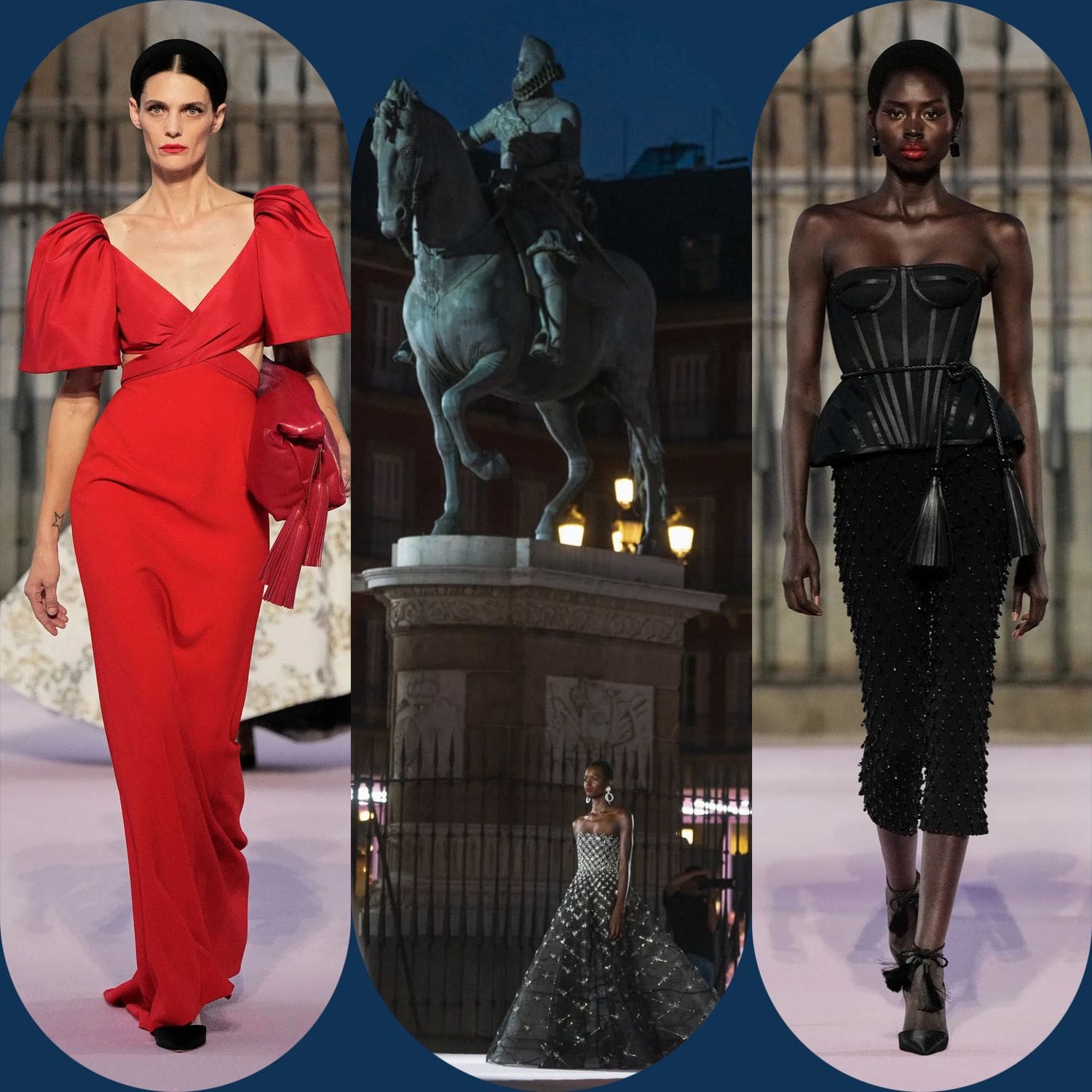
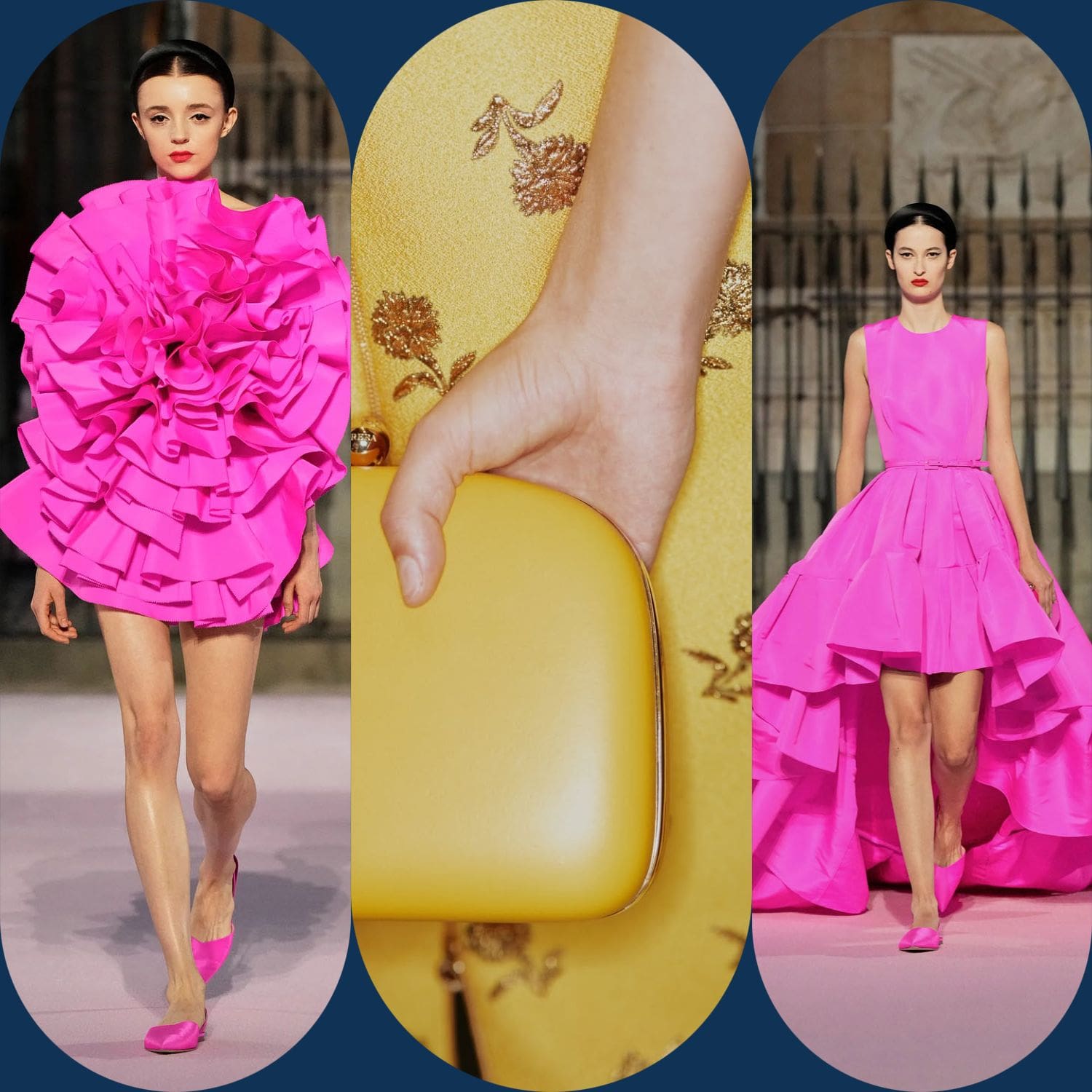
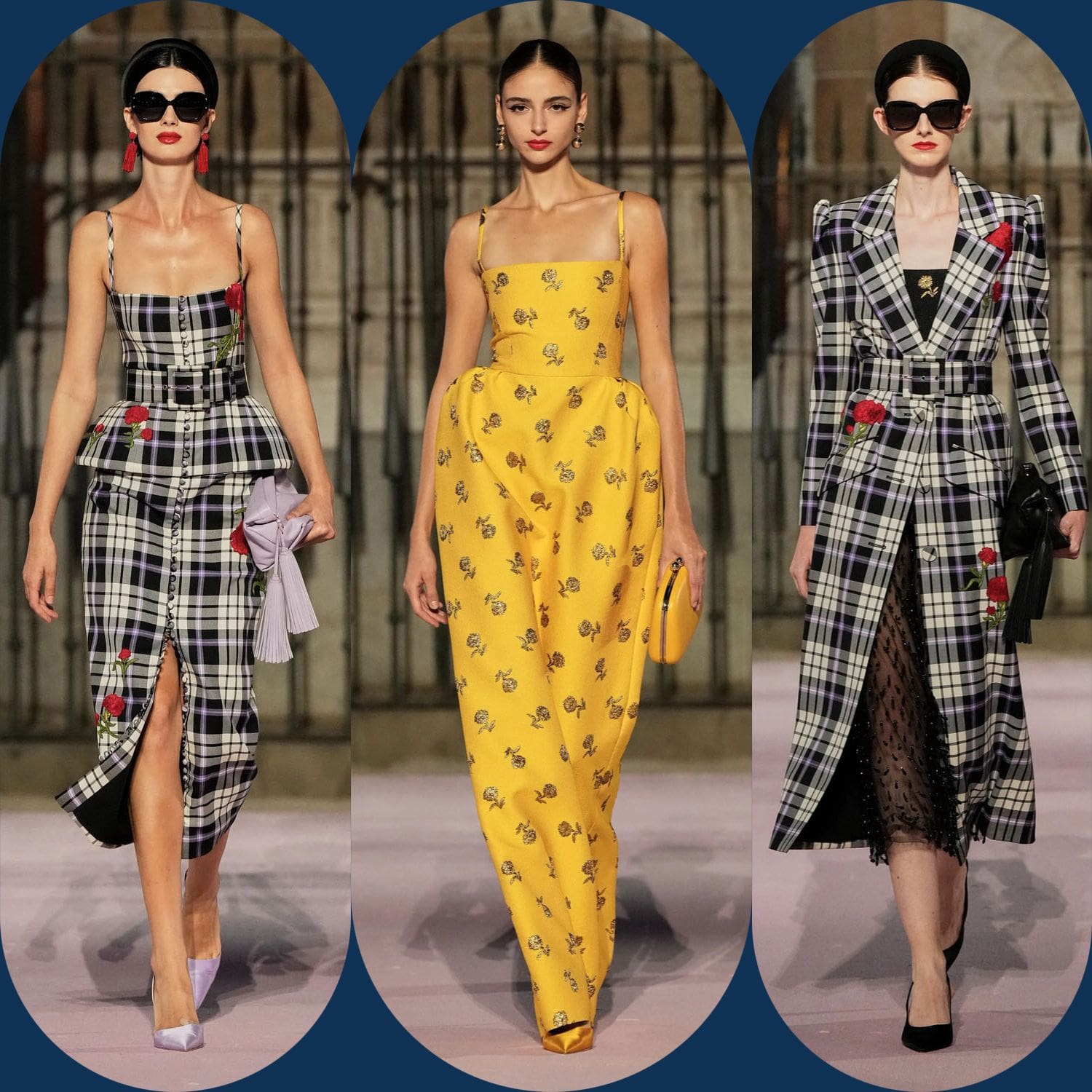
The Golden Age – Power, Ceremony, and Proportion
The opening look, a sweeping black taffeta ballgown, operated less as a dress and more as a visual anchor — not just “Prado-esque,” as Gordon described it, but ideologically charged. The Spanish Golden Age was a period of global imperialism, court protocol, and theatrical display. Gordon answered that with volume, weight, and a silhouette that refused subtlety. This gown said: I know where I am, and I know who came before.
He didn’t stay in that register. Instead, he scattered references like architectural fragments — the “Meninas” skirts now cut to the ankle, formal but agile. A toreador’s cropped black jacket became pedal-pusher pants, embroidered to a point of near-rigidity, but then softened with corsets and fringe — a clever hybrid of masculine armor and feminine ornament.
These weren’t costumes. They were structural echoes, disassembled and reimagined.
La Movida – After the Collapse, Color and Defiance
If the 16th century gave Gordon his structure, the 1980s gave him his subversion. Spain’s post-Franco era was defined by aesthetic rebellion: loud color, liberated bodies, excess without apology. And within that lineage, the presence of Pedro Almodóvar — seated at the show — was not decorative. It was a declaration.
Gordon’s own reference to “Penélope,” clearly invoking Cruz’s early Almodóvar roles, was telling. It wasn’t about a muse. It was about a gaze. These clothes, particularly the floral corseted dresses and sharply tailored mini-jackets, echoed Almodóvar’s women — not passive subjects, but protagonists: seductive, assertive, emotionally armed.
This phase of the collection pulsed with life: florals rendered not as prints but as embroidered declarations, drawn from Spain’s own botanical symbols — the rose, the carnation, the violet. Not one flower chosen arbitrarily. Not one stitch without context.
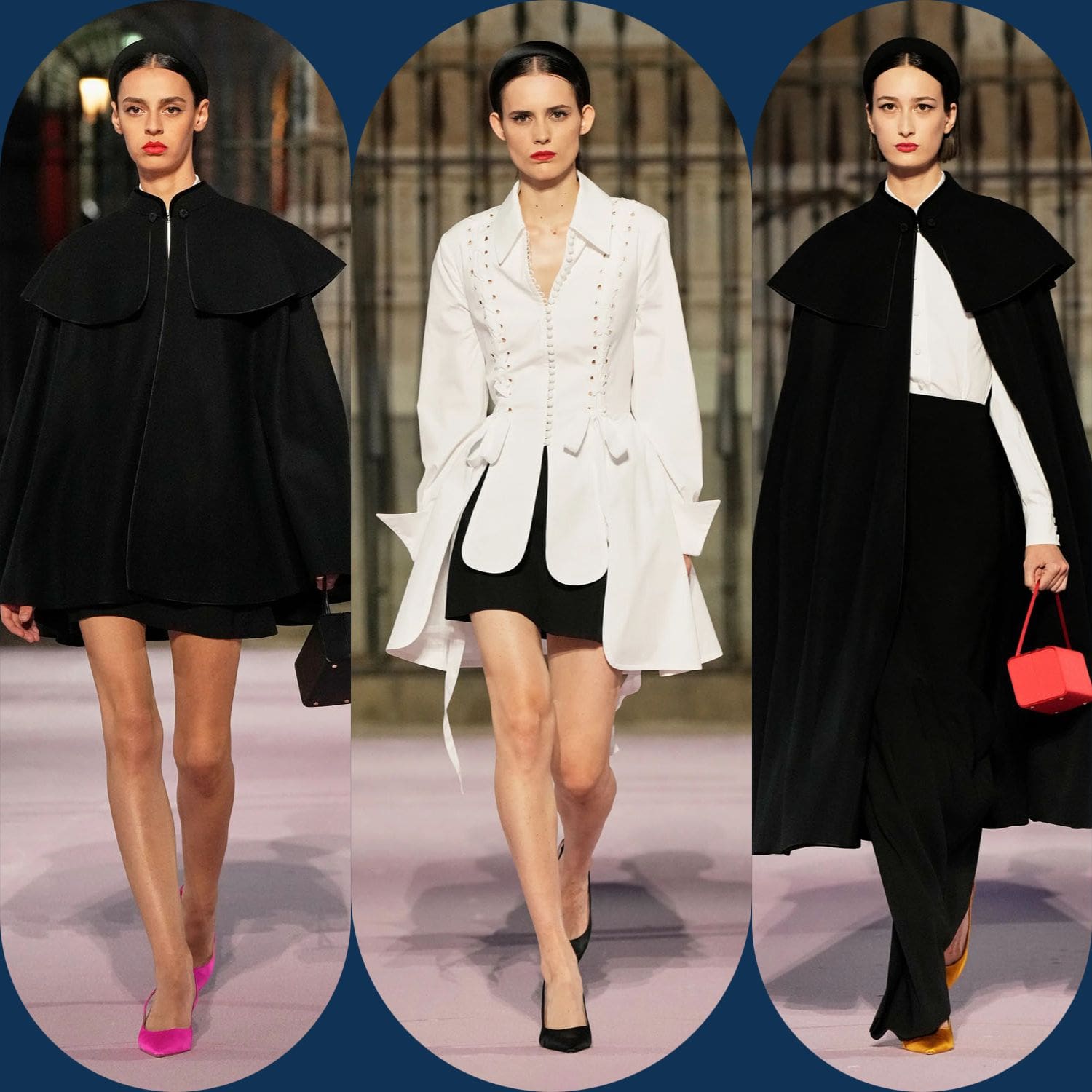
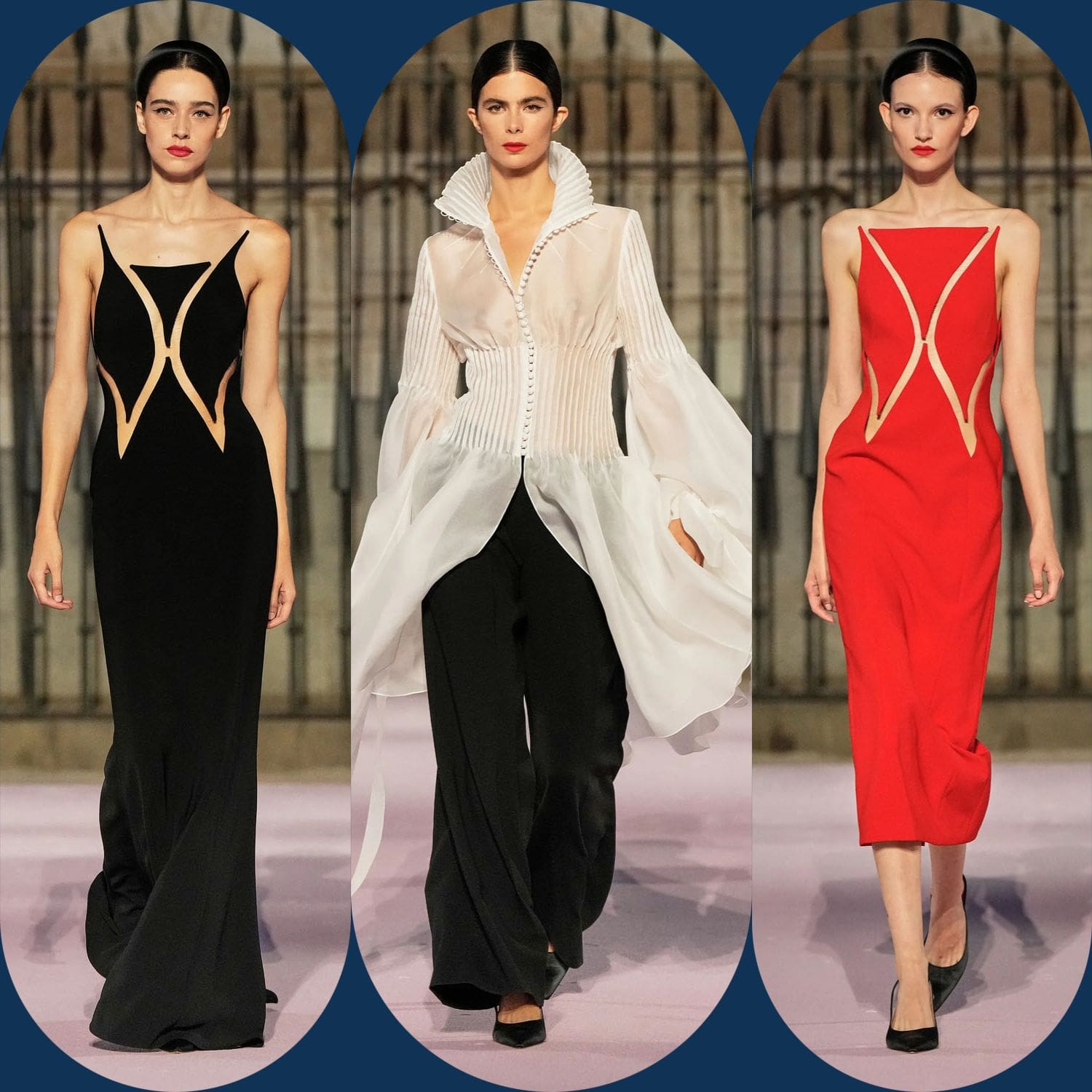
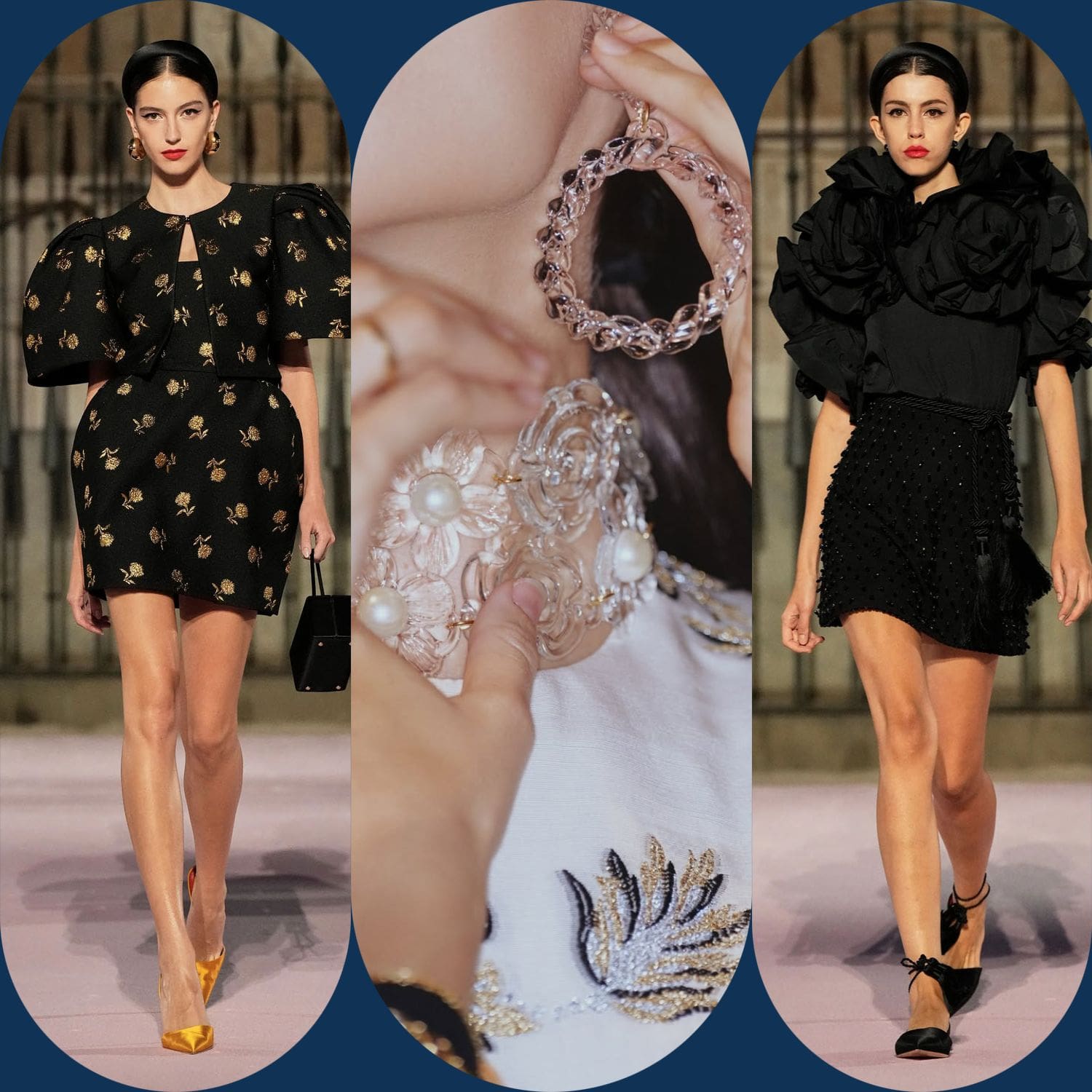
Contemporary Spain – Dialogue
The most intelligent decision Gordon made was to relinquish authorship. This wasn’t an American designer bringing a brand to Spain — this was a platform for Spanish design to speak for itself. Collaborations with Sybilla and Palomo Spain were not guest spots, they were structural.
Sybilla’s geometric shift dresses, red and black panels floating in quiet tension, added a layer of minimalism the show needed. Meanwhile, Palomo Spain’s white blouses — tunic-length, high-collared, sleeves erupting in volume — were arguably the most Herrera-coded pieces on the runway, even as they redefined what a blouse can be.
And then came the gold. As the show closed with heavily embellished dresses, Gordon returned to the baroque, to ceremony, to excess as discipline. It was not simply a finale. It was a coronation — a recognition that technical virtuosity still has a place on a modern runway, if one dares to demand it.
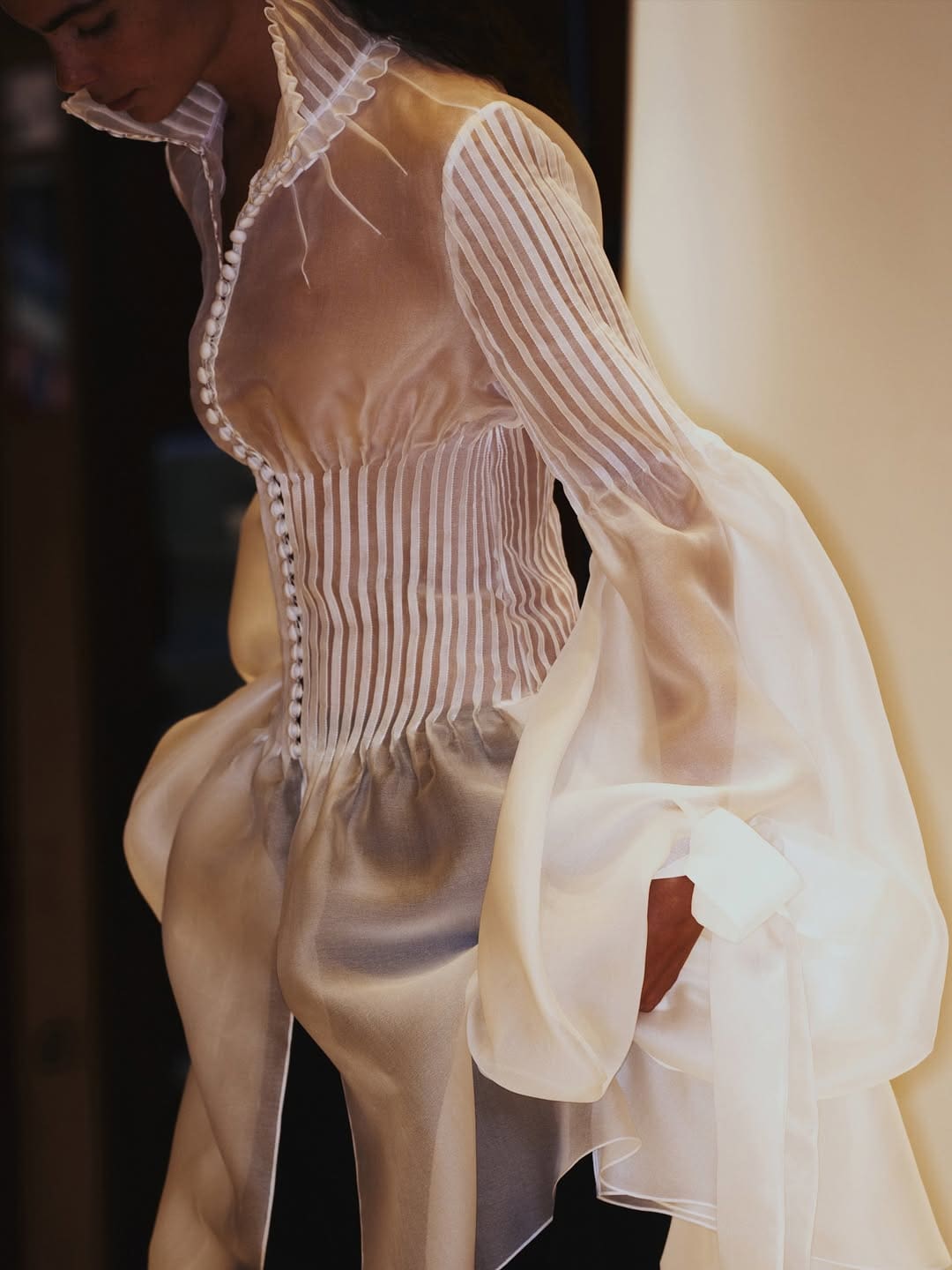
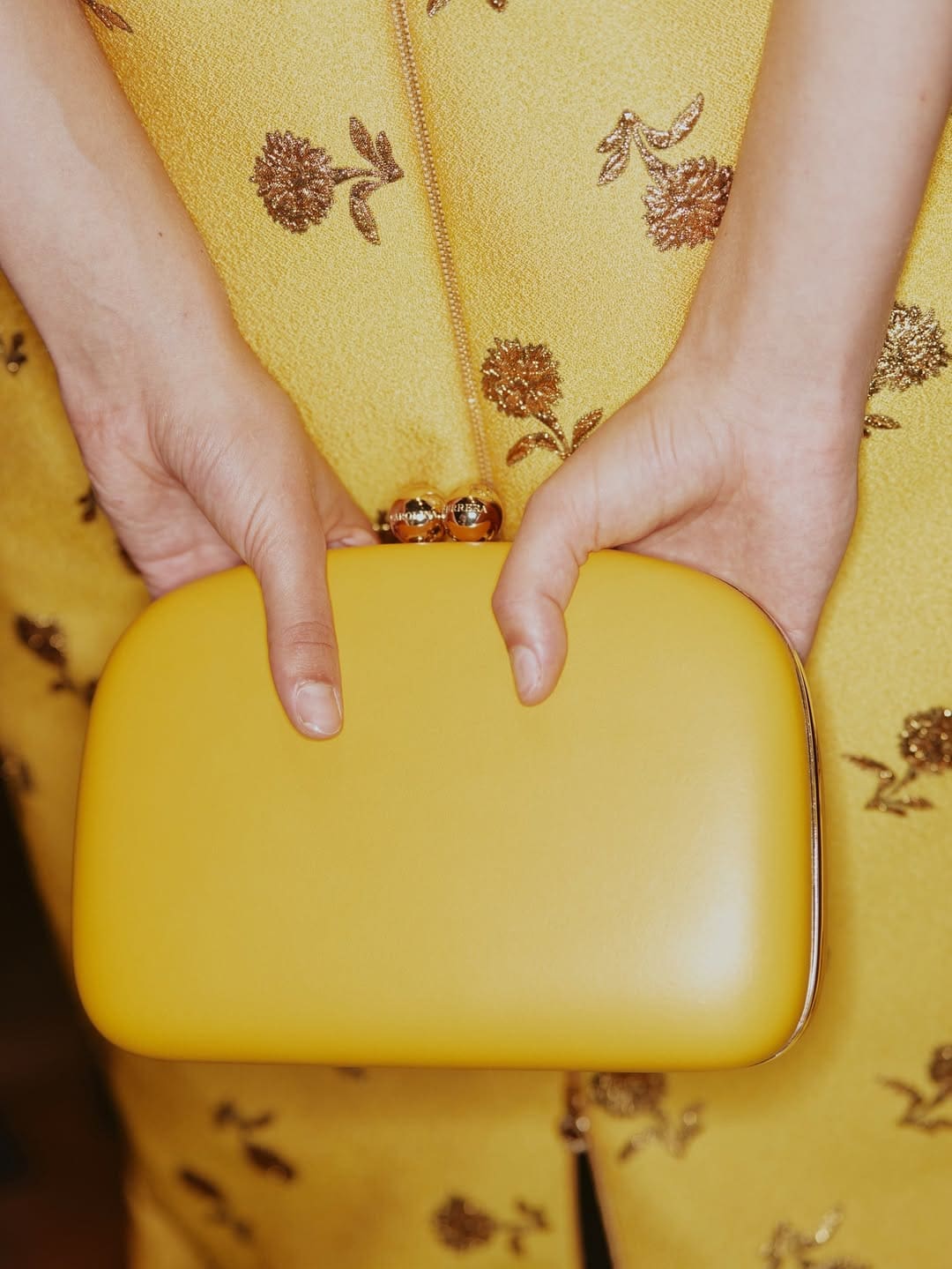
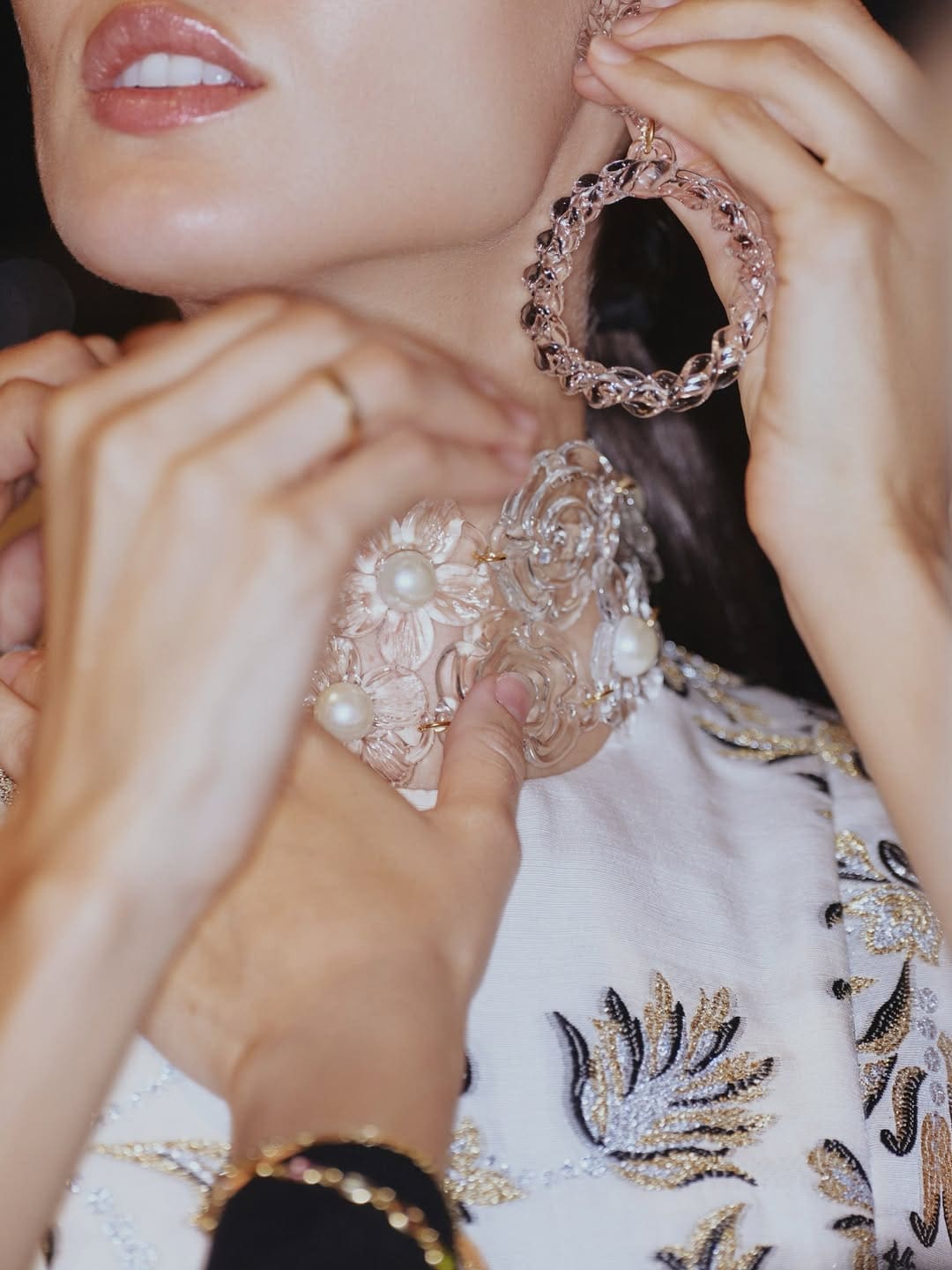
The Language of Flowers
Carolina Herrera’s archive is inseparable from florals, and Gordon leaned into that legacy with a Spanish accent: roses, carnations, and violets. A cotton corseted dress layered over a crisp white shirt, embroidered in red carnations, encapsulated his seasonal thesis — heritage translated into a fresh, direct proposition. The finale, gilded embroideries in gold, confirmed his commitment to pushing textile craft to an opulent extreme.
Final Thought
In Madrid Gordon reached a level of confidence not always present in his earlier destination shows. The balance of theater and restraint, heritage and modernity, was better judged. This was not about staging a tourist postcard of Spain but engaging in a dialogue with its cultural codes — both imperial and insurgent. For Carolina Herrera, a house often caught between elegance and relevance, Spring Summer 2026 in Madrid suggested it may be possible to hold both at once.
With Spring Summer 2026, Wes Gordon stepped beyond homage. He constructed a framework in which history, politics, and craft converged. Carolina Herrera, often burdened by the politeness of “elegance,” was given a sharper toolset: a new silhouette for a house that is finally speaking with authority.
This was not about Spain as a location. It was about Spain as a structure. Gordon studied it, entered it, and reassembled it in Herrera pink.
See All Looks Carolina Herrera Spring Summer 2026
